


“Sea is an ancient language that I cannot succeed to decipher˝
Jorge Luis Borges
«El mar es un antiguo lenguaje que ya no alcanzo a descifrar»
Jorge Luis Borges

PHOTOGRAPHY: PEXELS.COM

“Thousands have lived without love, not one without water˝
Wystan Hugh Auden
«Miles de personas han sobrevivido sin amor; ninguna sin agua»
Wystan Hugh Auden
“The sea has no roads, the sea is without explanation˝
Alessandro Baricco
«El mar no tiene caminos, el mar no tiene explicaciones»
Alessandro Baricco

Don’t be a shadow
Materialize yourself by subscribing to OTWO

This volume was published in June 2022 by Oxygene Ltd.
OTWO Iss ue 35
Oxygene Ltd.Business Centre.
19 George´s Lane.
GX11 1AA, Gibraltar
Tel. +00350 54001271
www.oxygenecommunications.com
© Publishing:
Oxygene Ltd.
Vanessa Byrne
Managing & Commercial Director
Juanjo Trujillo
Creative Director & Chief Designer
Sarah Birch
Columnist & Translation
Photographer: Victorrocha, Vanesssa Byrne, Nautilus Project, Clubhouse Gibraltar, Félix Ríos Jiménez, J. Sebastián
Torres, Ainara Martínez, Pexels, Anthony Pitaluga, Juan Luis González, In2adventures, Proema, Yvette De la Rosa, Ebikes Gibraltar, Raquel Collante.
Cover photo: Lucie Liz.
Back Cover photo: Rachel Claire.
Printing:
Santa Teresa Industrias Graficas SA
All rights reserved. No part of this publication may be reproduced, stored in a retrieval system or transmitted in any form or by any means, electronic, mechanical, photocopying, recording or otherwise, without the prior permission in writing from the publishers.
16
Collection “The flower of the month”.
Colección “La flor del mes”.
20
Shorts
26
Land snails in Gibraltar: diversity and abundance.
Los caracoles terrestres en Gibraltar: diversidad y abundancia.
No seas sombra.
Materialízate suscribiéndote a OTWO. Además, es gratis.
All rights reserved. ISSN 2633-7401
42
Fair traveler of Amarytierra. Chapter 5. Viajante de Amarytierra. Capítulo 5.
64 Gibraltar-Bordeaux 10: Bilbao.
84
Narrowing the Strait. Estrechando el Estrecho.
www.otwomag.com

106 Clubhouse Minds
108 Nature´s Way
110 Nosha´s Corner
112 Quick Guide
115 Experiences



OTWO 35 2022 001
Plus, it’s free.
Editorial 10

This is not an editor’s note
Juanjo Trujillo | Creative Director
Keep it a secret from her. I’m taking advantage of our General Director Vanessa’s journey to Sanlcar la Mayor, Seville, to renew our partnership with the Association of Andalusia Environmentalists (Coamba) to write this editorial. She knows how pleased it makes me; I’ve always wanted to tell my nonexistent grandchildren that I dared to write this essential page of my beloved magazine once -or twice-. As a result, beginning with the next issue, we will publish her reports from this major institution on the most topical environmental topics.
I take this opportunity on behalf of the entire OTWO Magazine team to congratulate our most luminous and well-traveled contributor, Ainara Martinez, for her new motherhood, and in just a couple of months, we will again enjoy her lyricism. We send you a backpack full of hugs and kisses.
I would also like to comment on the colophon offered by this incorrigible iconoclast who goes by the name of Juanlu González in his last installment of this second volume of “Estrechando el Estrecho”. He deconstructs history as a lie to place it in the space of myth; this intellectual exercise is as hygienic as it is necessary. Moreover, it assures me that volume three will come with the color green as a flag.
Equally surprising is the report that Alfredo Valencia and Felix Ríos give us on land snails in Gibraltar, a hymn to the variety and abundance of biodiversity in this area.
I feel melancholy because our round trip between Gibraltar and Bordeaux is coming to an end, one more issue in July and that’s it. In the August issue we will give all our readers an exclusive interview with the author, Anthony Pitaluga. It doesn’t get any more rapturous than that. As this excerpt from this month’s feature demonstrates: “I still don’t know why the effect produced by these eerie combinations of water and light made me think of Gotham City, with its gothic cathedral, home of Batman”. I have never seen Bilbao described in this twilight and cinematic way.
And before Vanessa arrives, I want to show my appreciation to the solidarity bravery of Clubhouse Gibraltar, because each issue is a declaration of social commitment, to Dr. Owen Wiseman for guiding us on this path of nature in such an informative and innovative way, to the hatching of flavors that we savor every month with Yvette De la Rosa and her healthy and exuberant recipes -impossible to improve those photographs- and to Sarah Birch for the continuous exercise of concretion and analysis to put the world at a page’s reach.
Finally, I’ll reveal a little secret. As we gain more worldwide reputation, our readership grows, and the academic quality of our contributions rises, we are working on a conceptual and graphic overhaul of OTWO Magazine.
I hear Vanessa walk in the door, so I’m wrapping up. See you in 36.
11 10
ILLUSTRATION: JUANJO TRUJILLO
OTWO 35 / JUNE 2022
Esta no es una nota de la editora
Juanjo Trujillo | Director Creativo
Que no se entere. Aprovecho que nuestra Directora General Vanessa se ha ido de viaje a Sanlúcar la Mayor, en Sevilla, para renovar el acuerdo con el Colegio de Ambientólogos de Andalucía (Coamba) para escribir este editorial. Ella sabe que me hace ilusión, siempre quise contarle a mis inexistentes nietos que una vez —o dos—me atreví a redactar esta página tan importante de mi querida revista. Así que a partir del próximo número retomaremos sus reportajes de esta importante organización sobre las áreas más interesantes del medioambiente.
Y aprovecho en nombre de todo el equipo de OTWO Magazine para felicitar a nuestra colaboradora más luminosa y viajera, Ainara Martínez, por su recién estrenada maternidad, y en apenas un par de meses, de nuevo disfrutaremos de su lirismo. Te enviamos una mochila llena de besos y abrazos.
También quiero comentar el colofón que nos ofrece este incorregible iconoclasta que responde al nombre de Juanlu González en su última entrega de este segundo volumen de «Estrechando el Estrecho». Deconstruye la historia como mentira para situarla en el espacio del mito, este ejercicio intelectual es tan higiénico como necesario. Además me asegura de que el volumen tres vendrá con el color verde como bandera.
Igual de sorprendente es el reportaje que nos regalan Alfredo Valencia y Felix Ríos sobre los caracoles terrestres en Gibraltar, todo un canto a la variedad y la abundancia de la biodiversidad en esta zona.
Siento melancolía por que nuestro viaje de ida y vuelta entre Gibraltar y Burdeos está llegando a su fin, una entrega más en julio y se acabó. En el número de agosto le regalaremos a todas nuestras lectoras y lectores una exclusiva entrevista con el autor, Anthony Pitaluga. Más arrebatador es imposible. Lo demuestra este entresacado del reportaje de este mes: «Aún no sé por qué el efecto producido por estas inquietantes combinaciones de agua y luz me hizo pensar en Gotham City, con su catedral gótica, hogar de Batman». Nunca he visto describir a Bilbao de esta manera tan crepuscular y cinematográfica.
Y antes de que llegue Vanessa quiero mostrar mi reconocimiento a la valentía solidaria de Clubhouse Gibraltar, porque cada entrega suya es una declaración de compromiso social, al Dr. Owen Wiseman por guiarnos en este camino de naturaleza de manera tan divulgativa como innovadora, a la eclosión de sabores que todos los meses saboreamos con Yvette De la Rosa y sus recetas sanas y exuberantes —imposible mejorar esas fotografías—y a Sarah Birch por el continuo ejercicio de concreción y análisis para ponernos al mundo a tiro de página.
Y para terminar os cuento un secreto. Estamos trabajando en un rediseño conceptual y gráfico de OTWO Magazine, ya que cada vez tenemos más reconocimientos internacionales, crecen nuestros lectores y aumentamos el nivel académico de los colaboradores. Oigo a Vanessa entrar por la puerta, así que pongo el punto final. Nos vemos en el 36.
ILLUSTRATION: JUANJO TRUJILLO
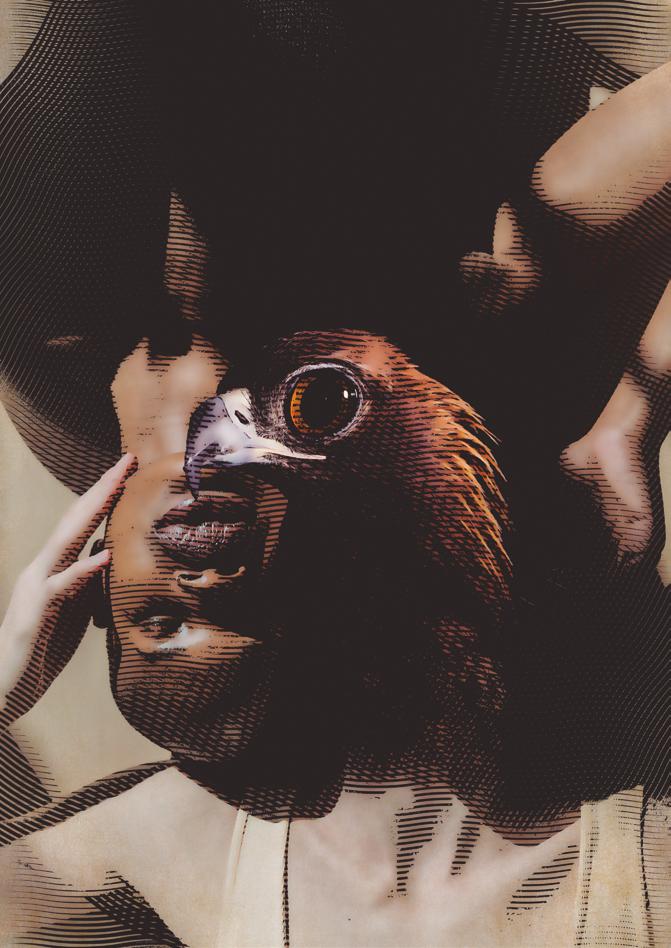
12
OTWO 35 / JUNE 2022


 Dr Keith Bensusan Director
Dr Keith Bensusan Director
MAY / Mayo
Collection “The flower of the month”
African Lily
Gibraltar Botanic Gardens, The Alameda.
Agapanthus praecox. Lirio africano.
South African bulbs make excellent additions to the Mediterranean garden: they tend to be waterwise and are usually quite spectacular when in flower. The African Lily or Lily of the Nile is a popular garden plant in Mediterranean climates around the world. Its peak flowering period in the Mediterranean itself is June, when its beautiful blue umbels adorn planted areas. The species does best in full sunlight and well-drained soil. Its status as a native to South Africa is unsurprising: so many of our most showy and drought-resistant garden plants are denizens of the Cape region and adjacent areas further east along the seasonally cool South African coast. The African Lily looks like a very spectacular version of the garlics, onions and leeks, in the genus Allium. This is not surprising given their relatedness: it belongs to the family Amaryllidaceae, which includes a wide range of bulbous plants including the genera Amaryllis in South Africa, and Allium and Narcissus in the Mediterranean, the latter including the Daffodils. A similar species, Agapanthus africanus, is a little smaller than A. praecox and not as easy to grow in cultivation. In particular, its preference for acid soil makes Gibraltar less well-suited for it.
Los bulbos sudafricanos son una excelente adición al jardín mediterráneo: suelen ser resistentes al agua y suelen ser bastante espectaculares cuando florecen. El lirio africano o lirio del Nilo es una planta de jardín muy popular en los climas mediterráneos de todo el mundo. Su periodo de máxima floración en el Mediterráneo es junio, cuando sus hermosas umbelas azules adornan las zonas plantadas. La especie se desarrolla mejor a pleno sol y en suelos bien drenados. Su condición de nativa de Sudáfrica no es sorprendente: muchas de nuestras plantas de jardín más vistosas y resistentes a la sequía son habitantes de la región del Cabo y de zonas adyacentes más al este, a lo largo de la costa sudafricana estacionalmente fría. El lirio africano parece una versión muy espectacular de los ajos, las cebollas y los puerros, del género Allium. Esto no es sorprendente dado su parentesco: pertenece a la familia Amaryllidaceae, que incluye una amplia gama de plantas bulbosas, entre las que se encuentran los géneros Amaryllis en Sudáfrica, y Allium y Narcissus en el Mediterráneo, este último incluye los narcisos. Una especie similar, el Agapanthus africanus, es un poco más pequeña que el A. praecox y no es tan fácil de cultivar. En particular, su preferencia por los suelos ácidos hace que Gibraltar sea menos adecuado para ella.
16
17
OTWO 35 / JUNE 2022 OTWO 35 / JUNE 2022
Photographs: Victorrocha


SEGREGATED FOOTPATH TO BE INSTALLED ON PRINCE EDWARD’S ROAD

The Ministry of Transport has announced plans to introduce a safer walking route along Prince Edward’s Road.
The western section of the road from Hargraves football pitch to Forty Steps will benefit from a segregated footpath, allowing pedestrians to enjoy safe passage along the narrow and busy road. It will also connect the area with existing footpaths in the Upper Town and create safer walking routes to schools and clubs.
Works to resurface and install bollards on the southern section of the new path began on the 9th of May. The northern section will follow, with more bollards installed to segregate the footpath. Finally, the central section will be completed once construction works finish at 73 Prince Edward’s Road.
The project is part of recommendations outlined within the Sustainable Traffic, Transport and Parking Plan (STTPP), to provide adequate pedestrian route enhancements throughout Gibraltar and encourage people to walk more. The scheme will be assessed once implemented and reviewed if further improvements are required.
In a press release, the Minister for Transport, the Hon Paul Balban, said: “Providing safe infrastructure for pedestrians is of vital importance if we are to succeed in encouraging alternative modes of mobility. For most trips, especially within the upper town, where parking is very limited, walking is the quickest and most convenient. The pedestrian is the most vulnerable of road users and this road is very busy and very narrow as a result of parked cars. This area is frequented by parents and children who use the dance clubs and football facilities. I am pleased to be able to increase pedestrian safety along Prince Edward’s Road which I am sure will be greatly welcomed by everyone who frequents this area”.
Se instalará una senda peatonal segregada en Prince Edward’s Road
El Ministerio de Transportes ha anunciado planes para introducir una ruta peatonal más segura a lo largo de Prince Edward’s Road.
El tramo occidental de la carretera, desde el campo de fútbol de Hargraves hasta Forty Steps, se beneficiará de una senda peatonal segregada, que
permitirá a los peatones disfrutar de un paso seguro por la estrecha y transitada carretera. También conectará la zona con los senderos existentes en la parte alta de la ciudad y creará rutas más seguras para ir a pie a los colegios y clubes.
Las obras de repavimentación e instalación de bolardos en el tramo sur del nuevo sendero comenzaron el 9 de mayo. A continuación, se instalarán más bolardos en el tramo norte para separar el sendero. Por último, el tramo central se completará una vez que finalicen las obras de construcción en el número 73 de Prince Edward’s Road. El proyecto forma parte de las recomendaciones del Plan de Tráfico, Transporte y Aparcamiento Sostenibles (STTPP), para mejorar las rutas peatonales en todo Gibraltar y animar a la gente a caminar más. El proyecto se evaluará una vez implementado y se revisará si se requieren más mejoras. En un comunicado de prensa, el Ministro de Transporte, el Honorable Paul Balban, dijo: «Proporcionar una infraestructura segura para los peatones es de vital importancia si queremos tener éxito en el fomento de modos de movilidad alternativos. Para la mayoría de los desplazamientos, especialmente en la parte alta de la ciudad, donde el aparcamiento es muy limitado, caminar es lo más rápido y conveniente. El peatón es el más vulnerable de los usuarios de la vía pública y esta calle es muy transitada y muy estrecha como consecuencia de los coches aparcados. Esta zona es frecuentada por padres y niños que utilizan los clubes de baile y las instalaciones de fútbol. Me complace poder aumentar la seguridad de los peatones a lo largo de Prince Edward’s Road, lo que estoy seguro de que será muy bien acogido por todos los que frecuentan esta zona».

ATMOSPHERIC CO2 HITS HIGHEST LEVEL IN RECORDED HISTORY
New data collected by Hawaii’s Mauna Loa Observatory and released by the National Oceanic and Atmospheric Administration (NOAA) has revealed that average monthly carbon dioxide (CO2) levels have reached an all-time high.
When CO2 data was first collected from Mauna Loa in 1958, the highest monthly level was just 317.51 parts per million (ppm). Twenty years ago, the
highest monthly level was 375.93 ppm. But last May, CO2 levels were 419.13 ppm for the first time since records began.
CO2 levels have always fluctuated naturally throughout the year. For example, as the summer season begins, atmospheric CO2 is lower due to increased plant growth pulling more carbon from the atmosphere.
But since industrialisation began, vast amounts of carbon emissions from energy production, industry and other sources have been pumped into our atmosphere, increasing CO2 levels at an alarming rate. Some climate scientists have called for CO2 levels to be drastically reduced to 350 ppm to avoid 1.5C warming.
NOAA has also stated that “the annual rate of increase in atmospheric carbon dioxide over the past 60 years is about 100 times faster than previous natural increases, such as those that occurred at the end of the last ice age 11,000-17,000 years ago”.
Despite the dire warning of climate catastrophe, a global pandemic, and now skyrocketing fuel costs, greenhouse gas emissions, including CO2, continue to increase. The IPCC has warned that “limiting warming to around 1.5C requires global greenhouse gas emissions to peak before 2025 at the latest”.
El CO2 atmosférico alcanza el nivel más alto de la historia
Nuevos datos recogidos por el Observatorio Mauna Loa de Hawai y publicados por la Administración Nacional Oceánica y Atmosférica (NOAA) han revelado que los niveles medios mensuales de dióxido de carbono (CO2) han alcanzado un máximo histórico.
Cuando se recogieron por primera vez datos de CO2 en Mauna Loa en 1958, el nivel mensual más alto era de sólo 317,51 partes por millón (ppm). Hace veinte años, el nivel mensual más alto era de 375,93 ppm. Pero el pasado mes de mayo, los niveles de CO2 fueron de 419,13 ppm por primera vez desde que se iniciaron los registros.
Los niveles de CO2 siempre han fluctuado de forma natural a lo largo del año. Por ejemplo, al comenzar la temporada de verano, el CO2 atmosférico es más bajo debido al mayor crecimiento de las plantas que extraen más carbono de la atmósfera.
Pero desde que comenzó la industrialización, se
20 OTWO 35 / JUNE 2022 OTWO 35 / JUNE 2022 21

han bombeado a la atmósfera enormes cantidades de emisiones de carbono procedentes de la producción de energía, la industria y otras fuentes, lo que ha aumentado los niveles de CO2 a un ritmo alarmante.
Algunos científicos del clima han pedido que los niveles de CO2 se reduzcan drásticamente a 350 ppm para evitar un calentamiento de 1,5C.
La NOAA también ha declarado que «el ritmo anual de aumento del dióxido de carbono atmosférico en los últimos 60 años es unas 100 veces más rápido que los aumentos naturales anteriores, como los que se produjeron al final de la última edad de hielo hace 11.000-17.000 años».
A pesar de la terrible advertencia de una catástrofe climática, de una pandemia mundial y de que ahora los costes de los combustibles se han disparado, las emisiones de gases de efecto invernadero, incluido el CO2, siguen aumentando. El IPCC ha advertido que «para limitar el calentamiento a alrededor de 1,5C es necesario que las emisiones mundiales de gases de efecto invernadero alcancen su punto máximo antes de 2025, a más tardar».

TNP LAUNCHES NEW YOUTH PROGRAMME
The Nautilus Project launched its new youth programme in May inspired by The Duke of Edinburgh’s International Award Gibraltar.
The new programme launched with last year’s Nautilus bronze Duke of Edinburgh Award participants presented with their certificates for completing their service with TNP.
Through the Nautilus Project, participants from the Duke of Edinburgh Bronze, Silver and Gold Awards have attended various educational workshops and talks, taken part in beach cleaning activities and gone on scuba diving and snorkelling outings around Gibraltar’s coastline.
TNP took to social media to congratulate the participants and share photos of the day.
“It was an absolute honour to kickstart with last year’s Nautilus bronze DofE participants for completing their service with us.
“Not only did they log their required hours, they went over and beyond the call of duty and we’re delighted that they continue their Silver DofE journey with us.
“With 11 levels (and growing) to achieve, we are

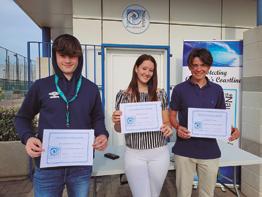

23 22
OTWO 35 / JUNE 2022 OTWO 35 / JUNE 2022
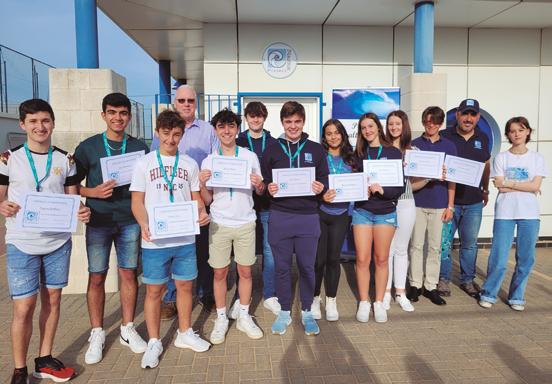
in no doubt that this capable group of teenagers will acquire them all and more!
“A credit to Gibraltar, The Nautilus Project, The Duke of Edinburgh’s International Award, their parents and teachers!
TNP also wished all of the participants luck for their upcoming GCSE exams and thanked Paul Lyon for giving out the awards, the Gibraltar Sports & Leisure Authority for the space allocated and OTWO magazine for designs created.
El TNP lanza un nuevo programa para jóvenes
El Proyecto Nautilus lanzó en mayo su nuevo programa para jóvenes inspirado en el Premio Internacional del Duque de Edimburgo en Gibraltar.
El nuevo programa se puso en marcha con la entrega de los certificados a los participantes del Premio Duque de Edimburgo de bronce del año pasado por haber completado su servicio con el TNP.
A través del Proyecto Nautilus, los participantes de los Premios Duque de Edimburgo de Bronce, Plata y Oro han asistido a diversos talleres y charlas educativas, han participado en actividades de limpieza

CLUBHOUSE GIBRALTAR RECEIVE FULL SUPPORT FROM THE GHA AND CARE AGENCY FOR MENTAL HEALTH WEEK 2022
As part of the events organised for Mental Health Week 2022, Clubhouse Gibraltar held an information stall at the Piazza on the 11th of May to further mental health awareness in the community and share information about the charity’s services.
Other events throughout the week included ‘Wear Green Day’ on the 13th of May, where local organisations and the public were asked to wear green to show support and help spread mental health awareness, and a ‘Wellness Route’ held on the 14th of May.
Clubhouse Gibraltar received support from its members, the GHA and the Care Agency. Both the GHA and Care Agency participated and supported the event and are working closely with Clubhouse Gibraltar for the benefit of its members, service-users and the community to provide better services and support for people affected by mental health problems.
The theme of this year’s Mental Health Week is ‘Loneliness’. In a press release, Clubhouse Gibraltar
described why they chose the theme, “Loneliness affects millions of people and is a key driving many people to poor mental health. During the Covid pandemic, loneliness has been exacerbated due to isolation and restrictions to keep everyone safe.
“Our aim for the week is to raise awareness of how loneliness impacts our mental wellbeing and practical steps that we can take to address it.
“The interest shown by the members of the public and the support received from the community was very impressive.
“The key message from Clubhouses all over the world is ‘WE ARE NOT ALONE’”.
If you are feeling lonely or need any other mental health support, you can contact Clubhouse Gibraltar at +350 200 68423 or email: admin@clubhousegibraltar.com
El Clubhouse Gibraltar recibe todo el apoyo de la GHA y de la Care Agency para la Semana de la Salud Mental 2022
Como parte de los eventos organizados para la Semana de la Salud Mental 2022, el Clubhouse Gi-
de playas y han realizado excursiones de buceo y snorkel por la costa de Gibraltar.
El TNP ha acudido a las redes sociales para felicitar a los participantes y compartir fotos de la jornada.
«Fue un honor absoluto comenzar con los participantes del DofE de bronce del Nautilus del año pasado por completar su servicio con nosotros».
«No sólo registraron sus horas requeridas, sino que fueron más allá de la llamada del deber y estamos encantados de que continúen su viaje DofE de plata con nosotros».
Con 11 niveles (y en aumento) por alcanzar, no nos cabe duda de que este capaz grupo de adolescentes los adquirirá todos y más.
«¡Un crédito para Gibraltar, el Proyecto Nautilus, el Premio Internacional del Duque de Edimburgo, sus padres y profesores! ».
TNP también deseó suerte a todos los participantes para sus próximos exámenes GCSE y agradeció a Paul Lyon por entregar los premios, a la Autoridad de Deportes y Ocio de Gibraltar por el espacio asignado y a la revista OTWO por los diseños creados.

25 24 OTWO 35 / JUNE 2022 OTWO 35 / JUNE 2022

braltar montó un puesto de información en la Piazza el 11 de mayo para fomentar la concienciación sobre la salud mental en la comunidad y compartir información sobre los servicios de la organización benéfica.
Otros eventos celebrados a lo largo de la semana incluyeron el «Día de vestirse de verde» el 13 de mayo, en el que se pidió a las organizaciones locales y al público que se vistieran de verde para mostrar su apoyo y ayudar a difundir la concienciación sobre la salud mental, y una «Ruta del bienestar» celebrada el 14 de mayo.
El Clubhouse Gibraltar recibió el apoyo de sus miembros, la GHA y la Care Agency. Tanto la GHA como la Care Agency participaron y apoyaron el evento y están trabajando estrechamente con el Clubhouse Gibraltar en beneficio de sus miembros, los usuarios de los servicios y la comunidad para proporcionar mejores servicios y apoyo a las personas afectadas por problemas de salud mental.
El tema de la Semana de la Salud Mental de este año es «La soledad». En un comunicado de prensa, el Clubhouse Gibraltar describió por qué eligieron el tema: «La soledad afecta a millones de personas y es una de las claves que lleva a muchas personas a tener una mala salud mental. Durante la pandemia de Covid, la soledad se ha exacerbado debido al aislamiento y a las restricciones para mantener a todos a salvo».
«Nuestro objetivo para la semana es concienciar sobre el impacto de la soledad en nuestro bienestar mental y las medidas prácticas que podemos tomar para afrontarla».
«El interés mostrado por los miembros del público y el apoyo recibido de la comunidad fue muy impresionante».
El mensaje clave de los Clubes de todo el mundo es «NO ESTAMOS SOLOS».
Si se siente solo o necesita cualquier otro tipo de apoyo en materia de salud mental, puede ponerse en contacto con el Clubhouse Gibraltar en el teléfono +350 200 68423 o en el correo electrónico: admin@ clubhousegibraltar.com.
coming weeks to spread awareness and show just how much support there is for safer cycling conditions in Gibraltar.
A total of 30 companies have joined the campaign for sustainable mobility to encourage more people to use alternative modes of transport and help decrease traffic congestion in Gibraltar.
In a statement, OTWO said, “We are hoping that the increase of educational and promotional initiatives will see an increase in sustainable transport and infrastructure locally. It is great to see so many local companies support the campaign. We hope to increase the number of adverts for the campaign in the coming months.”
OTWO would like to thank all the local organisations for supporting the campaign. The businesses and organisations supporting safer cycling are: Anglo-Hispano, Bland Group, Chestertons, BMI Group Estate Agents, Eroski, Hassans, The Nautilus Project, Drone Air, Ibex Insurance, EBike Gibraltar, EVG, Rock Water Coolers, Ocean Village, Soul Kitchen, Electricon, Triay Lawyers, AMA Services LTD, 14K Stores, Shine Easy, Sign It, Bike Zoo, Cycle Centre, Trusted Novus Bank, GibFibre, Isolas, Corks Bar & Restaurant, TSN Barristers & Solicitors, NP Estates, BFA and DHL.
La promoción “Safer Cycling” aparecerá en el transporte público de Gib a partir de junio
OTWO ha colaborado con empresas locales para promover el transporte sostenible en el Peñón. En las próximas semanas aparecerán carteles promocionales en los autobuses de Gibraltar para dar a conocer y mostrar el apoyo que existe a unas condiciones más seguras para el uso de la bicicleta en Gibraltar.
Un total de 30 empresas se han unido a la campaña en favor de la movilidad sostenible para animar a más personas a utilizar modos de transporte alternativos y ayudar a disminuir la congestión del tráfico en Gibraltar.
OTWO has collaborated with local businesses to promote sustainable transport on the Rock. Promotional posters will appear on Gibraltar’s buses in the
En un comunicado, OTWO dijo: “Esperamos que el aumento de las iniciativas educativas y promocionales haga aumentar el transporte y las infraestructuras sostenibles a nivel local. Es estupendo ver que tantas empresas locales apoyan la campaña. Esperamos aumentar el número de anuncios de la campaña en los próximos meses”.

26
SAFER CYCLING PROMOTION TO APPEAR ON GIB PUBLIC TRANSPORT FROM JUNE
OTWO 35 / JUNE 2022 OTWO 35 / JUNE 2022 27

OTWO quiere agradecer a todas las organizaciones locales su apoyo a la campaña. Las empresas y organizaciones que apoyan el ciclismo seguro son: Anglo-Hispano, Bland Group, Chestertons, BMI Group Estate Agents, Eroski, Hassans, The Nautilus Project, Drone Air, Ibex Insurance, EBike Gibraltar, EVG, Rock Water Coolers, Ocean Village, Soul Kitchen, Electricon, Triay Lawyers, AMA Services LTD, 14K Stores, Shine Easy, Sign It, Bike Zoo, Cycle Centre, Trusted Novus Bank, GibFibre, Isolas, Corks Bar & Restaurant, TSN Barristers & Solicitors, NP Estates, BFA y DHL.

OTWO AND COAMBA WILL CONTINUE TO COLLABORATE FOR THE DEFENSE OF OUR ENVIRONMENT
OTWO is pleased to announce a new collaborative agreement with COAMBA (Andalusian College of Environmentalists). After a successful year working together, OTWO has renewed its agreement with COAMBA to continue sharing its vision of a sustainable future. On Tuesday, May 17, Vanessa Byrne, Director of OTWO, met with Rosario Vargas, President of COAMBA, at the Sanlúcar la Mayor City Hall, in Seville, to sign the renewal of the annual agreement.
COAMBA is a representative professional organization of Andalusian environmentalists and over the last twelve months, COAMBA has offered us interesting informative reports on the different areas of environmental sciences.
Vanessa Byrne said: “It is an honor to continue our collaboration and share the indispensable work that COAMBA does in Andalusia. We are excited about working together in these next twelve months and look forward to going even further.”
OTWO y COAMBA seguirán colaborando en defensa del medioambiente
OTWO se complace en anunciar un nuevo acuerdo colaborativo con COAMBA (Colegio de Ambientólogos de Andalucía). Tras un exitoso año de trabajo conjunto, OTWO ha renovado su acuerdo con COAMBA para seguir compartiendo su visión de un futuro sostenible.
El pasado martes 17 de mayo, Vanessa Byrne, directora general de OTWO, se reunió con Rosario Vargas presidenta de COAMBA en el Ayuntamiento de Sanlúcar la Mayor, en Sevilla, para firmar la renovación del acuerdo anual.
COAMBA es un organismo profesional representativo de los ambientólogos andaluces y a lo largo de los últimos doce meses, COAMBA nos ha ofrecido interesantes reportajes divulgativos sobre las diferentes áreas de las ciencias ambientales.
La directora general de OTWO, Vanessa Byrne, dijo: «Es un honor continuar nuestra colaboración y compartir el indispensable trabajo que COAMBA hace en Andalucía. Estamos deseando trabajar juntas durante los próximos doce meses y esperamos llegar incluso mucho más allá”.

28 OTWO 35 / JUNE 2022
OTWO 35 / JUNE 2022 29
The Senegal Appeal
Help us to Help Them!!
#reuse#savingourenviroment#sustainability#letsturnthisaround #recycle#greenchoice#earthmatters
Since 2015 we are very proud to say that Metalrok Ltd has been providing Gibraltar with a Recycling Service at the premises delivered by the government of Gibraltar Ecopark which is a joint public and private partnership located at 8 Flint Road. There has been an increase in Recycling but even so our daily waste stream contains goods which are perfectly suited to be reused not been recycled ending up in the landfill polluting the environment.
Together we can turn this around by reusing, preventing pollution, reducing usage of raw materials, sustaining the environment for future generations thus preventing them from ending in landfill and sea.
There is a need for these items in places like Senegal in West Africa were there are areas of extreme Poverty. with your cooperation we would like to meet their necessities by helping to provide them with donated unwanted items like:
All Clothing, Furniture inc Mirrors, Linen, household items, toys, office equipment, medical equipment electro domestics, bicycles, scooters, books. Car seats, doors windows, sinks, Showers, toilets.
We are collecting items that are still good for purpose and in usable condition in a bid to give them a new lease of life. Kindly take note that we will not make ourselves responsible for the collection of broken down items. The circumstances these people unfortunately live in deserve a sense of dignity and pride. Please only get in touch for items that will enhance and enrich their livelihoods.
Drop of points are:
Nanot Ltd 27 New Harbours: Mon To Fri from 10am to 3pm.
Ecopark 8 Flint Road: every day from 8am to 8pm.
Collections Mon to Fri 5pm to 7pm pre booked only ( Sat only Prebooked) this may change depending on demand. Is limited to more than 5 bags or large items only please send pics post collection.
WATSAPP ONLY: No 00350 56003361

Land snails in Gibraltar: diversity and abundance
Los caracoles terrestres en Gibraltar: diversidad y abundancia
Alfredo Valencia Pereira / Félix Ríos Jiménez
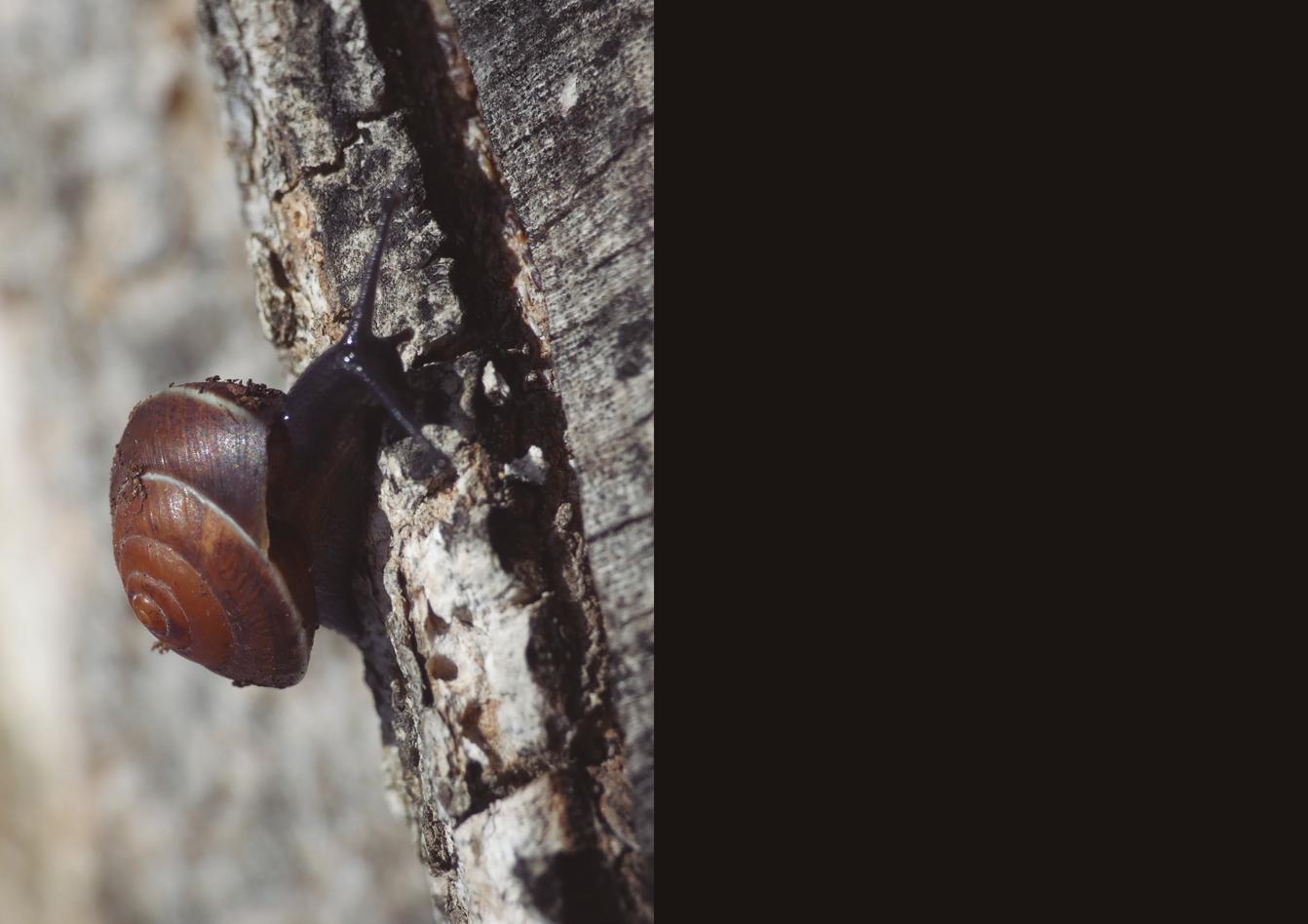
Gibraltar, with a surface area of roughly 6km2, has a mollusc richness that we don’t see in other territories with similar or even bigger surface areas.
There are 130 species of continental mollusks recognized in the province of Cadiz, whereas the region of Campo de Gibraltar, with an area of 1526.6 km2, includes 68 species, 40 of which are found in Gibraltar.
Several causes contribute to this diversity: it is biogeographically placed at the crossroads of three regions: Mauritanian, Lusitanian, and Mediterranean. Its geographic location, adjacent to the African continent and sandwiched between the Atlantic Ocean and the Mediterranean Sea, creates a number of highly distinct terrestrial microclimates.
Several factors are involved in this specific variety.
First, we must go back to the so-called Messinian Saline crisis, 6 million years ago, when the Atlantic was isolated and the Mediterranean was no longer a sea but an enormous desert. This favored many terrestrial species to travel from Europe to Africa and vice versa throughout that period, establishing themselves and adapting to new habitats. Here it is difficult to know which species were originally on one continent or the other.
Nowadays, it is maritime traffic and the transport of goods with plants and gardening products from other countries that have favored the establishment of species native to the territory. Another important vector is migratory birds, which carry between their feathers and legs species from the place they left. Finally, it is humans themselves who voluntarily or involuntarily bring these species, which do not always thrive due to their ecological requirements.
Gibraltar con una superficie aproximada de unos 6km² contiene una diversidad de moluscos que no encontramos en otros territorios con una superficie semejante o incluso superior a ella.
En la provincia de Cádiz se conocen un total de 130 especies de moluscos continentales, la Comarca del Campo de Gibraltar, con una superficie de 1526,6 km² tiene censadas 68 especies, de las cuales 40 están presentes en Gibraltar.
Esta diversidad es favorecida por varios factores: biogeográficamente se encuentra en la confluencia de tres regiones: Mauritana, Lusitana y Mediterránea. Su posición geográfica, próxima al continente africano y entre el océano Atlántico y el mar Mediterráneo, determinan una variedad de microclimas terrestres muy particulares.
En esta variedad específica intervienen varios factores. Primero hay que remontarse a la denominada crisis Salina del Messiniense, hace 6 millones de años, cuando quedó aislado el atlántico y el Mediterráneo dejó de ser un mar para convertirse en un enorme desierto. Esto favoreció que muchas especies terrestres viajaran de Europa a África y viceversa durante todo ese periodo, estableciéndose y adaptándose a nuevos hábitats. Aquí resulta difícil saber qué especies estaban originalmente en uno u otro continente.
En la actualidad, es el tráfico marítimo y el transporte de mercancías con plantas y productos de jardinería proveniente de otros países los que han favorecido la implantación de especies alóc-
OTWO 35 / JUNE 2022 33 32 OTWO 35 / JUNE 2022
Hygromia cinctella.
Photography: Félix Ríos.

However, for a species to become established in a territory, it must find conditions favorable to its ecological requirements. The lithology of the soil, the substrate, the climate, the vegetation and the altitude will determine the success of colonization of each one of them.
Gibraltar, unlike the surrounding terrain, the marl-sandy-micaceous flysch of the Campo de Gibraltar Units, is made up of carbonate materials of Jurassic age, where Jurassic calcareous materials predominate. But it also has an urban metropolis with numerous gardens artificially created by man.
The climate of the Strait is temperate, with mild and rainy winters and hot and sunny summers and contrasts with the microclimate of Gibraltar, humid and windy, protected from extreme cold and torrid heat, this makes it a gigantic microhabitat with a high presence of ecological niches. Its southern position and an altitude of 426 m.a.s.l. protects it from extreme temperatures, with an average winter temperature of 13° and 24° in summer, and rainfall of about 800 mm per year. All this has favored the high number of species found in Gibraltar.
In the area we find cosmopolitan species such as Cornu asperum. Others, such as Theba pisana, Otala lactea and Otala punctata, are native to North Africa and the Iberian Peninsula. We also find endemic species such as Iberus marmoratus, which is only found in the SW of the peninsula, or recently introduced species such as Hygromia cinctella, and even some species exclusive to the Rock of Gibraltar such as Rossmassleria scherzeri. In short, an extensive list with a story behind each one of them.
These are some of the most representative species that occupy the territory, both in its metropolitan area, its botanical garden, and in the Gibraltar Upper Rock Nature Reserve:
Acicula norrisi Gittenberger & Boeters, 1977
It is a unique endemism. In 2009 a new population was located in the fertile lowlands of the Genal River, specifically in the perimeter of the public fountain La Trocha, in the municipality of Genalguacil (Málaga), unfortunately, in the summer of 2015, works in the environment destroyed this small enclave with the possible disappearance of the species.
Platyla hedionda Torres Alba, 2012. It is another particular case, after its recent discovery in the ca-
tonas al territorio. Otro vector importante son las aves migratorias, que trasladan entre sus plumas y sus patas especies del lugar de donde partieron.
Y por último, es el propio ser humano el que hace llegar de forma voluntaria o involuntaria estas especies, que no siempre prosperan debido a sus exigencias ecológicas.
Pero para que una especie se establezca en un territorio es necesario que encuentre las condiciones favorables a sus exigencias ecológicas. La litología del suelo, el sustrato, el clima, la vegetación y la altitud determinarán el éxito de colonización de cada una de ellas.
Gibraltar, a diferencia del terreno que le rodea, el flysch margo-areniscoso-micáceo de las Unidades del Campo de Gibraltar, está constituido por materiales carbonatados de edad jurásica, donde predominan los materiales calcáreos jurásicos. Pero también cuenta con una metrópoli urbana con numerosos jardines creados artificialmente por el hombre.
El clima del Estrecho es templado, con inviernos templados y lluviosos y veranos calurosos y soleados y contrasta con el microclima de Gibraltar, húmedo y ventoso, protegido del frío extremo y del calor tórrido, esto la convierte en un gigantesco microhábitat con una elevada presencia de nichos ecológicos. Su posición meridional y con una altitud de 426 m.s.n.m. la protege de temperaturas extremas, teniendo una temperatura media en invierno de 13° y de 24° en verano, y con unas precipitaciones de unos 800mm al año. Todo ello ha favorecido el elevado número de especies que encontramos en Gibraltar.
En la zona encontramos especies cosmopolitas como Cornu asperum. Otras, como Theba pisana, Otala lactea y Otala punctata, son originarias del norte de África y de la península ibérica. Encontramos también especies endémicas como Iberus marmoratus que sólo se encuentra en el SO de la península, o especies recién introducidas como Hygromia cinctella , incluso alguna especie exclusiva del Peñón de Gibraltar como Rossmassleria scherzeri. En definitiva un elenco extenso con una historia detrás de cada una de ellas.
Estas son algunas de las especies más representativas que ocupan el territorio, tanto en su
Oestophora calpeana.
Photography: J. Sebastián Torres.
34 OTWO 35 / JUNE 2022 OTWO 35 / JUNE 2022 35
Oestophora dorotheae.
Photography: J. Sebastián Torres.

nuto de la Utrera in Casares (Málaga), it was located in Gibraltar, in 2018, 30 km SW of its type locality, thus extending its range.
Cecilioides connollyi Tomlin, 1943. Since its description as a species new to science, it has not been found anywhere else, becoming a worldwide endemism and whose Locus typicus is Gibraltar.
Oestophora calpeana (Morelet, 1854). We could say that it is an Iberian-Riberian species, known in Morocco, Ceuta and Gibraltar, and it is in the latter, the only known population of the species in the entire Iberian Peninsula.
Oestophora dorotheae P. Hesse, 1930. It is an Ibero-Moroccan species that has been cited from Tarifa and Gibraltar. However, no living specimens or remains of their shells have been found. Its resemblance to Oestophora calpeana could be one of the causes, having been easily confused with the latter.
Iberus marmoratus (A. Fèrussac, 1821). It is endemic to the south of the Iberian Peninsula, is located in the provinces of Cadiz, Seville, Malaga and Granada. In Gibraltar, the specie is well established in the Upper Rock limestones.
Rossmassleria scherzeri (Zelebor, 1867). It is another old species, since it is known few are the citations that we have of it. It was cited and illustrated on several occasions; 1904, 1976 and 1982, however, it has gone unnoticed since then, being omitted from countless local and European lists. In 2006, its validity was discarded and it was considered a synonym of the previous species Iberus marmoratus, a species with which it cohabits and with which it shares much resemblance. The genus Rossmassleria is known from NW Morocco and it was necessary to make an in-depth study (2016) of the species of the same genus to be able to affirm that Rossmassleria scherzeri is not only a valid species, but also that it is an endemic species whose only population is only present in Gibraltar.
In addition to these very particular species, it is worth mentioning others that arrive mainly as stowaways in the traffic of goods and that some of them manage to establish themselves in the territory, colonizing small habitats that are favorable to them. Such is the case of Massylaea vermiculata (Müller, 1774), a circum-Mediterranean species that in the Iberian Peninsula extends over the eastern half and
área metropolitana, su jardín botánico, y en la Reserva Natural de Gibraltar Upper Rock: Acicula norrisi Gittenberger & Boeters, 1977 Se trata de un endemismo único. En el 2009 se localizó una nueva población en la vega del río Genal, concretamente en el perímetro de la fuente pública la Trocha, en el término municipal de Genalguacil (Málaga), lamentablemente, en el verano de 2015, unas obras en el entorno destruyeron este pequeño enclave con la posible desaparición de la especie. Platyla hedionda Torres Alba, 2012. Es otro caso particular, después de su reciente descubrimiento en el canuto de la Utrera en Casares (Málaga), se localizó en Gibraltar, en el año 2018, a 30 km al SW de su localidad tipo, con lo que se amplía su área de distribución.
Cecilioides connollyi Tomlin, 1943. Desde su descripción como especie nueva para la ciencia no se ha encontrado en ningún otro lugar, convirtiéndose en un endemismo a nivel mundial y cuya Locus typicus es Gibraltar.
Oestophora calpeana (Morelet, 1854). Podríamos decir que se trata de una especie ibero-rifeña, conocida en Marruecos, Ceuta y Gibraltar,y es en ésta última, la única población conocida de la especie en toda la península ibérica.
Oestophora dorotheae P. Hesse, 1930. Es una especie iberomarroquí que ha sido citada de Tarifa y Gibraltar. Sin embargo, no se han encontrado ejemplares vivos ni restos de sus conchas. Su parecido con Oestophora calpeana podría ser una de las causas, habiéndose confundido fácilmente con ésta última.
Iberus marmoratus (A. Fèrussac, 1821). Es endémica del sur de la península ibérica, se localiza en las provincias de Cádiz, Sevilla, Málaga y Granada. En Gibraltar la especie está bien asentada en las calizas de Upper Rock.
Rossmassleria scherzeri (Zelebor, 1867). Es otra especie antigua, desde que se conoce pocas son las citas que se tienen de ella. Fue citada e ilustrada en varias ocasiones; 1904, 1976 y 1982, sin embargo ha pasado desapercibida desde entonces, siendo omitida de las innumerables listas locales y europeas. En el 2006 fue descartada su validez y se consideró un sinónimo de la especie anterior Iberus marmoratus, especie con la que co-
OTWO 35 / JUNE 2022 37 36 OTWO 35 / JUNE 2022
has been introduced in the provinces of Cadiz and Malaga for food purposes.
Or the more recent Hygromia cinctella (Draparnaud, 1801), arrived in Gibraltar through the trade of ornamental plants, in this case Aptenia cordifolia, widely used in hedges and with very showy flowers.
Snails perform many functions in the environment where they live, in this case, they have a very varied diet, feeding on herbaceous plants, fungi, decaying matter, and they form the lower part of the food chain of other animals, being the link between plants (primary producers) and carnivores (consumers). They contribute to soil aeration and fertilization, and can be a good bio-indicator, providing data on pollutant concentrations through analysis. They participate in the pollination of some plants and disperse fungal spores. In addition, large ferns are consumed by humans. With this overview, we want to raise awareness about the importance of protecting the different habitats that we find around us, not only for the preservation of the environment in which the different species of fauna and flora develop, but also so that we can enjoy them for many years to come. For all these reasons, we can only say three things: KNOW, PROTECT and CONSERVE.
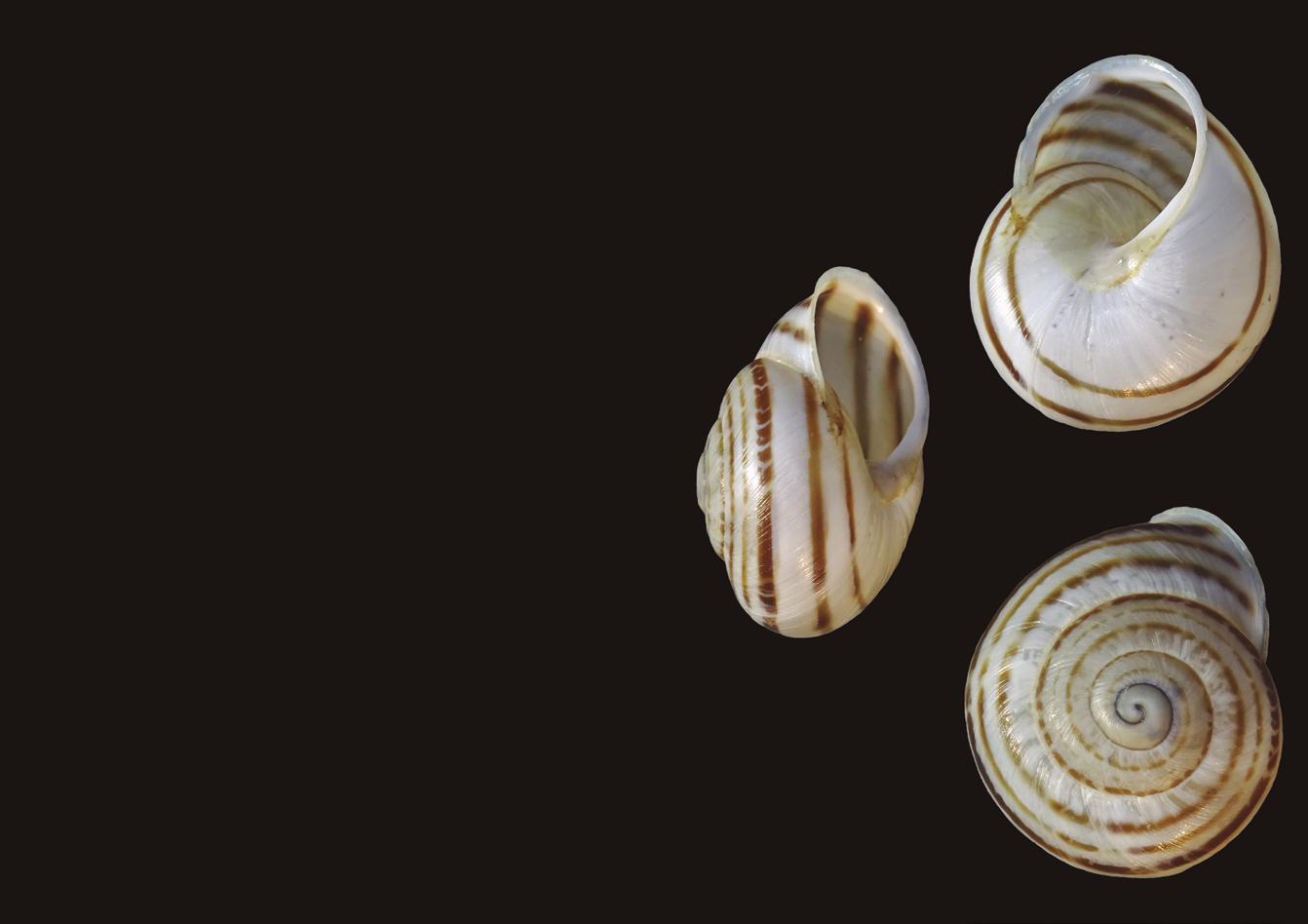
Platyla hedionda.
habita y con la que comparte mucho parecido. El género Rossmassleria es conocido del NO de Marruecos y fue necesario hacer un estudio en profundidad (2016) de las especies del mismo género para poder afirmar que Rossmassleria scherzeri no sólo es una especie válida sino que además se trata de una especie endémica cuya única población sólo está presente en Gibraltar.
Además de estas especies tan particulares, cabría reseñar otras que llegan principalmente como polizones en el tráfico de mercancías y que algunas de ellas logran establecerse en el territorio, colonizando pequeños hábitats que les son favorables. Tal es el caso de Massylaea vermiculata (Müller, 1774), especie circunmediterránea que en la península ibérica se extiende por la mitad este y que ha sido introducida en las provincias de Cádiz y Málaga con fines alimenticios.
O la más reciente Hygromia cinctella (Draparnaud, 1801), llegada a Gibraltar a través del comercio de plantas ornamentales, en este caso Aptenia cordifolia, muy utilizada en setos y con unas flores muy vistosas.
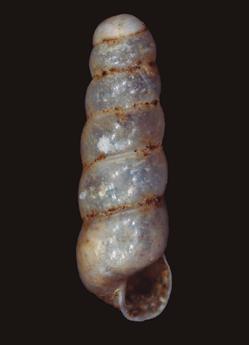
Photography: J. Sebastián Torres.
Los caracoles desarrollan muchas funciones en el medio donde habitan, en el caso que nos ocupa, tienen una dieta muy variada, se alimentan de plantas herbáceas, hongos, materia en descomposición, forman la parte baja de la cadena alimenticia de otros animales, siendo el eslabón entre plantas (productores primarios) y los carnívoros (consumidores). Contribuye a la aireación del suelo y de su fertilización, también puede ser un buen bioindicador, ofreciendo datos sobre concentraciones contaminantes a través de análisis. Participan en la polinización de algunas plantas y dispersan las esporas de los hongos. Además, los helícidos de gran tamaño son consumidos por el hombre.
Con ésta síntesis queremos concienciar sobre la importancia que tiene proteger los diferentes hábitats que encontramos a nuestro alrededor, no solo para la preservación del medio en el que se desarrollan las diferentes especies de fauna y flora, sino también para que disfrutemos de las mismas por muchos años. Por todo lo aquí expuesto, solo nos queda decir tres cosas, CONOCER, PROTEGER y CONSERVAR.
Rossmassleria scherzeri.
Photography: J. Sebastián Torres.
OTWO 35 / JUNE 2022 39 38 OTWO 35 / JUNE 2022

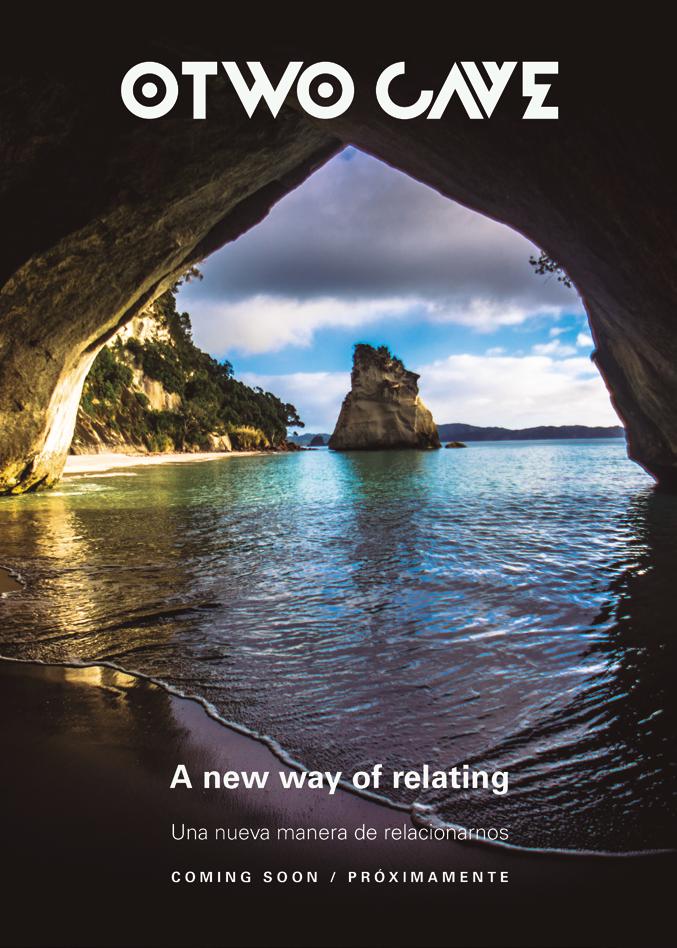
Fair traveller of Amarytierra
About Chimborazo.
The summit farthest from the center of the Earth.
Chapter 5
En torno al Chimborazo. La cumbre más alejada del centro de la Tierra.
Text and photos: Ainara Martínez Rodríguez
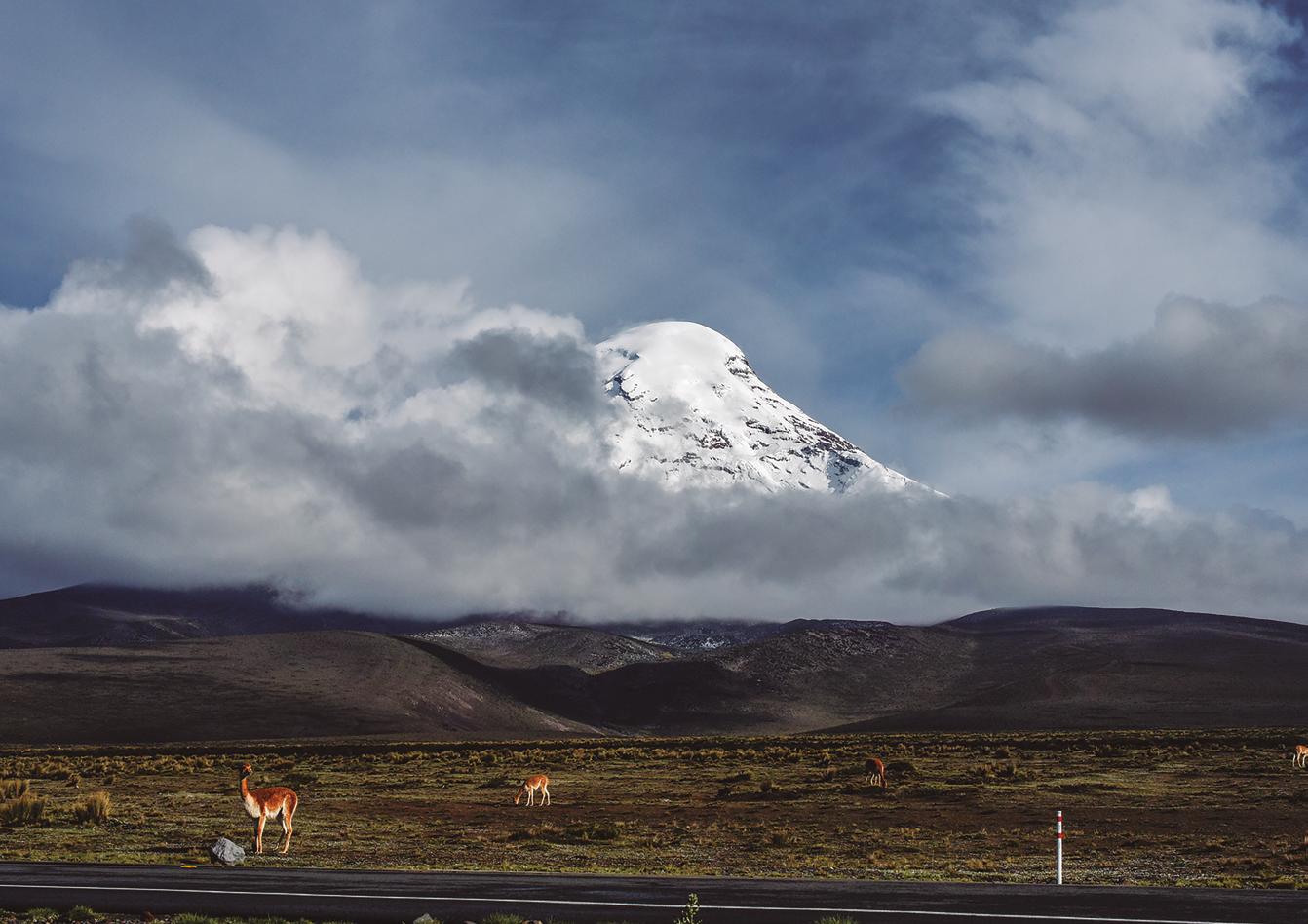
With its contoured 6263 meters above sea level, the summit of Chimborazo is still 2530 meters short of matching in altitude the father of high peaks, Everest. However, its location in the equatorial Andes, barely 1.5º South and due to the bulging of the planet at the Equator, makes it the farthest point from the Earth’s core, or in other words, the point of the Earth’s crust closest to outer space. That is, measured from the center of the Earth, Chimborazo is positioned as the highest peak in the world, 1800m above Everest, and this is because our planet is not exactly spherical but rather an ellipsoid of revolution flattened at the poles and curved at the equator. In 1776 the First Geodesic Mission was carried out to determine the shape of the Earth. About a thousand
Con sus contorneados 6263 metros sobre el nivel del mar, a la cima del Chimborazo le faltan aún 2530 metros para equipararse en altitud al padre de las altas cumbres, el Everest. No obstante, su localización en los Andes ecuatoriales, a penas a 1,5º Sur y debido al abombamiento del planeta en el Ecuador, lo llevan a ser el punto más alejado del núcleo terrestre o dicho de otro de otro modo, el punto de la corteza terrestre más cercano al Espacio Exterior. Es decir, medido desde el centro de la Tierra, el Chimborazo se posiciona como el pico más alto del mundo, 1800 m por encima del Everest, y esto se debe a que nuestro planeta no es exactamente esférico sino más bien tipo elipsoide de revolución achatado en los polos y combado en el Ecuador. En 1776 se realizó la Primera
43 42
OTWO 35 / JUNE 2022 OTWO 35 / JUNE 2022
years earlier, the Quitu-Cara, through their worldview, also established the center of the world at the equator. Contrary to popular belief, the equatorial line is actually a 5km wide strip and the GPS 0 position is constantly moving within that strip.
Numbers aside, which although interesting serve only to justify who has the largest summit, around Chimborazo, and despite its barren and wasteland appearance typical of high mountains, life exists and things happen. Its rounded summit surrounded by plains gives it a friendly appearance and allows it to be seen spreading its majestic white mantle from many kilometers around. The perpetual snows that cover it ensure the water supply of the people who live on its slopes, but its interior harbors fire and another of the characteristics that make this place so special is its duality as a high mountain and volcano. Precisely for this reason the ancient peoples considered it a deity that they venerated, the Incas even offered sacrifices of virgin maidens to ensure the water supply and appease their fury that sometimes manifests itself in the form of storms, hailstorms, frosts and droughts. Although its volcanic version seems to be more pacified, the last eruption dates back to approximately 500 AD, the Geophysical Institute of Ecuador still considers the Chimborazo Volcano as potentially active.
—You don’t have to be afraid of the mountain, but you do have to respect it,— says Marco Cruz, sweetening a cup of steaming filtered coffee while he admires Chimborazo from the window of his refuge.
Dressed in mountaineering polo shirts, high socks and boots still full of mud, this Ecuadorian, born 77 years ago in the shadow of Chimborazo, has just come down from an inspection of the slopes of the mountain in the company of two Europeans with whom he is preparing to climb to the summit. Chimborazo is his home, he has known it like the back of his hand since he was a child. When from time to time an interested climber would arrive, his father would send him to accompany them because he said that it was better than having to go up later to look for them. In this way, an almost adolescent Marco met a couple of Spanish mountaineers who facilitated his education in Catalonia and his training as a mountain guide. Life has a path in store for us and all we have to do is walk it. Marco made his life his ho-
Misión Geodésica que determinó la forma de la Tierra. Unos mil años antes los Quitu-Cara, mediante su cosmovisión, también establecieron en el Ecuador el centro del mundo. Al contrario de lo que se cree, la línea ecuatorial es en realidad una franja de 5km de ancha y la posición 0 del GPS se mueve constantemente dentro de esa franja.
Números a parte, que aunque interesantes no sirven más que para justificar quién tiene la cumbre más grande, en torno al Chimborazo, y a pesar de su aspecto yermo y baldío típico de alta montaña, la vida existe y las cosas suceden. Su cima redondeada y rodeada de planicies le confiere un aspecto amable y le permite ser visto tendiendo su majestuoso manto blanco desde muchos kilómetros a su alrededor. Las nieves perpetuas que lo cubren aseguran el suministro de agua de los pueblos que viven a su falda, pero su interior alberga fuego y es que otra de las características que hacen a este lugar tan especial es su dualidad como alta montaña y volcán. Justamente por ello los pueblos ancestrales la consideraban una deidad a la que veneraban, los incas incluso ofrecían sacrificios de doncellas vírgenes para asegurar el suministro de agua y apaciguar su furia que en ocasiones se manifiesta en forma de tormentas, granizadas, heladas y sequías. Aunque su versión volcánica parece más apaciguada, la última erupción se data aproximadamente en el año
500 de nuestra era, el Instituto Geofísico de Ecuador sigue considerando al Volcán Chimborazo como potencialmente activo.
—A la montaña no hay que tenerle miedo, pero sí respeto —dice Marco Cruz endulzando una taza de humeante café filtrado mientras admira al Chimborazo desde el ventanal de su refugio.
Vestido con pololos de alpinista, calcetines altos y las botas aún llenas de barro, este ecuatoriano dado a luz hace 77 años a la sombra del Chimborazo acaba de bajar de hacer una inspección por las laderas de la montaña en compañía de dos europeos con los que prepara la subida a la cumbre. El Chimborazo es su hogar, desde niño lo conoce como la palma de su mano. Cuando en aquella época llegaba de vez en cuando algún alpinista interesado, su padre lo mandaba a acompañarlos pues decía que mejor eso que tener que subir luego a buscarlos. De este modo un Marco casi adolescente conoció a una pareja de

44 OTWO 35 / JUNE 2022 45 OTWO 35 / JUNE 2022
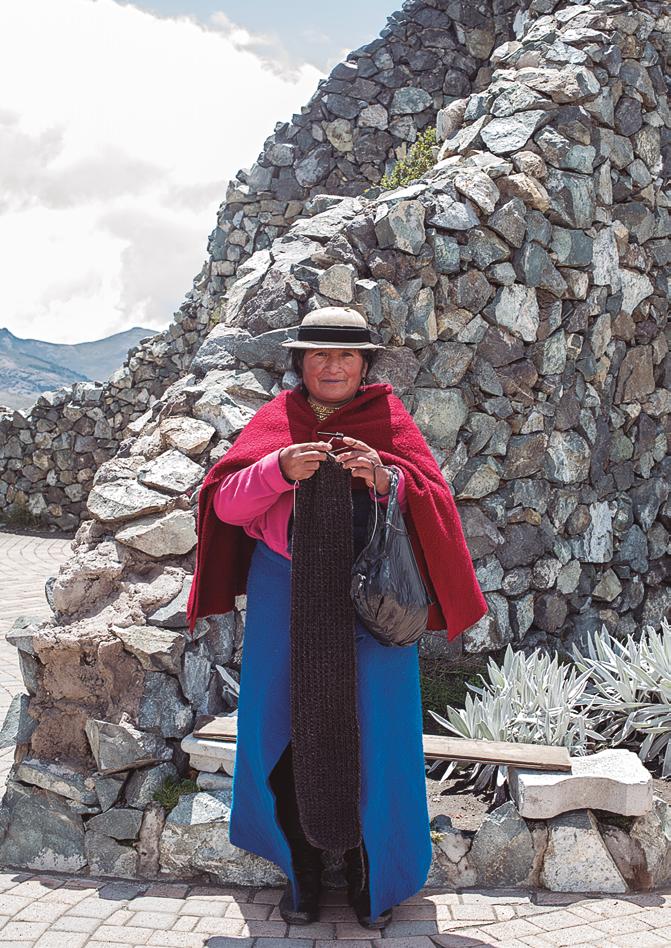
bby and his hobby his life, he has traveled the world climbing mountains from the Alps to the Himalayas, from the Arctic Cordillera to Africa and Japan and of course Sierra Nevada of Spain, he says that when he met the city of Granada, its beauty overwhelmed his heart and emotion flooded his eyes in tears.
—Granada is possibly one of the most beautiful cities in the world, the sensations there are very powerful —he comments— and in this I also have to agree with this man with a weathered face, who considers himself touched by a fortune wand and eternally grateful to the people who helped him develop a passion that as a child, and because of everyday life, he was unaware of.
Currently Marco Cruz accumulates numerous international accolades, but he moves less and less from his homeland, he is the climber with more summit ascents and one of the glaciers of the volcano bears his name.
On the way forward, the Natawa Community is traditionally considered the guardians of the volcano and that is probably why the entrance gates to the Chimborazo Fauna Production Reserve were placed in 1987 in front of the Community’s settlement. The unexpected arrival of Fair Traveler activates the village, especially men and boys and a shepherd girl who also approaches with one of her sheep. The president of the community introduces himself as such, he is the representative of the 180 people that make up the group. They want to know what brings Fair Traveler to the moors.
—Yesterday afternoon I had coffee in the parish of Salinas with Father Antonio Polo —everyone nods and smiles when they hear the name of the Italian missionary who arrived forty years ago in Salinas, the now prosperous town a few kilometers from Natawa.
Doña Marta says: “before the arrival of Father Antonio, Salinas was a very small town with little to do and very little to eat”. With 40 years of stay in Ecuador, the missionary Antonio Polo is a fundamental pillar in the development of Salinas de Guaranda. Today the Cooperative El Salinerito produces cheese, sausages, chocolates, essential oils, natural soaps… the town prospers. Father Antonio is one of those warm, intelligent and focused people who are well worth sitting and listening to.
montañistas españoles que le facilitaron su educación en Cataluña y su formación como guía de montaña. Y es que la vida nos tiene reservado un camino y nosotros no tenemos más que andarlo. Marco hizo de su vida su afición y de su afición su vida, ha recorrido el mundo subiendo montañas desde los Alpes al Himalaya, de la Cordillera Ártica a África y Japón y por supuesto Sierra Nevada de España, cuenta que cuando conoció la ciudad de Granada, su belleza sobrecogió su corazón y la emoción inundó sus ojos en lágrimas.
—Granada es posiblemente una de las ciudades más bonitas del mundo, las sensaciones allí son muy potentes —comenta— y en esto también he de darle la razón a este hombre de rostro curtido, que se autoconsidera tocado por una barita de la fortuna y agradecido eternamente a las personas que le ayudaron a desarrollar una pasión que de niño, y a causa de la cotidianeidad, desconocía.
Actualmente Marco Cruz acumula numerosas consideraciones a nivel internacional, pero cada vez se mueve menos de su terruño, es el alpinista que cuenta con más subidas a la cumbre y uno de los glaciares del volcán lleva su nombre.
Camino adelante, la Comunidad de Natawa es considerada tradicionalmente como los guardianes del volcán y seguramente sea por eso que las puertas de entrada a la Reserva de Producción de Fauna del Chimborazo fueron ubicadas en 1987 frente al asentamiento de la Comunidad. La llegada inesperada de Viajante activa al poblado, sobre todo hombres y niños y alguna niña pastorcita que también se acerca junto con una de sus ovejas. El presidente de la comunidad se presenta como tal, es el representante de las 180 personas que componen el grupo. Quieren saber que trae a Viajante por los páramos.
—Ayer tarde tomé un café en la parroquia de Salinas con el Padre Antonio Polo —todos asienten y sonríen al escuchar el nombre del misionero italiano que llegó hace cuarenta años a Salinas, el hoy próspero pueblo que se encuentra a pocos kilómetros de Natawa.
Dice doña Marta que: «antes de la llegada del Padre Antonio, Salinas era un pueblito muy pequeñitito con poco que hacer y muy poco que comer». Con 40 años de estancia en Ecuador, el misionero Antonio Polo es un pilar fundamental en el desarrollo de Sa-
OTWO 35 / JUNE 2022 47 46 OTWO 35 / JUNE 2022


OTWO 35 / JUNE 2022 49 48 OTWO 35 / JUNE 2022
What Father Antonio Polo found upon his arrival was that the parish of Salinas at that time sheltered a few scattered families, who survived by grazing, which is difficult to extract from the land at this altitude, and the extraction of salt from the decaying mine already exploited by the pre-Inca populations of the Tomabelas and the Puruhaes, then the Incas and later the Spaniards. The clergyman got down to work and organized the families, considered it essential to create a school for the children and taught the elders to produce cheese and sausages. The community adjusted to the new activities and grew in number; today Salinas de Guaranda is a population of more than 5,500 inhabitants.
When Father Polo is asked his opinion about the preservation of culture and development, the octogenarian clergyman with white hair covered by his Italian beret talks about his thesis, in which he dealt with this topic in depth. In his view, and although he agrees that it is a controversial issue, he recognizes that providing an education based on the Western educational system is undoubtedly a form of globalization that inexorably goes hand in hand with the loss of any ancestral culture; but between that and leaving communities without tools to adjust to the reality of the globalization process, he defends, without hesitation, the first option.
Finally, in 2006 the Gruppo Salinas Corporation was created, which is based on rural community economy and ensures the creation of decent jobs. Salinerito is their commercial brand with a wide range of products of their own production that they have already managed to distribute in Quito. With a lot of heart is the slogan that accompanies the brand and the truth is that in Salinas one breathes harmony and kindness at a rural pace, slow but continuous, where any could spend the afternoons watching the people playing volleyball in the town square after work.
However, today the afternoon is in Natawa and its Andean people, with an alert mind moved by the cold; do not want to miss the opportunity to chat with the unexpected traveler. They do not ask for money, nor impose the purchase of any souvenir, they prefer to know and be known, they understand that the exchange of information is more valuable. They show their sheep, llamas and alpacas from which they ob-
linas de Guaranda. A día de hoy la Cooperativa el Salinerito produce queso, embutidos, chocolates, aceites esenciales, jabones naturale… el pueblo prospera. El Padre Antonio es una de esas personas cálidas, inteligentes y centradas a las que bien vale la pena sentarse a escuchar.
Lo que el Padre Antonio Polo encontró a su llegada fue que la parroquia de Salinas en aquel entonces amparaba a unas cuantas familias diseminadas, que sobrevivían del pastoreo, lo que difícilmente se extrae de la tierra a esta altitud y la extracción de sal de la decadente mina que ya explotaran las poblaciones preincaicas de los Tomabelas y los Puruhaes, luego los incas y más tarde los españoles. El clérigo se puso manos a la obra y organizó a las familias, consideró fundamental crear una escuela para los niños y enseñó a los mayores a producir quesos y embutidos. La comunidad fue ajustándose a las nuevas actividades y fue creciendo en número, hoy día Salinas de Guaranda es una población de más de 5.500 habitantes.
Cuando se le pregunta al Padre Polo su opinión sobre la conservación de la cultura y el desarrollo, el octogenario clérigo de pelo blanco cubierto por su boina italiana habla de su tesis, en la que trató ese tema en profundidad. A su modo de ver, y aunque está de acuerdo en que es un asunto controvertido, reconoce que proporcionar una educación basada en el sistema educativo occidental es sin duda una forma de globalización que inexorablemente va unida a la pérdida de cualquier cultura ancestral; pero entre eso y dejar a las comunidades sin herramientas para ajustarse a la realidad del proceso de globalización, él defiende, sin dudar, la primera opción.
Finalmente en 2006 se crea la Corporación Gruppo Salinas que se basa en economía rural comunitaria y asegura la creación de fuentes de trabajo dignas. Salinerito es su marca comercial con un amplio catálogo de productos de producción propia que ya han conseguido distribuir en Quito. Con mucho corazón es el lema que acompaña a la marca y lo cierto es que en Salinas se respira armonía y amabilidad a ritmo rural, lento pero continuo, donde cualquier viajante podría pasarse las tardes viendo a su gente jugando al vóley en la plaza del pueblo después de trabajar.
Pero hoy la tarde es en Natawa y su gente andi-

OTWO 35 / JUNE 2022 50 OTWO 35 / JUNE 2022 51
tain milk with which they make Andean cheese and mozzarella that they distribute through the Salinerito cooperative; also with wool, they weave warm clothes, hats and ponchos. New generations are venturing into tourism. The declaration of the Protected Area is a new opportunity and the reserve’s management regulations ensure respect for the environment and the community. Private initiatives in the form of NGOs such as AYA UMA are also working for the orderly, conscious and respectful development of tourism in this special and fragile place.
During the improvised assembly in what seems to be the main square of the Natawa settlement, the community presents an incipient urban development plan focused on tourism. Not everyone agrees that a few small houses with views of Chimborazo would please tourists, but they are all in agreement that they should be built of cement blocks. Finally, the possibility of four or five of their own traditional cabins, built in adobe with a gabled Andean thatched roof and, of course, with a view of Chimborazo, seems an option that can be considered to please tourists and be interesting to the community. They talk and look at each other, there is something about them that the Fair Traveler finds so familiar and at the same time, their features are so different. The beauty of variety shows itself both ways, everyone enjoying each other’s differences and the opportunity to admire them up close. The afternoon is going fast, as fast as the cold settles in. The Traveler must return, but as she leaves, she looks back, any one of those kids could be a Marco Cruz, but for some reason life doesn’t provide the same opportunities for everyone. The desire of the Fair Traveler to stay, the desire of the others for her to stay fills with many, the heart of a Fair Traveler who is once again invaded by astonishment and gratitude.

na, de mente despierta movida por el frío, no quiere perder la oportunidad de charlar con el inesperado viajante. No piden dinero, ni imponen la compra de algún souvenir, prefieren conocer y que les conozcan, entienden que el intercambio de información es más valioso. Muestran sus ovejas, llamas y alpacas de las que obtienen leche con la que hacen queso andino y mozzarela que distribuyen a través de la cooperativa Salinerito, también con la lana tejen ropa de abrigo, gorritos y ponchos. Las nuevas generaciones se aventuran a emprender con el turismo, la declaración del Espacio Protegido es una nueva oportunidad y las normas de gestión de la Reserva aseguran el respeto por el medioambiente y por la Comunidad. Iniciativas privadas con formato de ONG como AYA UMA trabajan también por el desarrollo turístico ordenado, consciente y respetuoso de este lugar tan especial como frágil.
Durante la asamblea improvisada en lo que parece la plaza principal del asentamiento de Natawa la comunidad expone un incipiente plan de desarrollo urbanístico enfocado al turismo. No todos están de acuerdo en que unas casitas con vistas al Chimborazo agradarían a los turistas, pero sí a todos les parece bien que sean construidas de bloques de cemento. Finalmente, la posibilidad de cuatro o cinco cabañas de las suyas, de las tradicionales, construidas en adobe con tejado de paja andina a dos aguas y claro que sí, con vistas al Chimborazo parece una opción que puede agradar a los turistas y ser interesante para la comunidad. Hablan y se miran, hay algo en ellos que a Viajante le resulta tan familiar y a la vez sus rasgos son tan diferentes. La belleza de la variedad se muestra en ambos sentidos, todos disfrutan de las diferencias del otro y de la oportunidad de admirarlas de cerca. La tarde se va ligera, tanto como el frío va llegando. Viajante ha de regresar, pero al marcharse vuelve la vista atrás. Cualquiera de esos niños podría ser un Marco Cruz, pero por alguna razón la vida no proporciona las mismas oportunidades para todos. Las ganas de Viajante de quedarse, las ganas de los otros de que se quede llenan con mucho, el corazón de un Viajante a quien una vez más invaden el asombro y la gratitud.
OTWO 35 / JUNE 2022 53 OTWO 35 / JUNE 2022
52
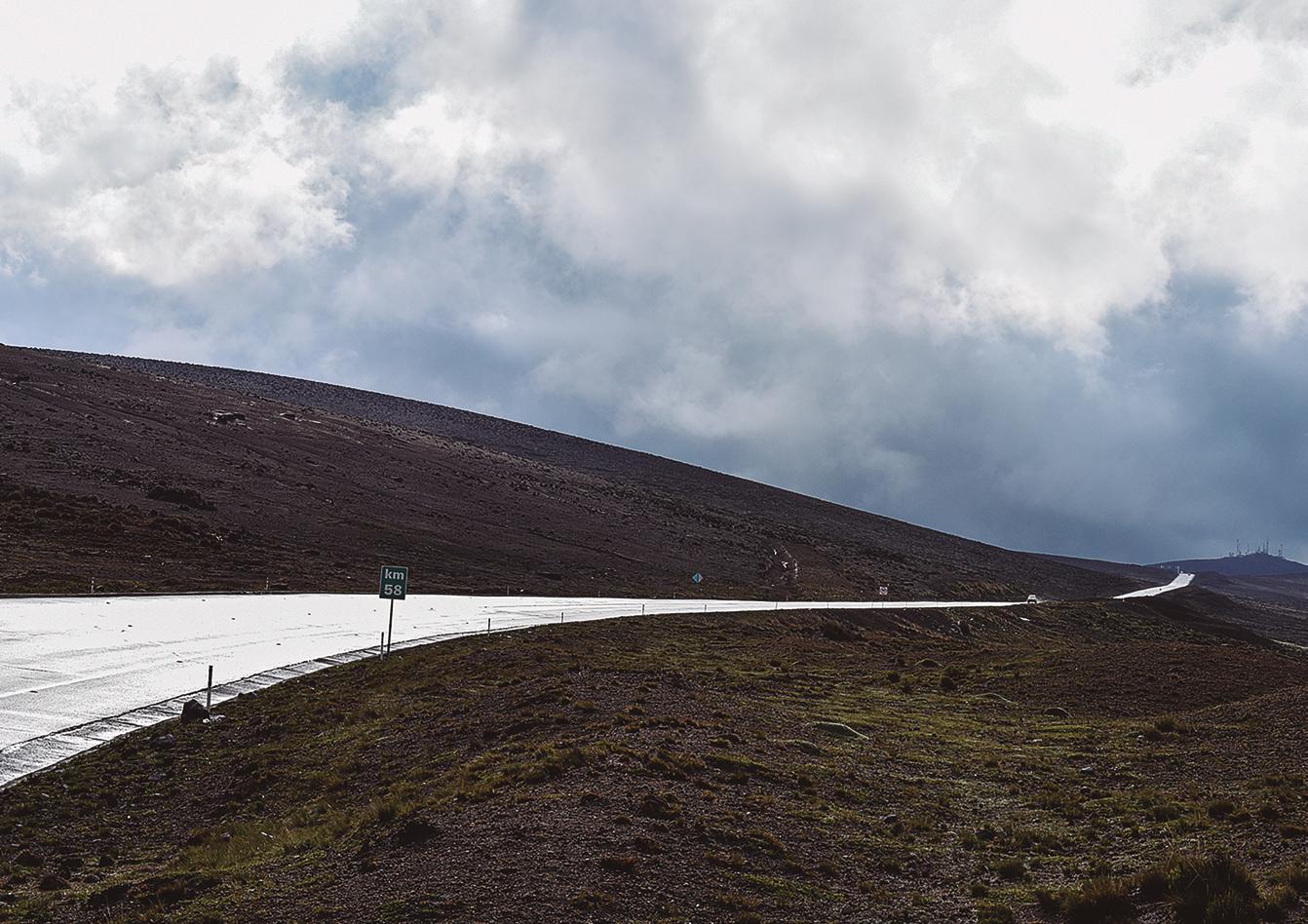
OTWO 35 / JUNE 2022 55 54 OTWO 35 / JUNE 2022

OTWO 35 / JUNE 2022 57 56 OTWO 35 / JUNE 2022


“Gibraltar’s rich heritage is one of its greatest assets and it is imperative that it is preserved and managed in a sustainable way to continue to benefit future generations”

The Gibraltar Heritage Trust
The Gibraltar Heritage Trust is an independent statutory body entrusted with the preservation of Gibraltar’s heritage. It aims to work in partnership with all like-minded bodies, both locally and internationally. The Trust is responsible to the people of Gibraltar for the preservation and enhancements of all aspects of Gibraltar’s heritage, which includes promotion culturally, educationally and in terms of tourism both for our local population and internationally. It works closely with the Government of Gibraltar and the private sector in fulfilling its aims. Operating on a not for profit basis all funding for Trust projects are raised through our annual membership drive, our commercial activities or through specific project targeted fundraising. All funds generated are applied to achieving the aims and objectives of the Trust.



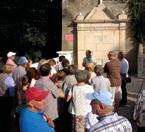
“The events that the Trust organises allow me and my partner to explore places that we simply would not have seen without the help and knowledge of the Trust”

The Trust has a number of statutory and strategic functions to:
1.- Safeguard and enhance the quality and condition of Gibraltar’s historic environment.
2.- Promote wider understanding, enjoyment and appreciation of Gibraltar’s historic environment.
3.- Enhance Gibraltar’s Sense of Place.
4.- Encourage relevant bodies to make Gibraltar’s historic areas better places to live, visit and to invest in.
5.- Work with others to amplify the impact of the wider initiatives to improve the city and make Gibraltar a better place to live, visit and invest in.
6.- Work towards the implementation and enforcement of new heritage legislation, policies and guidelines.
7.- Be open, responsive, transparent, effective and efficient in our work.
By investing in the Trust you are investing in Gibraltar’s past, its present and its future.
With your annual membership, you support Gibraltar and the work that the Trust does to protect and enhance it, however, your membership also entitles you to:
• Access to the Trust’s monthly programme of events, including trips and organised excursions.

• Access, by appointment, to the Trust’s reference library of books related to Gibraltar and its past. (The Trust is accepting donations of books on Gibraltar to add to this resource).
• Free entry to the Gibraltar Museum.
• Free entry to the Upper Rock Nature Reserve, St Michael’s Cave, Great Siege Tunnels, Military Heritage Centre, Tower of Homage, Ape’s Den, Windsor Suspension Bridge and WWII Tunnels.
• Annual report, our regular e-newsletter direct to your inbox, updates and information on what’s happening on the Gibraltar heritage scene.
• Discounts and deals from local businesses added throughout the year.
• Discounts on all Gibraltar Heritage Trust Publications in our shop.

Gibraltar Heritage Trust
The Main Guard
13 John Mackintosh Square PO Box 683, Gibraltar t. (+350) 200 42844 admin@gibraltarheritagetrust.org.gi www.gibraltarheritagetrust.org.gi
59
JOIN US NOW VIA OUR WEBSITE OR POP INTO OUR SHOP
Solid Conditioner Bar for Normal Hair (65g) 4,90€
This mini solid conditioner bar is sweetened with sweet orange essential oil and smells amazing and is made with 100% natural ingredients. It’s not tested on animals and is suitable for vegans. Other ingredients include cocoa butter, argan oil and plant keratin for luscious and smooth hair. Contains no palm oil.
Rub a small amount into washed wet hair and distribute evenly. Leave for a couple of minutes for maximum effect then rinse thoroughly. It will last a long time but keep the conditioner bar dry after use to help it last longer.
Many people say once they are used to solid shampoo and conditioner bars, they would never switch back to using liquid conditioner. It takes some time to adjust so don’t give up after a few washes, you may just need to find the right conditioner bar for you. Make the change today and reduce your use of plastic bottles.
INGREDIENTS:
Theobroma Cacoa Butter (Cocoa Butter), Behentrimonium Methosulfate (Emulsifying Wax), Cetearyl Alcohol (Emulsifying Wax), Vitus Vinifera Oil (Grapeseed Oil), Prunus Dulcis Oil (Almond Oil), Argania Spinosa Oil (Argan Oil), Panthenol Powder, Plant Keratin, Citrus Sinensis Oil (Sweet Orange), Limonene, Linalool, Citral (Within The Essential Oils)
CONTAINS NO ANIMAL PRODUCTS, SUITABLE FOR VEGANS, NOT TESTED ON ANIMALS.
Funky Soap products are all 100% natural and handmade in small batches. Shape, colour, scent, size and appearance can vary slightly between batches as it is in the nature of this product. Due to using natural scents, they may not be as strong or develop when in use.
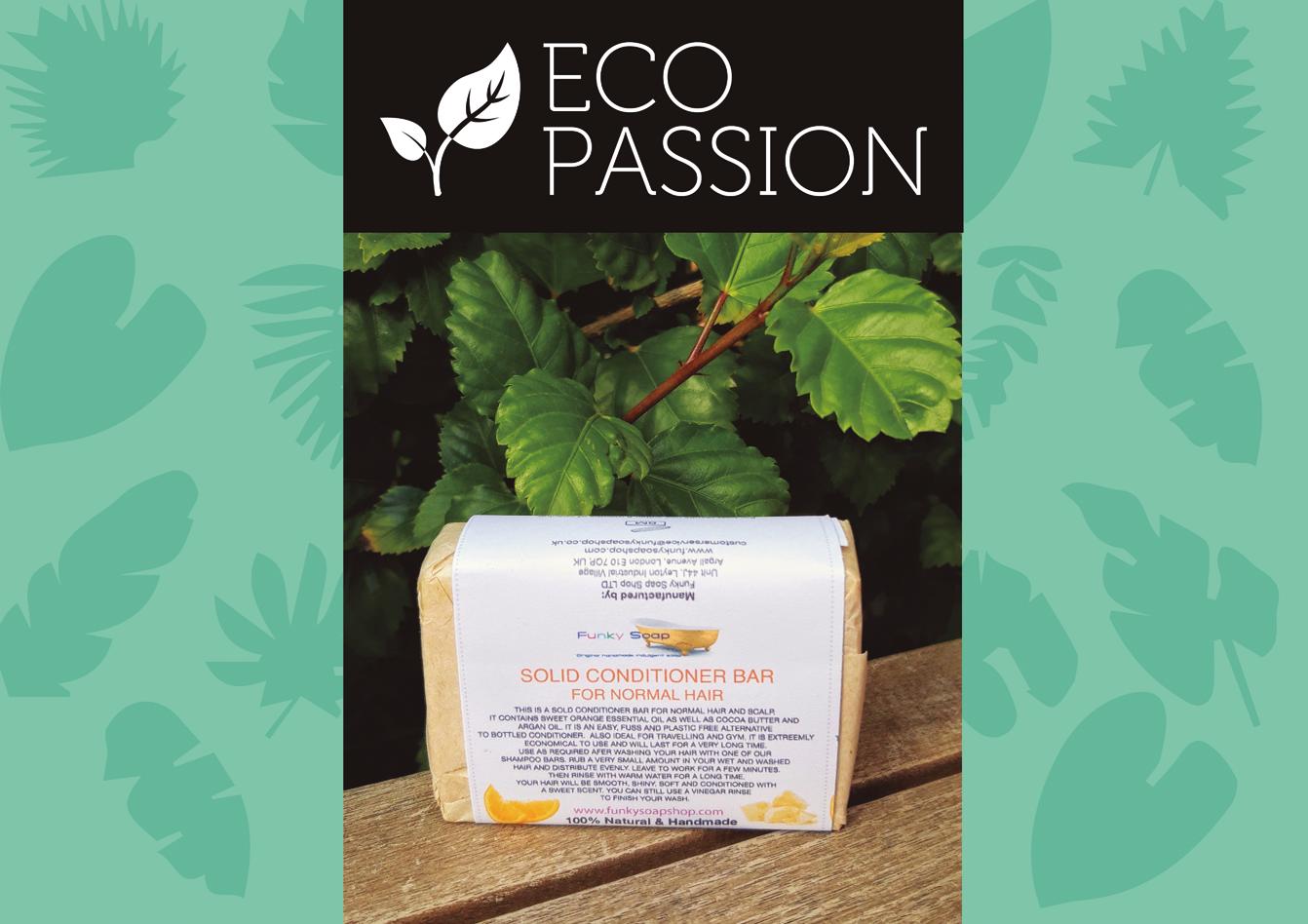
https://ecopassion.es
Acondicionador sólido
Cabello Normal (65g) 4,90€
Esta pequeña barra sólida de acondicionador del cabello contiene aceite esencial de naranja dulce por lo que huele increíblemente, y además está hecha con ingredientes 100% naturales. No está probado en animales y es adecuada para veganos. Otros ingredientes que contiene son manteca de cacao, aceite de argán y queratina vegetal, que te darán un cabello delicioso y suave. No contiene aceite de palma.
Frota una pequeña cantidad en el cabello mojado y se distribuye uniformemente. Deja actuar durante unos minutos para obtener un efecto máximo y luego enjuaga bien. La barra acondicionadora dura mucho tiempo, que se prolongará todavía más si la mantienes seca después de su uso.
Muchas personas dicen que una vez que están acostumbrados al champú sólido y las barras acondicionadoras, nunca volverían a utilizar el acondicionador líquido. Lleva un tiempo ajustarse a su uso, así que no te des por vencido después de algunos lavados, puede que necesites encontrar la barra de acondicionadora más adecuada para tí. Haz el cambio hoy y reduce el uso de botellas de plástico.
INGREDIENTES:
Theobroma Cacoa Butter (Cocoa Butter), Behentrimonium Methosulfate (Emulsifying Wax), Cetearyl Alcohol (Emulsifying Wax), Vitus Vinifera Oil (Grapeseed Oil), Prunus Dulcis Oil (Almond Oil), Argania Spinosa Oil (Argan Oil), Panthenol Powder, Plant Keratin, Citrus Sinensis Oil (Sweet Orange), Limonene, Linalool, Citral (Within The Essential Oils).
NO CONTIENE PRODUCTOS ANIMALES, ADECUADOS PARA VEGANOS, NO PROBADOS EN ANIMALES.
Los productos Funky Soap son 100% naturales y hechos a mano en pequeños lotes. La forma, el color, el aroma, el tamaño y la apariencia pueden variar ligeramente entre lotes, ya que es la naturaleza de este producto. Debido al uso de aromas naturales, pueden no ser tan fuertes o desarrollarse cuando están en uso.
Solid Dish Washing Soap Bar 5,90€
This 120g all-natural dish soap is made from saponified coconut oil and is in a solid block or bar form, making it a great zero waste alternative to a liquid washing up liquid in plastic bottles. The ingredients include pure lemon essential oil for the extra cleaning power and a fresh fragrance, perfect for the kitchen. This solid, sustainable and vegan dish soap is made to the highest standards, formulated to cut through grease and dirt while being soft on your hands.
TO USE:
Wet a sponge or dish cloth and rub on dish soap bar to create suds. Repeat when more suds are needed. Wash items as normal and rinse well. You will find this solid dish washing soap to be long lasting an efficient, meaning you no longer have to use plastic bottles for washing dishes.
INGREDIENTS:
Aqua, Glycerine, Sodium Cocoate (Coconut Oil), Sodium Castorate (Castor Oil), Citrus Limonum Oil, Linalool, Citral, Geranlol, Citronellol (Within The Essential Oils).
CONTAINS NO ANIMAL PRODUCTS, SUITABLE FOR VEGANS, NOT TESTED ON ANIMALS
Funky Soap products are all 100% natural and handmade in small batches in London, UK. The shape, colour, scent, size and appearance can vary slightly between batches. Due to the all-natural scents, they might not be as strong or develop when in use.

https://ecopassion.es
Jabón sóildo para vajilla 5,90€
Este jabón natural (120g) para lavar los platos está hecho de aceite de coco saponificado y se presenta en forma de bloque o de barra sólida, convirtiéndose en una alternativa zero waste a los líquidos lavavajillas que vienen en botellas de plástico. Los ingredientes incluyen aceite esencial de limón puro para un mayor poder de limpieza y una fragancia fresca, perfecta para la cocina. Este jabón sólido para vajilla, sostenible y vegano, está hecho con los más altos estándares, formulado para eliminar la grasa y la suciedad, a la vez que es suave y delicado para tus manos.
MODO DE USO:
Humedece una esponja o paño de cocina y frótalo contra la barra de jabón para crear espuma. Repite este proceso si deseas obtener más espuma. Lava la vajilla como de costumbre y enjuaga bien. Notarás que este jabón sólido para vajilla es eficiente y de larga duración, lo que significa que no tendrás que volver a usar los líquidos lavavajillas que vienen en botellas de plástico para lavar los platos.
INGREDIENTES:
Agua, glicerina, cocoato de sodio (aceite de coco), castorato de sodio (aceite de ricino), aceite de cítrico limonum, linalol, citral, geranlol, citronelol (dentro de los aceites esenciales).
NO CONTIENE PRODUCTOS ANIMALES, APTO PARA VEGANOS, NO TESTADO EN ANIMALES.
Los productos Funky Soap son 100% naturales y hechos a mano en pequeños lotes en Londres, Reino Unido. La forma, el color, el aroma, el tamaño y la apariencia pueden variar ligeramente entre lotes. Debido a los aromas totalmente naturales, es posible que no sean tan fuertes o no se desarrollen cuando se usan.
BORDEAUX
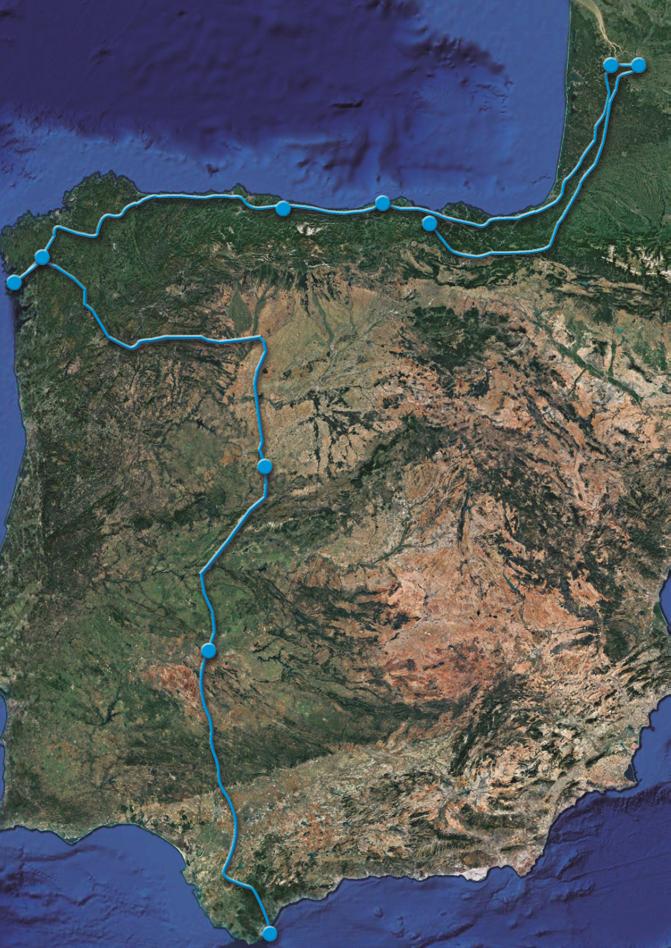
SAINT-EMILION
RIBADESELLA
SANTIAGO DE COMPOSTELA
FINISTERRE
SANTANDER BILBAO
SALAMANCA
10 Bilbao
STRETCH
The city of Bilbao, the heart of the Basque Country, in northern Spain, would be the next and final destination of our road trip itinerary. Two nights in Bilbao, would be followed by the last stretch of road, which would take us back home to Gibraltar.
The tour so far had been sensational, especially so Bordeaux and St. Émilion, wonderful places which we were now saying goodbye to. Thus far the experiences along the route gave us a sense of accomplishment, a happy fulfilment. Alain de Botton, a Swiss-born British philosopher, in his book The Art of Travel, comments in this respect:
“If our lives are dominated by a search for happiness, then perhaps few activities reveal as much about the dynamics of this quest — in all its ardour and paradoxes — than our travels.” I cannot agree more.
We left Bordeaux without haste at nine in the morning, retracing the same route to Irun, the Spanish frontier town. Still in France, on the A63, we drove through Le Parc Naturel de Gascogne, a vast forest located south of Bordeaux, popular with hikers, walkers, and cyclists. Pushing on south, we passed Biarritz, an elegant seaside town in the French Basque country. An hour later, around lunchtime, we crossed into Spain. About one hundred kilometres east of Bilbao, we drove past Donostia San Sebastian, an important resort town on the Bay of Biscay, in the province of Gipuzkoa.

La ciudad de Bilbao, el corazón del País Vasco, en el norte de España, sería el siguiente y último destino de nuestro itinerario de viaje por carretera. A las dos noches en Bilbao, le seguiría el último tramo de carretera, que nos llevaría de vuelta a casa, a Gibraltar. El recorrido hasta ahora había sido sensacional, especialmente Burdeos y St. Émilion, lugares maravillosos de los que ahora nos despedíamos. Las experiencias vividas a lo largo de la ruta nos han proporcionado una sensación de logro, de feliz realización. Alain de Botton, filósofo británico de origen suizo, en su libro El arte de viajar, comenta al respecto
«Si nuestras vidas están dominadas por la búsqueda de la felicidad, quizá pocas actividades revelen tanto la dinámica de esta búsqueda —en todo su ardor y sus paradojas— como nuestros viajes» No puedo estar más de acuerdo.
Salimos de Burdeos sin prisas a las nueve de la mañana, desandando el mismo camino hasta Irún, la ciudad fronteriza española. Todavía en Francia, por la A63, atravesamos Le Parc Naturel de Gascogne, un vasto bosque situado al sur de Burdeos, popular entre los excursionistas, los caminantes y los ciclistas. Siguiendo hacia el sur, pasamos por Biarritz, una elegante ciudad costera del País Vasco francés. Una hora más tarde, hacia la hora de comer, cruzamos a España. A un centenar de kilómetros al este de
64 GIBRALTAR
MÉRIDA
65 OTWO 34 / MAY 2022
With around one hour drive remaining to our destination, we stopped for refreshments at a dreary roadside café. For lunch we ordered Pepitos de Ternera, a sandwich prepared with beef or pork, that originated in Spain and is also very popular in Latin America. I have to say the beef filling was rather tasteless, tough, and chewy.
After the final stretch of motorway, we drove into Bilbao at around four in the afternoon, under a threatening mass of black rain clouds. Bilbao is difficult to drive in, awkward and inconvenient even for those who live there. Hilly one-way streets, diversions, and frequent construction projects, converge to produce nightmare scenarios for drivers in parts of the city. Our car went straight into the hotel garage on arrival, where it would remain until the day of our departure.
Tucked into a lush corner of Northeast Spain, Bilbao is surrounded by rolling green hills, with a stunning coastline, an easy jaunt from town. Bilbao is at the core of the Basque Country, which itself is made up of seven provinces, three of which are in southwestern France.
The Basques are an ancient people. A certain anthropological viewpoint theorises that their lineage descends from the original Cro-Magnons (early human species) who had lived in this land millennia ago. Basque tribes were referenced by Strabo and Pliny, in Roman times, including the Vascones, the Aquitani, and others.
Today, the Spanish part is an autonomous region with a Basque government, while the French part answers to the central government in Paris. In France, most people are proud of being Basques and French. However, in Spain, many Basques want complete independence from Spain. In France, very few people think of complete independence.
Unique to the Basques is their ancient language ‘Euskara’, which many scholars argue is unrelated to any other known language. The distinctive nature of Euskara has resulted in a favoured, long-standing, arguably misleading view, that the Basques are “living fossils” of the earliest modern humans who colonized Europe.
We checked into Vincci Consulado de Bilbao, a new avant-garde hotel by the Nervión river. Architecturally, the hotel emulates a sailboat moving up
Bilbao, pasamos por Donostia San Sebastián, una importante ciudad turística del Golfo de Vizcaya, en la provincia de Gipuzkoa. A falta de una hora para llegar a nuestro destino, nos detuvimos a tomar un refresco en un lúgubre café de carretera. Para almorzar pedimos Pepitos de Ternera, un bocadillo preparado con carne de ternera o de cerdo, originario de España y muy popular también en Latinoamérica. Tengo que decir que el relleno de ternera era bastante insípido, duro y chicloso.
Tras el último tramo de autopista, entramos en Bilbao hacia las cuatro de la tarde, bajo una masa amenazante de nubes negras de lluvia. Bilbao es una ciudad difícil de conducir, incómoda e inconveniente incluso para los que viven en ella. Las calles de un solo sentido, los desvíos y los frecuentes proyectos de construcción, convergen para producir escenarios de pesadilla para los conductores en algunas partes de la ciudad. Nuestro coche entró directamente en el garaje del hotel al llegar, donde permanecería hasta el día de nuestra partida.
Enclavada en un exuberante rincón del noreste de España, Bilbao está rodeada de ondulantes y verdes colinas, con una impresionante costa, a la que se puede acceder fácilmente desde la ciudad. Bilbao está en el centro del País Vasco, que a su vez está formado por siete provincias, tres de las cuales están en el suroeste de Francia.
Los vascos son un pueblo antiguo. Un cierto punto de vista antropológico teoriza que su linaje desciende de los cromañones originales (especie humana primitiva) que vivieron en esta tierra hace milenios. Las tribus vascas fueron referenciadas por Estrabón y Plinio, en la época romana, incluyendo a los vascones, los aquitanos y otros.
Hoy en día, la parte española es una región autónoma con un gobierno vasco, mientras que la parte francesa responde al gobierno central de París. En Francia, la mayoría de la gente está orgullosa de ser vasca y francesa. Sin embargo, en España, muchos vascos quieren independizarse completamente de España. En Francia, muy pocos piensan en la independencia total.
Una característica única de los vascos es su antigua lengua, el euskara, que según muchos estudiosos no está relacionada con ninguna otra lengua conocida. La naturaleza distintiva del euskara ha


66 OTWO 35 / JUNE 2022 OTWO 35 / JUNE 2022 67
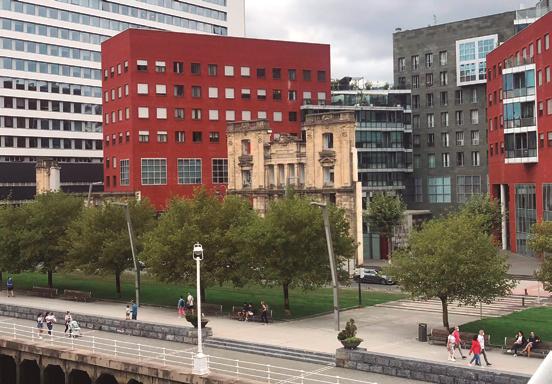

the river estuary. The wonderful interiors and guest rooms, top out this nautically inspired, innovative design. Located next to the estuary, between the Isozaki towers, the hotel’s guest rooms and terraces offer magnificent views of the river Nervión, as well as the Guggenheim Art Museum Bilbao structure, designed by Frank Gehry, Canadian American architect. Our plan was to visit the Guggenheim next day in the morning. After a short rest and shower, we headed towards the old town on foot, following the path of the river Nervión that flows through Bilbao, into the Cantabrian Sea. The river looked deep, unwelcomingly dark, and uninviting. Dense clouds loomed overhead. A fresh summer breeze with a deceptive edge, lifted small billows of spray that swirled outwards chaotically in all directions, producing misty clusters of luminous coloured speckles. A display of fine spray that precipitated excitedly, blown by the wind, into the mysterious troughs and eddies created by the flow of the black river water. The airborne spray, unwitting passenger of the wind, enveloped the slithers of city light falling from above, creating illusive, stroboscopic-like, gyrating phenomena, like long-lived stars, moving in and out of a distant galaxy’s spiral arm. I have yet to figure out, why the effect produced by these eerie combinations of water and light made me think of Gotham City, with its Gothic Cathedral, home of Batman, the legendary superhero. A surreal image came to mind of a sleeping city late at night, in low light, pouring with rain. A depressing abode were sinister menageries of narcissistic, anthropomorphic individuals with villainous motivations manoeuvre. Dubious undesirables, lurking, ready to strike—slithering under the dim lights of an illusory Neo-Gotham City night. Arguably, a pathetic, overthe-top depiction of a non-existent futuristic place where doom is always impending, and somehow ‘evil’ always succumbs. Against all odds ‘good’ always prevails, victoriously crushing the villainous ones in the face of imminent global disaster. Contestably, the human stomach is said to be one of the best timekeepers. Regular as clockwork the organ sends out eager notifications of nourishment it must receive. Paying heed to these incessant biological warnings, we strolled, with dinner in mind, towards the old town under a dark and menacing Au-
dado lugar a una opinión favorecida, de larga data y posiblemente engañosa, de que los vascos son “fósiles vivientes” de los primeros humanos modernos que colonizaron Europa.
Nos registramos en el Vincci Consulado de Bilbao, un nuevo hotel vanguardista junto a la ría del Nervión. Arquitectónicamente, el hotel emula un velero remontando la ría. Los maravillosos interiores y las habitaciones de los huéspedes, rematan este diseño innovador de inspiración náutica. Situado junto a la ría, entre las torres Isozaki, las habitaciones y las terrazas del hotel ofrecen unas magníficas vistas de la ría del Nervión, así como de la estructura del Museo de Arte Guggenheim Bilbao, diseñado por Frank Gehry, arquitecto estadounidense de origen canadiense.
Nuestro plan era visitar el Guggenheim al día siguiente por la mañana. Tras un breve descanso y una ducha, nos dirigimos a pie hacia el casco antiguo, siguiendo el camino del río Nervión, que atraviesa Bilbao y desemboca en el mar Cantábrico. El río tenía un aspecto profundo, poco acogedor y oscuro. Unas densas nubes se cernían sobre él. Una brisa fresca y veraniega, con un filo engañoso, levantaba pequeñas olas de rocío que se arremolinaban caóticamente en todas las direcciones, produciendo nebulosos cúmulos de motas de colores luminosos. Un despliegue de fino rocío que se precipitaba excitado, arrastrado por el viento, en las misteriosas hondonadas y remolinos creados por el flujo de las aguas del río negro. El rocío aéreo, pasajero involuntario del viento, envolvía las briznas de luz de la ciudad que caían desde arriba, creando fenómenos ilusorios, estroboscópicos y giratorios, como estrellas de larga vida, que entran y salen del brazo espiral de una galaxia lejana.
Aún no sé por qué el efecto producido por estas inquietantes combinaciones de agua y luz me hizo pensar en Gotham City, con su catedral gótica, hogar de Batman, el legendario superhéroe. Me vino a la mente la imagen surrealista de una ciudad dormida a altas horas de la noche, con poca luz y lloviendo a cántaros. Una morada deprimente en la que maniobran siniestros individuos narcisistas y antropomórficos con motivaciones villanas. Indeseables dudosos, al acecho, listos para atacar, deslizándose bajo las tenues luces de una ilusoria noche de Neo-Gotham
68 OTWO 35 / JUNE 2022 OTWO 35 / JUNE 2022 69
gust night sky. In the crepuscular light of a late Bilbao afternoon, we crossed the idiosyncratic Zubizuri bridge (Basque for white bridge), with its peculiar, curved walkway, supported by steel suspension cables attached to an eccentric, irregular-shaped, overhead arch. The structure by Santiago Calatrava, one of Spain’s most famous architects was not without controversy. It was badly designed; construction was poor and the materials inadequate. Raising safety concerns, Bilbao City Council filed for alterations to Calatrava’s original design. Unsurprisingly, the matter ended up in the Basque courts. Calatrava won the battle, sparking an interesting debate — what should take precedence: general interest or original artistic aesthetic?
After crossing the curious Zubizuri bridge, a short walk took us to the old town and into restaurant La Olla de la Plaza Nueva for dinner. This typically Basque eatery offers local and Mediterranean cuisines, nice beer, and an award-winning pinchos bar. The restaurant is family and vegetarian friendly. An unusual place presenting good food, a unique décor and an exuberant staff that showed excessive degrees of artistic enthusiasm.
Next day after breakfast we tried to visit the famous Guggenheim Art Museum Bilbao. To our dismay we found very long queues and hours wait to get in. The reason for the delay was a protest strike regarding a claim by the museum cleaners. The protest was scheduled to end at lunchtime, so we decided to postpone our morning visit, head into the city centre, and return later that afternoon.
Bilbao is rich in culture, leisure, architecture, design, and the arts. The city boasts a timeless Metro system designed by Sir Norman Foster, an airport by Spanish architect Santiago Calatrava, and a community centre (Alhondiga) designed by Philippe Starck, built over an old wine cellar. A magnet for tourism, Bilbao is home to twelve prestigious museums, including the eponymous Guggenheim, named after the Guggenheim Foundation, which attracts increasing numbers of visitors year after year.
The Guggenheim Bilbao was inaugurated on the 18th of October 1997, by King Juan Carlos I of Spain. This avant-garde building has become one of the world’s most important institutions for modern and contemporary art. The museum stimulates creativity
City. Podría decirse que es una representación patética y exagerada de un lugar futurista inexistente en el que la perdición es siempre inminente y, de alguna manera, el “mal” siempre sucumbe. Contra todo pronóstico, el “bien” siempre prevalece, aplastando victoriosamente a los villanos ante el inminente desastre global.
Se dice que el estómago humano es uno de los mejores guardianes del tiempo. Regular como un reloj, el órgano envía ansiosas notificaciones de los alimentos que debe recibir. Prestando atención a estos incesantes avisos biológicos, nos dirigimos, con la cena en mente, hacia el casco antiguo bajo un oscuro y amenazante cielo nocturno de agosto. A la luz crepuscular de una tarde bilbaína, cruzamos el idiosincrático puente Zubizuri (puente blanco en euskera), con su peculiar pasarela curvada, sostenida por cables de suspensión de acero sujetos a un excéntrico arco superior de forma irregular. La estructura de Santiago Calatrava, uno de los arquitectos más famosos de España, no estuvo exenta de polémica. Estaba mal diseñada, la construcción era deficiente y los materiales inadecuados. El Ayuntamiento de Bilbao, preocupado por la seguridad, pidió que se modificara el diseño original de Calatrava. Como era de esperar, el asunto acabó en los tribunales vascos. Calatrava ganó la batalla, lo que suscitó un interesante debate: ¿qué debe primar: el interés general o la estética artística original?
Tras cruzar el curioso puente de Zubizuri, un corto paseo nos llevó al casco antiguo y al restaurante La Olla de la Plaza Nueva para cenar. Este restaurante típicamente vasco ofrece cocina local y mediterránea, una buena cerveza y un bar de pinchos premiado. El restaurante es familiar y vegetariano. Un lugar inusual que presenta una buena comida, una decoración única y un personal exuberante que mostraba excesivos grados de entusiasmo artístico.
Al día siguiente, después del desayuno, intentamos visitar el famoso Museo de Arte Guggenheim de Bilbao. Para nuestra desgracia nos encontramos con larguísimas colas y horas de espera para entrar. El motivo del retraso era una huelga de protesta por una reclamación de las limpiadoras del museo. Estaba previsto que la protesta finalizara a la hora de comer, así que decidimos posponer nuestra visita de la mañana, dirigirnos al centro de la ciudad y volver más tarde.


70 OTWO 35 / JUNE 2022 OTWO 35 / JUNE 2022 71

OTWO 35 / JUNE 2022 73 72 OTWO 35 / JUNE 2022

and consolidates identity, driving positive economic development and urban regeneration. The Guggenheim Bilbao has become a vector that helps project and promote Bilbao’s image abroad.
The museum in Bilbao is among a number of institutions under the prestigious umbrella of the Solomon R. Guggenheim Foundation established in 1937. Since the late 1930s, the foundation has dedicated itself to the promotion, understanding, and appreciation of modern and contemporary art, through exhibitions, educational programs, research initiatives, and publications. As a member of the network, Guggenheim Bilbao has access to all collections and exhibition programmes owned by the Solomon R. Guggenheim Foundation.
The baroque sculptural edifice is a technological feat. From the outside, the Guggenheim has two faces: right-angled structures in limestone, and curved volumes clad in titanium. The architecture has an organic quality —glass elevators, stone stair towers, and curving walkways suspended from the ceiling, are presented as if in a kind of dreamscape. Curves, angles, and verticals converge, evoking organic metaphors. In the profuse light that flows in through the flower-shaped overhead glass and surrounding curtain walls, jets of vital energy seem to rise, producing a rich sensorial experience. The grand gallery extends the perception of space-time, with Richard Serra’s monumental work The Matter of Time, on permanent display, covering a length of 130 and a width of 30 metres.
Besides the impressive building itself, the first thing visitors are confronted with on arrival at the Guggenheim Bilbao, is Jeff Koons presentation Puppy. A giant West Highland terrier covered with flowering plants sitting just outside the main entrance. Also, along the outside area behind the main entrance is another of Jeff Koons creations, Tulips, a bunch of seven tulips five metres tall resembling giant balloons in luminescent colours that appear out of some magical wonderland.
Ever since its foundation the museum has built up its collection to bring together an ensemble of works of the first order by internationally renowned artist from 1945 to the present. From Abstract Expressionism through Informalism, Pop Art, Nouveau Realism, Arte Povera, Conceptual Art, Minimalism, and
Bilbao es una ciudad rica en cultura, ocio, arquitectura, diseño y arte. La ciudad cuenta con un sistema de metro atemporal diseñado por Sir Norman Foster, un aeropuerto del arquitecto español Santiago Calatrava y un centro comunitario (Alhóndiga) diseñado por Philippe Starck, construido sobre una antigua bodega. Imán para el turismo, Bilbao alberga doce prestigiosos museos, entre ellos el Guggenheim, que lleva el nombre de la Fundación Guggenheim, y que atrae cada año a un mayor número de visitantes.
El Guggenheim Bilbao fue inaugurado el 18 de octubre de 1997 por el Rey Juan Carlos I de España. Este edificio vanguardista se ha convertido en una de las instituciones más importantes del mundo para el arte moderno y contemporáneo. El museo estimula la creatividad y consolida la identidad, impulsando el desarrollo económico positivo y la regeneración urbana. El Guggenheim Bilbao se ha convertido en un vector que ayuda a proyectar y promocionar la imagen de Bilbao en el exterior.
El museo de Bilbao es una de las instituciones que se encuentran bajo el prestigioso paraguas de la Solomon R. Guggenheim Foundation, creada en 1937. Desde finales de la década de 1930, la fundación se ha dedicado a la promoción, comprensión y apreciación del arte moderno y contemporáneo, a través de exposiciones, programas educativos, iniciativas de investigación y publicaciones. Como miembro de la red, el Guggenheim Bilbao tiene acceso a todas las colecciones y programas expositivos de la Solomon R. Guggenheim Foundation.
El edificio escultórico barroco es una proeza tecnológica. Desde el exterior, el Guggenheim presenta dos caras: estructuras en ángulo recto de piedra caliza y volúmenes curvos revestidos de titanio. La arquitectura tiene un carácter orgánico: los ascensores de cristal, las torres de escaleras de piedra y las pasarelas curvas suspendidas del techo se presentan como una especie de paisaje onírico. Las curvas, los ángulos y las verticales convergen, evocando metáforas orgánicas. Con la profusa luz que entra por los cristales superiores en forma de flor y los muros cortina que los rodean, parecen surgir chorros de energía vital que producen una rica experiencia sensorial. La gran galería amplía la percepción del espacio-tiempo, con la monumental obra de Richard
OTWO 35 / JUNE 2022 75 74 OTWO 35 / JUNE 2022
post-Minimalism, to Land Art. The collection also includes a broad selection of German artists from the second half of the 20th Century, together with the Italian art of the Transvanguardia. The art of the 1980s, 1990s and Geometrical Abstraction are also extensively covered.
The diversity of the artists and movements of the collection come together in an ensemble of such magnitude and unique wealth that the Guggenheim Bilbao can claim to provide a real view of the art of our time. Going into any further detail of this monumental collection is out of the scope of this piece, however, I would like to highlight Anselm Kiefer’s Die beruhmten Orden der Nacht (The Renowned Orders of the Night, 510 x 500cm), created in 1995, shows the artist lying on the floor as if he were a corpse. Within an oversized canvas, Kiefer portrays himself as a lonely figure lying on dry cracked ground beneath an immense mantle of stars. Textured, provocative and moving.
From the Guggenheim we headed to the city centre, specifically towards Bar, Restaurante, Marisqueria Serantes III, situated at Alameda Mazarredo, in the Abando neighbourhood, where we had a reservation for dinner. One of the eight most important districts of Bilbao, Abando covers most of the city centre. Serantes III is one of three popular establishments in Bilbao offering traditional Basque cuisine, primarily specialising in seafood, line-caught wild, and nursery reared fish. The Serantes III restaurant menu also includes a selection of first-rate, dry-aged meats prepared on time-honoured wood and charcoal fire-grills, together with the finest Jabugo ham and heritage Chistorra (Basque sausage).
On arrival we were greeted, shown to our table, and presented with a complimentary bowl of pumpkin soup. From the extensive menu we ordered almejas (clams) from the Argoño region, which are appreciated, for their gastronomic value as well as for their ability to live out of water for a long time. To follow the delicious starter, we ordered Txangurru al horno (baked spider crab). The crab’s meat is removed from the shell and mixed with onions, leeks, tomatoes, and flambeaux with brandy. The mixture is then placed back into the empty spider crab shell and baked au gratin. We accompanied the crab with a Zarzuela (denotes a stew made with a selection of
Serra The Matter of Time, expuesta de forma permanente, que abarca una longitud de 130 y una anchura de 30 metros.
Además del impresionante edificio en sí, lo primero que se encuentra el visitante al llegar al Guggenheim Bilbao es la presentación de Jeff Koons, Puppy. Un gigantesco West Highland terrier cubierto de plantas con flores que se encuentra justo en la entrada principal. Además, en la zona exterior, detrás de la entrada principal, se encuentra otra de las creaciones de Jeff Koons, Tulips, un ramo de siete tulipanes de cinco metros de altura que parecen globos gigantes de colores luminiscentes salidos de algún país mágico.
Desde su fundación, el museo ha ido formando su colección hasta reunir un conjunto de obras de primer orden de artistas de renombre internacional desde 1945 hasta la actualidad. Desde el Expresionismo Abstracto, pasando por el Informalismo, el Pop Art, el Nuevo Realismo, el Arte Povera, el Arte Conceptual, el Minimalismo y el Post-Minimalismo, hasta el Land Art. La colección también incluye una amplia selección de artistas alemanes de la segunda mitad del siglo XX, junto con el arte italiano de la Transvanguardia. El arte de los años ochenta y noventa y la abstracción geométrica también están ampliamente cubiertos.
La diversidad de artistas y movimientos de la colección confluyen en un conjunto de tal magnitud y riqueza única que el Guggenheim Bilbao puede afirmar que ofrece una visión real del arte de nuestro tiempo. Entrar en más detalles de esta monumental colección está fuera del alcance de este artículo, sin embargo, me gustaría destacar Die beruhmten Orden der Nacht (Las renombradas órdenes de la noche, 510 x 500 cm) de Anselm Kiefer, creada en 1995, muestra al artista tumbado en el suelo como si fuera un cadáver. Dentro de un lienzo de gran tamaño, Kiefer se retrata a sí mismo como una figura solitaria que yace en un suelo seco y agrietado bajo un inmenso manto de estrellas. Contextualizado, provocador y conmovedor.
Desde el Guggenheim nos dirigimos al centro de la ciudad, concretamente al Bar, Restaurante, Marisquería Serantes III, situado en la Alameda Mazarredo, en el barrio de Abando, donde teníamos una reserva para cenar. Abando, uno de los ocho barrios


76 OTWO 35 / JUNE 2022 OTWO 35 / JUNE 2022 77
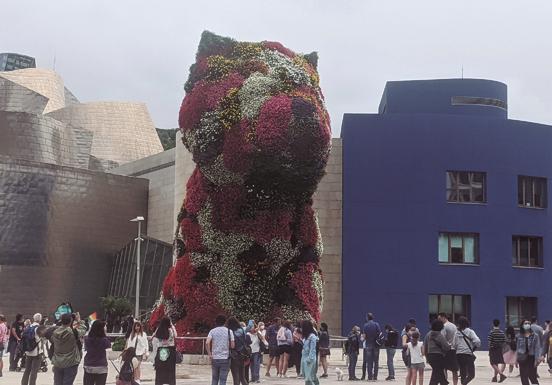

different types of fish) of fresh fish of the day. After a delightful culinary experience, we strolled back to our hotel along the banks of the Nervión river, with the futuristic Guggenheim building in the distance. In the shadow of the Guggenheim hides the Bilbao Fine Arts (Bellas Artes) Museum, which we visited on the third and final day of our stay in Bilbao. Founded in 1908, Bellas Artes sits at the edge of the Doña Casilda Iturrizar Park, and holds a collection of some 10,000 major works, from old masters to Basque luminaries, such as the sculptors Jorge Oteiza and Eduardo Chillida. The second largest and most visited museum in the Basque Country, after the Guggenheim, Fine Arts Bilbao houses a comprehensive collection from the Middle Ages to contemporary, including paintings by old masters like the enigmatic El Greco, and the likes of Cranach, Murillo, Goya, Van Dyck, Ruisdael and Bellotto. This splendid collection includes 19th century as well as modern art—Sorolla, Mary Cassatt, Paul Gauguin, Henri Le Sidaner, James Ensor, Peter Blake, Francis Bacon, and Richard Serra among many others.
Two highlights from the Bilbao Fine Arts were El Greco’s The Annunciation, an oil on canvas painting with characteristic emphasis on the vertical, and a ghostly light that enhances unreality. Cold colours, intense and contrasting, are applied rather loosely over powerful anatomical constructions. Exemplary of El Greco’ s highly personal style.
Also in the Bilbao Fine Arts, Pablo Milicua’s Los Monegros, de la serie Paisajes imaginarios, a dreamlike landscape with images cut out of magazines from the 1950s and 60s, replaced by cardboard. An impressive, rather unusual collage on paper.
Another of Bilbao’s important cultural institutions worth exploring are the conference centre and concert hall, constructed in 1999 — home of the Bilbao Symphony Orchestra, established in 1922. Principal conductors have been Armand Marsick, Vladimir Golschmann and the great Maurice Ravel, French composer of Boléro, the famous one-movement orchestral piece.
Bilbao stands out for its ground-breaking structures created by prestigious architects, making it an international reference for modern design. Its unique character emerges through combining the avant-garde with the traditional feel of its old town
más importantes de Bilbao, abarca la mayor parte del centro de la ciudad. Serantes III es uno de los tres establecimientos populares de Bilbao que ofrece cocina tradicional vasca, especializada principalmente en mariscos, pescados salvajes capturados en línea y criados en viveros. La carta del restaurante Serantes III también incluye una selección de carnes de primera calidad, preparadas en las tradicionales parrillas de leña y carbón, junto con el mejor jamón de Jabugo y la Chistorra.
Al llegar nos recibieron, nos indicaron nuestra mesa y nos obsequiaron con un cuenco de sopa de calabaza. De la extensa carta pedimos almejas de la región de Argoño, apreciadas, tanto por su valor gastronómico como por su capacidad de vivir fuera del agua durante mucho tiempo. Para seguir el delicioso entrante, pedimos Txangurru al horno. La carne del cangrejo se saca del caparazón y se mezcla con cebolla, puerro, tomate y se flambea con brandy. La mezcla se vuelve a colocar en el caparazón vacío del centollo y se gratina en el horno. Acompañamos el centollo con una Zarzuela (denota un guiso hecho con una selección de diferentes tipos de pescado) de pescado fresco del día. Después de una deliciosa experiencia culinaria, regresamos a nuestro hotel paseando por la orilla del río Nervión, con el futurista edificio Guggenheim en la distancia. A la sombra del Guggenheim se esconde el Museo de Bellas Artes de Bilbao, que visitamos el tercer y último día de nuestra estancia en Bilbao. Fundado en 1908, el Bellas Artes se encuentra al borde del Parque de Doña Casilda Iturrizar, y alberga una colección de unas 10.000 obras importantes, desde maestros antiguos hasta luminarias vascas, como los escultores Jorge Oteiza y Eduardo Chillida. El segundo museo más grande y más visitado del País Vasco, después del Guggenheim, el Bellas Artes de Bilbao alberga una completa colección desde la Edad Media hasta la contemporánea, incluyendo pinturas de antiguos maestros como el enigmático El Greco, y de la talla de Cranach, Murillo, Goya, Van Dyck, Ruisdael y Bellotto. Esta espléndida colección incluye tanto arte del siglo XIX como moderno: Sorolla, Mary Cassatt, Paul Gauguin, Henri Le Sidaner, James Ensor, Peter Blake, Francis Bacon y Richard Serra, entre muchos otros.
Dos obras destacadas del Bellas Artes de Bilbao
78 OTWO 35 / JUNE 2022 OTWO 35 / JUNE 2022 79
(Casco Viejo), full of charming streets and bars that offer good food, usually in the form of the famous traditional Basque pintxos. If you don’t fancy a restaurant or tapas bar, La Ribera Market is a beautiful Art Deco building on the banks of the Nervión River. Here, fresh produce recently purchased, is cooked in your presence, for your immediate consumption, there and then. The interior of the market is filled with light that filters through beautifully stained glass, with views of the Casco Viejo.
Bilbao also boasts the Gothic Santiago Cathedral, originally built during the 14th-15th centuries. Architecturally, the existing edifice is made up of a mixture of styles: from the 15th century Gothic cloister, main vault, and the beautiful portal (Puerta del Angel), that gives access to Correo street, and the ostentatious Gothic Revival façade and spire.
Bilbao is the new modern face of the Basque Country. The city has been able to successfully mix traditional Basque culture with a new vision for the future. It is an absolute must for design and culture lovers. Surrounded by green hills, the city lies close to the sea. Sophisticated and humming with action, Bilbao at the same time is relatively stress-free. A great city to enjoy.
We had come to the end of our road trip. In the morning we would initiate our journey home to Gibraltar.

fueron La Anunciación de El Greco, un óleo sobre lienzo con un característico énfasis en la verticalidad y una luz fantasmal que potencia la irrealidad. Los colores fríos, intensos y contrastados, se aplican con cierta soltura sobre poderosas construcciones anatómicas. Es un ejemplo del personalísimo estilo de El Greco.
También en el Bellas Artes de Bilbao, Los Monegros, de la serie Paisajes imaginarios, de Pablo Milicua, un paisaje onírico con imágenes recortadas de revistas de los años 50 y 60, sustituidas por cartón. Un impresionante e inusual collage sobre papel.
Otra de las instituciones culturales importantes de Bilbao que merece la pena conocer es el centro de conferencias y la sala de conciertos, construidos en 1999, que albergan a la Orquesta Sinfónica de Bilbao, creada en 1922. Sus principales directores han sido Armand Marsick, Vladimir Golschmann y el gran Maurice Ravel, compositor francés del Boléro, la famosa pieza orquestal de un solo movimiento.
Bilbao destaca por sus innovadoras estructuras creadas por prestigiosos arquitectos, que la convierten en una referencia internacional del diseño moderno. Su carácter único surge de la combinación de la vanguardia con el ambiente tradicional de su Casco Viejo, lleno de calles encantadoras y bares que ofrecen buena comida, normalmente en forma
de los famosos pintxos tradicionales vascos. Si no le apetece ir a un restaurante o a un bar de tapas, el Mercado de la Ribera es un hermoso edificio Art Decó a orillas del río Nervión. Aquí, los productos frescos recién comprados, se cocinan en su presencia, para su consumo inmediato, allí mismo. El interior del mercado está lleno de luz que se filtra a través de hermosas vidrieras, con vistas al Casco Viejo.
Bilbao también cuenta con la Catedral de Santiago, de estilo gótico, construida originalmente durante los siglos XIV y XV. Arquitectónicamente, el edificio existente se compone de una mezcla de estilos: desde el claustro gótico del siglo XV, la bóveda principal y la hermosa portada (Puerta del Ángel), que da acceso a la calle Correo, hasta la ostentosa fachada y chapitel de estilo gótico renacentista. Bilbao es la nueva cara moderna del País Vasco. La ciudad ha sabido mezclar con éxito la cultura tradicional vasca con una nueva visión de futuro. Es una visita obligada para los amantes del diseño y la cultura. Rodeada de verdes colinas, la ciudad se encuentra cerca del mar. Sofisticada y llena de acción, Bilbao es al mismo tiempo relativamente libre de estrés. Una gran ciudad para disfrutar. Habíamos llegado al final de nuestro viaje por carretera. Por la mañana iniciaríamos nuestro viaje de vuelta a casa, a Gibraltar.
OTWO 35 / JUNE 2022 81 80 OTWO 35 / JUNE 2022

VOLUME 2 / VOLUMEN 2
The
myth of the muslim invasion of Spain
El mito de la invasión musulmana de España
Juanlu González
Article and images

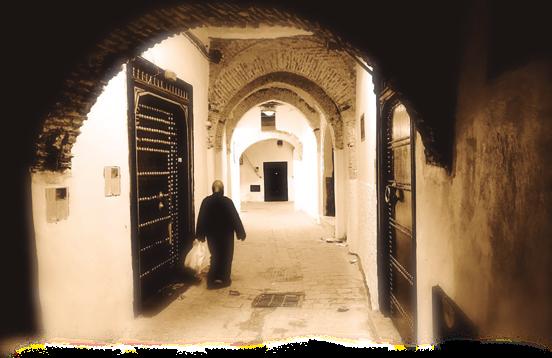
A paradigm can be defined as a theory or combination of hypotheses that explains specific features of human reality. The phrase is most commonly used to refer to an approved framework of concatenated knowledge by the Academy. It can, however, have a social dimension that relates to a human group’s views or how it perceives and understands the world around it. Both meanings are blended at times, and human knowledge is formed, as epistemology teaches us, as the sum of beliefs that agree with truths. The problem arises when the foundations of scientific knowledge are not as solid as one might think, when they are in the process of profound revision or replacement by new ones and popular beliefs are firmly anchored to the terrain of faith. This is the reason why some paradigm shifts are so difficult and need so much time to settle. This is precisely what happens with another of the pillars on which the identity of Spain as a nation is based and which, of course, has its origin in the history of the Strait of Gibraltar and its two tempestuous shores: I am referring to the Islamic invasion of the Iberian Peninsula.
If anyone is told that what we have been taught in history books about the conquest of Spain belongs more to the realm of mythology than to that of proven facts, they will think we have gone mad. For the public opinion, this subject has reached the concept of dogma, an immovable and undeniable truth that

Podría decirse que un paradigma es una teoría o conjunto de ellas que sirven para explicar aspectos concretos de las realidades humanas. El término suele usarse habitualmente para designar a un determinado armazón de saberes concatenados aceptados por la Academia. No obstante, también puede tener una dimensión social que hace referencia a las creencias o a la forma que posee un grupo humano de ver y entender el mundo que le rodea. En determinadas ocasiones se mezclan ambas acepciones y se genera el conocimiento humano, la suma de las creencias que coinciden con verdades, como nos dice la epistemología.
El problema surge cuando los cimientos del conocimiento científico no son tan sólidos como se pudiera pensar, cuando se encuentran en proceso de profunda revisión o sustitución por otros nuevos y las creencias populares se anclan férreamente al terreno de la fe. Esa es la razón por la que algunos cambios de paradigma sean tan dificultosos y necesiten tanto tiempo para asentarse. Justamente, esto es lo que ocurre con otro de los pilares sobre los que se asienta la identidad de España como nación y que ¡cómo no! tiene su origen en la historia del Estrecho de Gibraltar y sus dos procelosas orillas: me refiero a la invasión islámica de la Península Ibérica.
Si a cualquier persona se le dice que lo que nos han enseñado en los libros de historia sobre la con-
OTWO 35 / JUNE 2022 85 84 OTWO 35 / JUNE 2022
cannot even be discussed. If a debate is initiated, confronting different models of approach to the issue, it will inevitably veer towards ideological or political arenas, never to be taken to the academic or scientific level, where the traditional opinion would barely resist half an assault. And of course, being faithful to the iconoclastic tradition of Narrowing the Strait, this myth cannot remain unscathed and get away without the critical scrutiny that the matter deserves.
For many, the history of Spain presents a linear course, marked with precise temporal milestones, considering it a succession of external cultures that invaded or visited it from many different places, such as Phoenicians, Greeks and Carthaginians, Romans, Germans... almost always dangerously despising its native inhabitants. That was until “the Arabs” arrived. Then everything changed. Unlike the previous invasions, we did not tolerate this one, we fought it for 800 long years, until it was definitively defeated. The good Spaniards took refuge in the north, from where the south was reconquered and repopulated. Thus, history resumed its previous pulse, as if nothing had happened, until today. Easy, isn’t it? So simple that even a primary school student could understand it.
But things are never that easy. Unfortunately, the tendency of processes, systems and organisms is always towards complexity. The second Law of Thermodynamics already foresees this when it refers to the increase of entropy, of the disorder of the universe. The problem, at least one of them, is that we want to interpret history with the current glasses full of distortions and prejudices, that we sin of presentism and that only brings us gross errors. We must also bear in mind that history is written by the victors and that no history of Spain has ever been written from the south, it has always been the other way around. The curious thing is that many people still believe that fables like that of Don Pelayo or similar correspond to real facts.
Let us consider the historical falsehoods regarding the “Muslim invasion of Spain”. To begin with, in the year 711 Spain did not exist. There were Roman and Visigothic references to Hispania, but as administrative figures of the occupiers, nothing like what we understand by a country. Moreover, can anyone believe that in the eighth century 12,500 soldiers with
quista de España pertenece más al ámbito de la mitología que al de los hechos probados, pensará que nos hemos vuelto locos. Para la opinión pública este tema ha alcanzado el concepto de dogma, una verdad inamovible e innegable que no puede ni siquiera discutirse. Si se llega a entablar un debate confrontando diferentes modelos de aproximación a la cuestión, indefectiblemente este virará hacia arenas ideológicas o políticas para jamás llevarlo al plano académico o científico, donde la opinion tradicional apenas resistiría medio asalto. Y ¡cómo no!, siendo fieles a la tradición iconoclasta de Estrechando el Estrecho, este mito no puede quedar indemne y salir de rositas sin un escrutinio crítico como el asunto merece. Para muchos, la historia de España presenta un curso lineal, marcado con hitos temporales precisos, considerándola una sucesión de culturas externas que la invadían o visitaban desde muchos lugares distintos, como fenicios, griegos y cartagineses, romanos, germanos… casi siempre despreciando peligrosamente a sus habitantes nativos. Eso fue así hasta que llegan «los árabes». Ahí cambió todo. Al contrario que las anteriores invasiones, esta no la toleramos, la combatimos durante 800 largos años, hasta que fue definitivamente derrotada. Los buenos españoles se refugiaron en el norte, desde donde se reconquistó y repobló el sur. Así, la historia retomó su pulso anterior, como si nada, hasta el día de hoy.
¿Fácil verdad? Tan simple que lo entendería hasta un alumno de Primaria.
Pero las cosas jamás son tan fáciles. Desgraciadamente, la tendencia de los procesos, los sistemas y los organismos siempre es hacia la complejidad. Ya lo prevé la segunda Ley de la Termodinámica cuando se refiere al aumento de la entropía, del desorden del universo. El problema, al menos uno de ellos, es que queremos interpretar la historia con las gafas actuales llenas de distorsiones y prejuicios, que pecamos de presentismo y eso solo nos trae errores de bulto.
También tenemos que tener en cuenta que la historia la escriben los vencedores y que jamás ninguna historia de España se ha redactado desde el sur, siempre ha sido al revés. Lo curioso es que mucha gente aún siga creyendo que fábulas como la de Don Pelayo o similares se corresponden con hechos reales. Entremos a considerar las falsedades históricas en relación con la «invasión musulmana de España».


OTWO 35 / JUNE 2022 87 86 OTWO 35 / JUNE 2022

their respective supplies, their quartermaster and their horses moved through the Strait of Gibraltar?
The supposed invasion was actually a trap well designed by Count Julian. The decoy was provided by a few Visigothic troops commanded by General Tariq (who was possibly actually called Tarico) who crossed from North Africa and were met by three army corps, also Visigothic. A central one commanded by Don Rodrigo, the last Visigoth king, supported on the left flank by troops of the archbishop of Seville and on the right, by the forces of Witiza’s sons, who were violently displaced from the throne by Rodrigo. When he attacked the invaders in the well-known battle of La Janda -not of the Guadalete-, his presumed allies turned against him and, among all, gave a kind of coup d’état that, in the end, definitively ended the Visigothic dominion in the Iberian Peninsula, fracturing again in small independent autochthonous kingdoms that remained so for about 150 years. Of course, nothing like the violent entry of a new religion, a new culture and a new dynasty coming from thousands of miles away. That’s not how things happen.
Goths against Goths, Christians against Christians, all speaking the same language, that was what was confronted in those days of July 711. About 200 years later all this was transformed by the chroniclers into an invasion that never took place in those terms. But it is not history, it is myth or, if you will, pure epic literature. A useful feat, as much to the Arabs, who claimed an express invasion, in an impossible feat without the help of Allah, as to the Christians, who could not invent a reconquest without the existence of a previous conquest. A reconquest that, in the end, has been used to exhaustion as the cornerstone of Spain’s identity, which is why this part of history is so tainted with politics and its reinterpretation or simple revision is considered heretical.
So there was no Spain, there was no invasion... but there was no Islam either, there was no Koran. The Koran was compiled and codified around the beginning of the 9th century onwards. That is why important Christian religious men from Cordoba, today raised to the divine altars, had no contact with the sacred book until the year 850, admitting that they did not even know the prophet Mohammed or his meaning by hearsay. How can the two realities fit together? How can one speak of a Muslim invasion in 711 if it was
Para empezar, en el año 711 no existía España. Existían referencias romanas y visigodas a Hispania, pero como figuras administrativas de los ocupantes, nada parecido a lo que entendemos por un país. Aún más, ¿alguien puede creer que en el siglo VIII se desplazaran por el Estrecho 12.500 soldados con sus respectivos pertrechos, su intendencia y sus caballos? La supuesta invasión en realidad fue una trampa bien diseñada por el conde Don Julián. El señuelo lo ponían unas pocas tropas visigodas comandadas por el general Tariq (que posiblemente se llamase en realidad Tarico) que cruzaron desde el norte de África a las que fueron a darle el encuentro tres cuerpos de ejército también visigodos. Uno central comandado por Don Rodrigo, el último rey visigodo, apoyado en el flanco izquierdo por tropas del arzobispo de Sevilla y en el derecho, por las fuerzas de hijos de Witiza, que fueron desplazados del trono violentamente por Rodrigo. Cuando este atacó a los invasores en la conocida batalla de La Janda —que no del Guadalete—, sus presuntos aliados se volvieron contra él y, entre todos, dieron una especie de golpe de estado que, a la postre, acabó definitivamente con el dominio visigodo en la Península Ibérica, volviéndose a fracturar en pequeños reinos autóctonos independientes que permanecieron así alrededor de 150 años. Desde luego, nada parecido a la entrada violenta de una nueva religión, una nueva cultura y una nueva dinastía venida de miles de kilómetros de distancia. Las cosas no suceden así.
Godos contra godos, cristianos contra cristianos, todos hablando el mismo idioma, eso fue lo que se enfrentó en aquellos días de julio del 711. Alrededor de 200 años después todo esto se transformó por los cronistas en una invasión que jamás tuvo lugar en esos términos. Pero no es historia, es mito o, si se quiere, pura literatura épica. Una hazaña útil, tanto a los árabes que se apuntaron una invasión express, en una gesta imposible sin la ayuda de Alá, como a los cristianos, que no podían inventarse una reconquista sin la existencia de una conquista previa. Una reconquista que, a la postre, se ha usado hasta la extenuación como piedra angular de la identidad de España, por eso esta parte de la historia está tan contaminada de política y se considera herética su reinterpretación o su simple revisión. Así que no había España, no hubo invasión… pero

OTWO 35 / JUNE 2022 89 88 OTWO 35 / JUNE 2022
not until 150 years later that a literate minority in the Iberian Peninsula began to know about religious Islam? Simply because the starting point is false. Moreover, around the year 750 St. John Damascene considers what in the future would be Islam as a mere heresy of Christianity that gradually separated from it until it became a new religion, built on its own foundations. It was probably founded by followers of Unitarian Christians (Arians) who did not accept the adoption of the dogma of the trinity by the religious leadership at the Council of Nicaea in Constantinople in 381.
Religious Islam shares with Christianity and Judaism many of its most relevant figures. Abraham, Moses, the Virgin Mary, the Archangel Gabriel, Jesus (who covers several chapters of the Koran) and many others. That is why in Al Andalus, the other confessions “of the book” generally enjoyed protection and respect. As an example, a button. Everyone knows that the most important celebration in Islam is the Feast of the Lamb or Feast of Sacrifice, which commemorates a passage in the Bible (and the Koran) starring Abraham, who was willing to sacrifice his own son as a sign of gratitude to God, as he had been instructed. However, at the last moment, the archangel Gabriel stopped him and gave him a lamb to offer in sacrifice in place of his son, in an act of divine kindness, the ultimate reason for the feast.
The evolution from Christianity to Islam took place over a few hundred years, very gradually, both in the East and in the West. In this sense, although of oriental origin (like the other two confessions), there was an important autochthonous component that would cause that the transition from one to the other, should not have been traumatic for the peninsular Christians, more inclined to the monotheistic thesis than to the concealed polytheism of the holy trinity. We should stop talking about invasion and change it for acculturation, for Arabization, the natural adoption of a culture, a language, some knowledge... coming from the East that reached in Al Andalus its highest levels of splendor when mixed with the native substratum, especially fertile, cultured and urbanized. In addition, it is quite possible that this process began during the decline of the Roman and late Roman world, long before 711. The Islamic religion would come later.
es que tampoco había Islam, no había Corán. El Corán se recopila y codifica en torno al inicio del siglo IX en adelante. Por eso importantes religiosos cristianos cordobeses hoy subidos a los altares divinos no tienen contacto alguno con el libro sagrado hasta el año 850, admitiendo no conocer ni de oídas al profeta Mahoma ni su significado. ¿Cómo pueden casar ambas realidades? ¿Cómo se puede hablar de una invasión musulmana en el 711 si hasta 150 años después no se comienza a conocer el islam religioso por parte de una minoría letrada de la Península Ibérica? Simplemente porque el punto de partida es falso. Más aún, hacia el año 750 San Juan Damasceno considera lo que en el futuro sería el islam como una mera herejía del cristianismo que fue separándose paulatinamente de él hasta constituirse como una nueva religión, construida sobre sus propios cimientos. Probablemente se fundara por seguidores de cristianos unitaristas (arrianos) que no admitieron la adopción del dogma de la trinidad por parte de la cúpula religiosa en el Concilio de Nicea en Constantinopla en el año 381. El Islam religioso comparte con el cristianismo y el judaísmo muchas de sus figuras más relevantes. Abraham, Moisés, la Virgen María, el Arcángel Gabriel, Jesús (que copa varios capítulos del Corán) y muchos otros. Por eso en Al Andalus, las otras confesiones «del libro» gozaron en general de protección y respeto. Como muestra, un botón. Todo el mundo sabe que la celebración más importante en el islam es la Fiesta del Cordero o Fiesta del Sacrificio, que conmemora un pasaje de la Biblia (y del Corán) protagonizado por Abraham, que estuvo dispuesto a sacrificar a su propio hijo en señal de agradecimiento a Dios, tal y como se le había indicado. Sin embargo, en el último momento, el arcángel Gabriel lo detuvo y le entregó un cordero para que lo ofreciera en sacrificio en lugar de su hijo, en un acto de bondad divina, motivo último de la fiesta.
La evolución desde el cristianismo al Islam se produjo durante unos pocos cientos de años, de manera muy paulatina, tanto en Oriente como en Occidente.
En este sentido, aunque de origen oriental (como las otras dos confesiones), hubo un importante componente autóctono que provocaría que la transición de una hacia la otra, no debió ser traumática para los cristianos peninsulares, más proclives a las tesis monoteístas que al politeísmo encubierto de la santísima trinidad. Debemos de dejar de hablar de invasión y


OTWO 35 / JUNE 2022 91 90 OTWO 35 / JUNE 2022
cambiarla por aculturación, por arabización, la adopción natural de una cultura, una lengua, unos saberes… venidos de Oriente que alcanzaron en Al Andalus sus más altas cotas de esplendor al mezclarse con el sustrato nativo, especialmente fértil, culto y urbanizado. Y es bien posible que este proceso comenzara durante el declive del mundo romano y tardorromano, mucho antes del 711. La religión islámica vendría después.
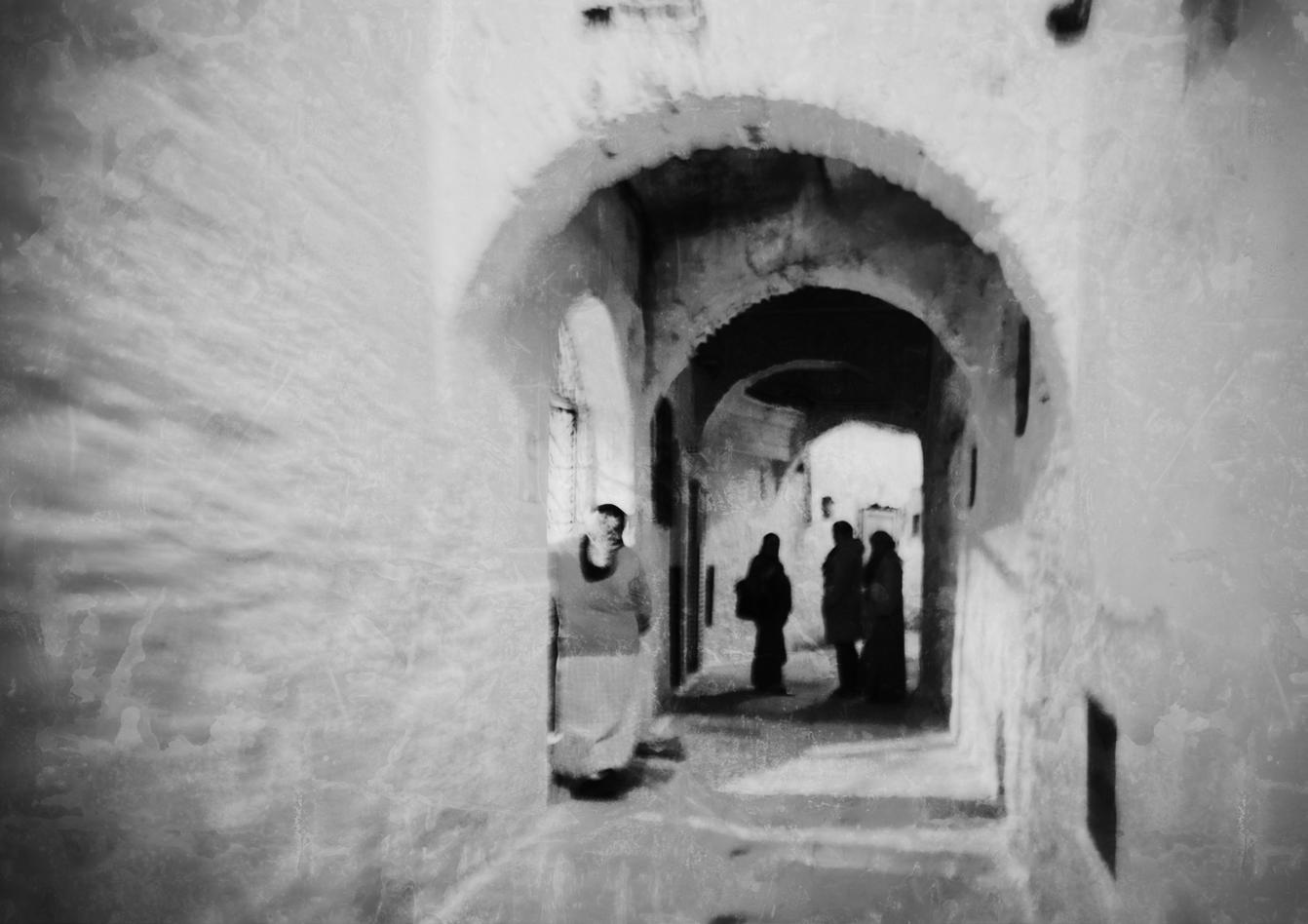
OTWO 35 / JUNE 2022 93 92 OTWO 35 / JUNE 2022
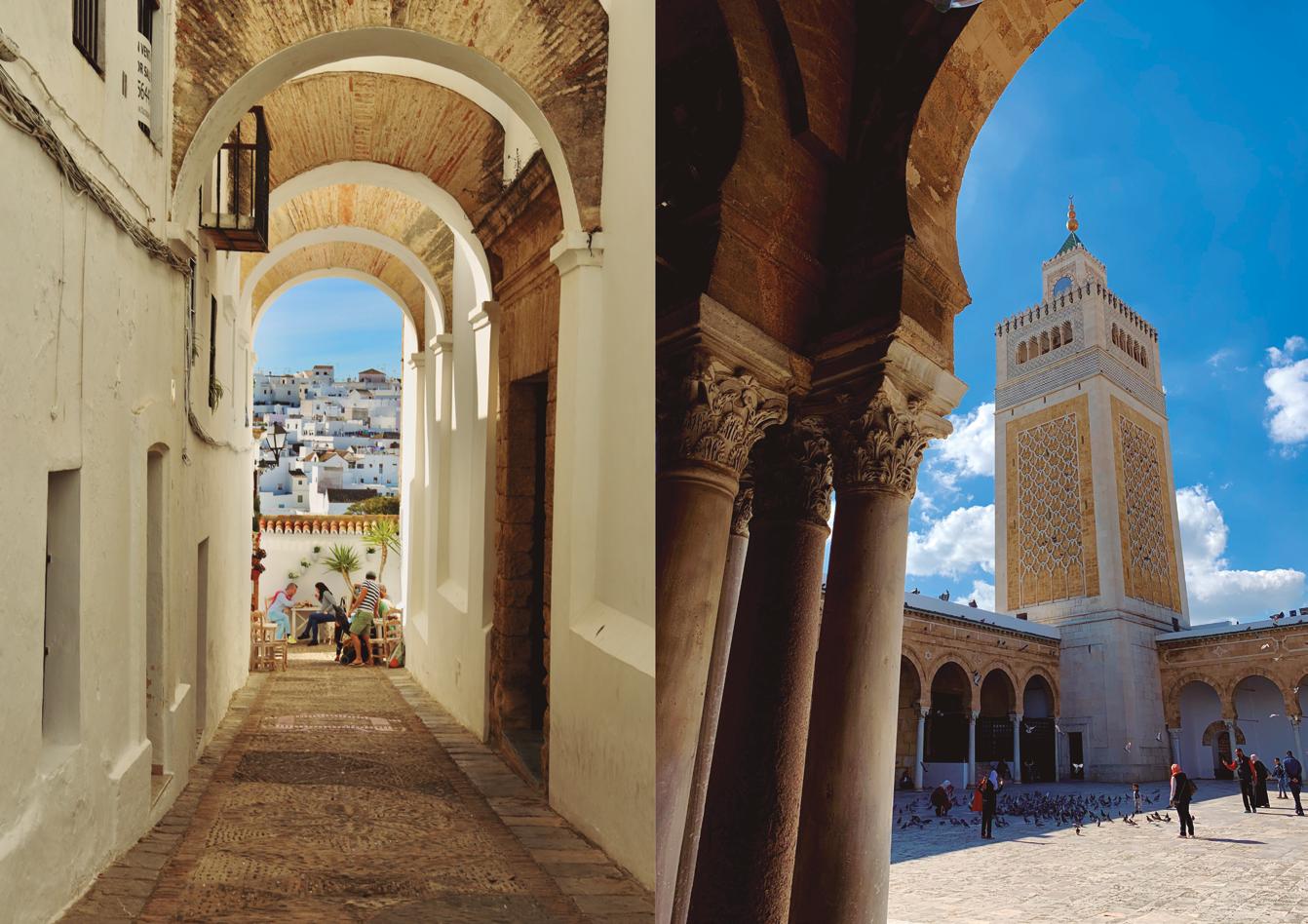
OTWO 35 / JUNE 2022 95 94 OTWO 35 / JUNE 2022

OTWO 35 / JUNE 2022 97 96 OTWO 35 / JUNE 2022

OTWO 35 / JUNE 2022 99 98 OTWO 35 / JUNE 2022
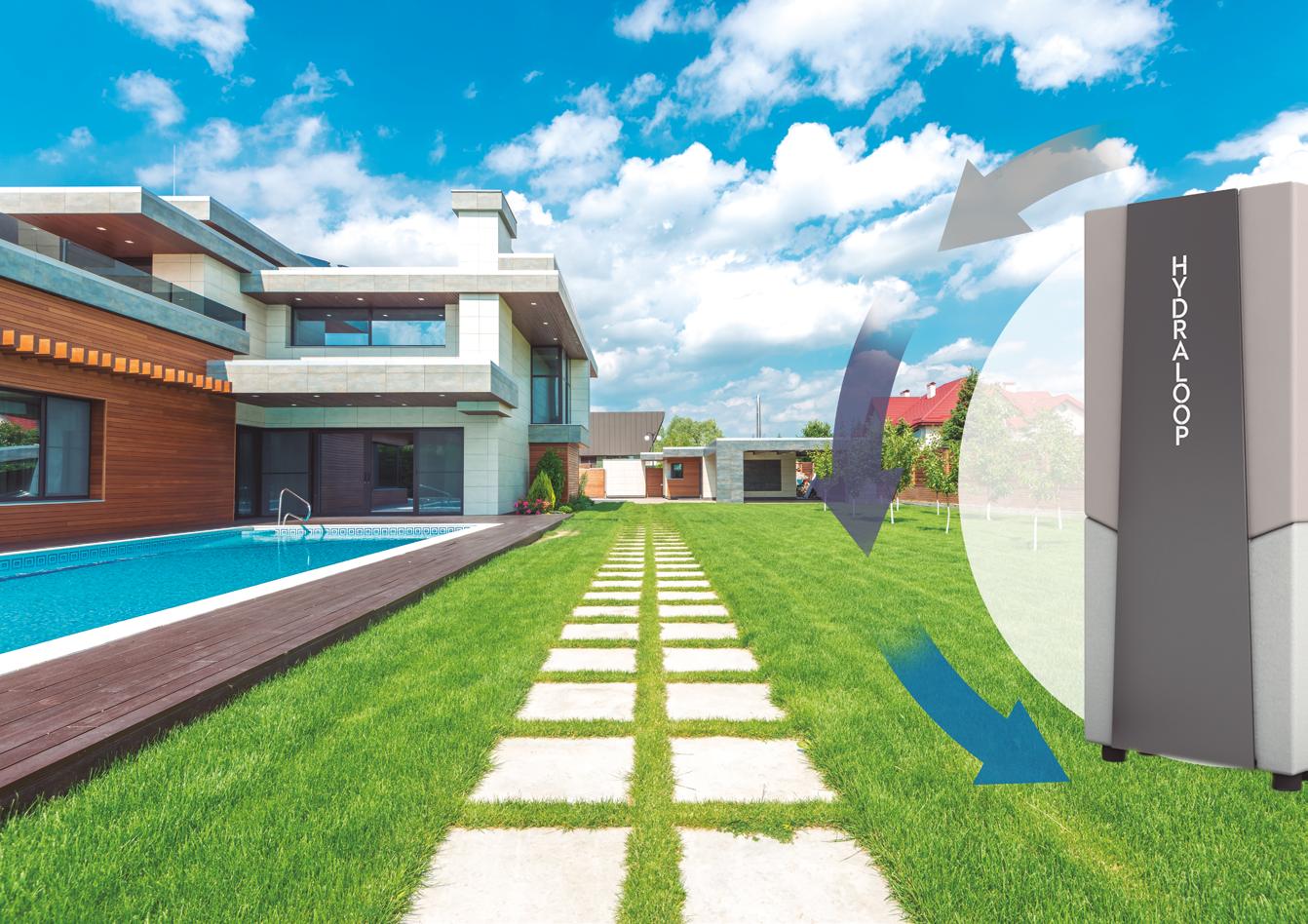

Introducing the Hydraloop
AMA Services Ltd (AMA) is based in Gibraltar and specialises in mechanical, electrical and building services engineering within the construction and building industry. We also provide quantity surveying, clerk of works, fire engineering and structural engineering services.
We are conscious of the impact the building industry has on the environment. With on-going construction that comes with increasing building related carbon emissions, lowering energy and water consumption from buildings is at the forefront of our work. To focus on this, we have recently opened a sustainable energy engineering department. We research into the most energy efficient engineering products available on the market for buildings and include them in our designs. This is what lead us to finding the Hydraloop.
What is the Hydraloop?
The Hydraloop is a greywater recycling unit.
The unit collects greywater from showers, baths, washing machines, wash hand basins, even condensate from air conditioning units. It then cleans the water through a 6 stage patented process without filters or chemicals which can be reused for garden irrigation, flushing toilets, washing machines and topping up swimming pools. The water can also be conveyed and stored into a storage tank for future use.
The hydraloop units come in two sizes and can be installed as a single unit in homes or in cascade set up for larger scale applications like hotels and gyms.
We are currently facing the consequences of climate change – rising sea levels, forest fires and droughts, to name a few. Andalucía in Spain for example, is facing a severe drought with winter precipitation levels for 2021-2022 recorded at 35% below the historical average (Copernicus.eu). This water crisis is concerning.
Only 0.014% of water on our planet is fresh and available for nature, animals and people (Hydraloop.com). Rainfall is the only way we can replenish our sources and there is not enough to meet the demand. Lowering our water consumption and recycling our own water are the most effective solutions to this water crisis.
In Gibraltar, our potable water comes from AquaGib’s reverse osmosis plants with a daily capacity of 6,300m3 (Aquagib.gi). It may seem our fresh water supply from these plants is unlimited, however these plants are energy intensive and it is important to consider this when we consume water. AquaGib and the Department for Environment welcomes water conservation.
Our neighbours in Andalucia are not only welcoming water conservation, they have made it compulsory. The Junta de Andalucía require all hotels and hotel-apartments to install a tertiary water, greywater or rainwater recycling system to service the toilets and irrigate green areas, to reduce water consumption from water reservoirs (Decreto 47/2004).
For more information on the product, please visit the Hydraloop website. AMA Services are also more than happy to provide any advice or support on installing the Hydraloop. We are official suppliers and installers of the product in Gibraltar but we can also assist with the south of Spain.
DECENTRALIZED WATER RECYCLING UNIT COLLECTS GREY WASTE WATER RECYCLES FOR SAFE, CLEAN AND DESINFECTED USE SERVICES LTD 9/15 Horse Barrack Lane. Gibraltar (T): +350 20040037 info@amaservices.gi / sales@amaservices.gi www.ama-services-gibraltar.co.uk


Presentamos el Hydraloo
AMA Services Ltd (AMA) tiene su sede en Gibraltar y está especializada en ingeniería mecánica, eléctrica y de servicios de construcción en el sector de la construcción. Proporcionamos servicios de medición de cantidades, de secretario de obras, de ingeniería contra incendios y de ingeniería estructural.
Somos conscientes del impacto que el sector de la construcción tiene en el medio ambiente. Con la construcción en curso, que conlleva un aumento de las emisiones de carbono relacionadas con la construcción, la reducción del consumo de energía y agua de los edificios es una de las prioridades de nuestro trabajo. Para centrarnos en ello, hemos abierto recientemente un departamento de ingeniería energética sostenible. Investigamos los productos de ingeniería más eficientes energéticamente disponibles en el mercado para los edificios y los incluimos en nuestros diseños. Esto es lo que nos llevó a encontrar el Hydraloop.
¿Qué es el Hydraloop?
El Hydraloop es una unidad de reciclaje de aguas grises.
La unidad recoge las aguas grises de duchas, baños, lavadoras, lavabos e incluso el condensado de los aparatos de aire acondicionado. A continuación, limpia el agua mediante un proceso patentado de 6 etapas sin filtros ni productos químicos, que puede reutilizarse para el riego de jardines, las cisternas de los inodoros, las lavadoras y el llenado de piscinas. El agua también puede transportarse y almacenarse en un depósito para su uso futuro.
Las unidades hydraloop están disponibles en dos tamaños y pueden instalarse como una sola unidad en los hogares o en cascada para aplicaciones a mayor escala, como hoteles y gimnasios.
Actualmente nos enfrentamos a las consecuencias del cambio climático: aumento del nivel del mar, incendios forestales y sequías, por nombrar algunas. Andalucía, en España, por ejemplo, se enfrenta a una grave sequía con niveles de precipitación invernal para 2021-2022 registrados en un 35% por debajo de la media histórica (Copernicus.eu). Esta crisis del agua es preocupante.
Sólo el 0,014% del agua de nuestro planeta es dulce y está disponible para la naturaleza, los animales y las personas (Hydraloop.com). La lluvia es la única forma de reponer nuestras fuentes y no hay suficiente para satisfacer la demanda. Disminuir nuestro consumo de agua y reciclar nuestra propia agua son las soluciones más eficaces a esta crisis del agua.
En Gibraltar, nuestra agua potable procede de las plantas de ósmosis inversa de AquaGib, con una capacidad diaria de 6.300 m3 (Aquagib.gi). Puede parecer que nuestro suministro de agua dulce procedente de estas plantas es ilimitado, sin embargo, estas plantas consumen mucha energía y es importante tenerlo en cuenta cuando consumimos agua. AquaGib y la Consejería de Medio Ambiente se congratulan de la conservación del agua. Nuestros vecinos de Andalucía no sólo ven con buenos ojos la conservación del agua, sino que la han hecho obligatoria. La Junta de Andalucía exige a todos los hoteles y apartamentos hoteleros que instalen un sistema de reciclaje de aguas terciarias, grises o pluviales para dar servicio a los aseos y regar las zonas verdes, con el fin de reducir el consumo de agua de los depósitos (Decreto 47/2004).
Para obtener más información sobre el producto, visite el sitio web de Hydraloop. AMA Services también está encantada de proporcionar cualquier consejo o apoyo en la instalación del Hydraloop. Somos proveedores e instaladores oficiales del producto en Gibraltar, pero también podemos ayudar en el sur de España.
AGUA DESCENTRALIZADA UNIDAD DE RECICLAJE RECOGE AGUAS RESIDUALES RECICLA PARA UN USO SEGURO, LIMPIO Y DESINFECTADO SERVICES LTD 9/15 Horse Barrack Lane. Gibraltar
+350 20040037 info@amaservices.gi / sales@amaservices.gi www.ama-services-gibraltar.co.uk
(T):
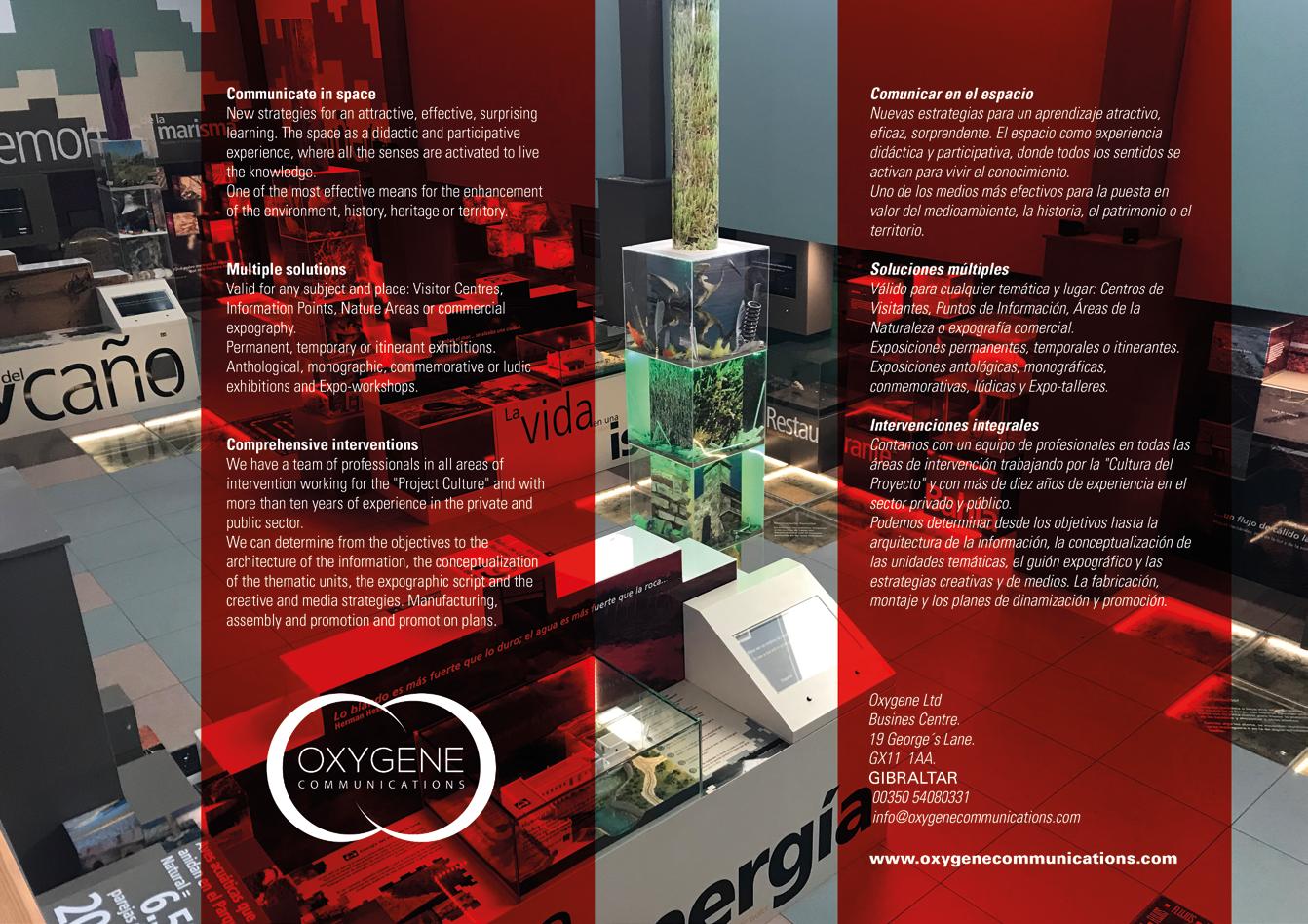



LGBTQ+ and Mental Health
Every year in June we celebrate love and peace for all genders and sexualities no matter who the person is and what their beliefs are. It’s known as Pride Month. It mainly focuses on the LGBTQ+ community. The history of this celebration dates to the 28th of June 1969, when there was a police raid at gay-friendly bar called the Stonewall Inn in New York, USA. The LGBTQ+ community in the city that the bar was in had enough of the unnecessary violence against them and began the peaceful protests that lasted for days. Exactly one year after the incident, activists began its very first Gay Pride parade. Thousands of people challenged the anti-gay laws. We are very fortunate that in Gibraltar and many countries the anti-gay laws are no more and now there are laws that protect the gay and transgender people. For example, in the UK they have the Equality Act 2010 and the Marriage (Same Sex Couples) Act 2013. However, the history of hatred towards
gays still lingers to some people. So far there are sadly still some people that are against same sex partnership and living as anything other than your birth identity.
Today there’s still a lot of discrimination against the LGBTQ+ community such as hate crimes against them that causes physical or mental harm, lack of or unfair healthcare, family members and friends treating them unequally, etc. As a result, there are a lot of queer people who are at high risk of suffering from mental health problems such as depression, anxiety, PTSD, suicidal thoughts, etc.
An analysis of NHS data suggests that people who identify as lesbian, gay and bisexual are more than twice as likely to have long-term mental health condition. They are also more likely to smoke and drink heavily (Source: BBC). Organisations and charities such as Stonewall, MindOut, etc. are stressing that there needs to be a lot more done.
LGBTQ+
y la salud mental
Cada año, en junio, celebramos el amor y la paz para todos los géneros y sexualidades, independientemente de quién sea la persona y cuáles sean sus creencias. Se conoce como el Mes del Orgullo. Se centra principalmente en la comunidad LGBTQ+. La historia de esta celebración se remonta al 28 de junio de 1969, cuando se produjo una redada policial en un bar de ambiente gay llamado Stonewall Inn en Nueva York, EEUU. La comunidad LGBTQ+ de la ciudad en la que se encontraba el bar se hartó de la violencia innecesaria que se ejercía contra ellos y comenzó las protestas pacíficas que duraron días. Exactamente un año después del incidente, los activistas iniciaron su primer desfile del Orgullo Gay. Miles de personas desafiaron las leyes antigay.
Tenemos mucha suerte de que en Gibraltar y en muchos países las leyes antigay ya no existen y ahora hay leyes que protegen a los homosexuales y transexuales. Por ejemplo, en el Reino Unido tienen la Ley de Igualdad de 2010 y la Ley de Matrimonio (Parejas del mismo sexo) de 2013. Sin embargo, la historia de odio hacia los homosexuales aún persiste para algunas personas. Por desgracia, todavía hay personas que están en contra de las parejas del mismo sexo y de vivir como algo distinto a tu identidad de nacimiento.
Hoy en día sigue habiendo mucha discriminación contra la comunidad LGBTQ+, como crímenes de odio contra ellos que les causan daños físicos o mentales, falta de asistencia sanitaria o injusta, miembros de la familia y amigos que les tratan de forma desigual, etc. Como resultado, hay muchas personas queer que corren un alto riesgo de sufrir problemas de salud mental como depresión, ansiedad, TEPT, pensamientos suicidas, etc. Un análisis de los datos del NHS sugiere que las personas que se identifican como lesbianas, gays y bisexuales tienen más del doble de probabilidades de padecer una enfermedad mental de larga duración. También tienen más probabilidades de fumar y beber en exceso (Fuente: BBC). Organizaciones e instituciones benéficas como Stonewall, MindOut, etc. insisten en que hay que hacer mucho más.
106
107 OTWO 35 / JUNE 2022 OTWO 35 / JUNE 2022
El camino de la naturaleza Nature’s Way
Dr.Owen Wiseman
Waste-conscious water use
Uso consciente del agua

An unpolluted water cycle has allowed species to thrive for millions of years. Large-scale industrial operations have completely altered the way the world now looks at sustainable use of water. Environmental consulting firms like CDP even developed a tool to rank water use across industries, highlighting the following as the worst offenders:
- Apparel and textile manufacturing.
- Cotton farming.
- Livestock farming.
- Mining.
- Oil/gas extraction.
These industries are an integral part in the lives of millions, so how can they reduce their use?
What can we learn from nature?
There are prototype systems that are able to co-
llect and store dew and rain water, taking inspiration from the spider webs and the epidermis of plants. For desert regions, researchers are taking inspiration from the Namibian Beetle that uses bumps to catch the water vapour in fog, directing it towards their mouths. Finally, rather than using fresh water sources, desalination systems allow industry to extract the salt from sea and ocean water. Considering 97% of the planet’s water is salty, finding a way to utilize ocean water is more sustainable for the moment as industries work towards circular water use.
Join us next month to learn how scientists are keeping the desert cool and transforming once barren dunes into burgeoning forests. In the meantime, follow Science & Nature for weekly research bites and to connect with our author.
Omran, Wail M. “Biomimicry Applications in Agriculture to Benefit from Water Renewable Resources” (2013).
Un ciclo del agua no contaminado ha permitido a las especies prosperar durante millones de años. Las operaciones industriales a gran escala han alterado por completo la forma en que el mundo considera ahora el uso sostenible del agua. Empresas de consultoría medioambiental como CDP incluso han desarrollado una herramienta para clasificar el uso del agua en las industrias, destacando a las siguientes como las peores infractoras:
- Fabricación de prendas de vestir y textiles.
- Agricultura del algodón.
- Ganadería.
- Minería.
- Extracción de petróleo/gas.
Estas industrias son una parte integral en la vida de millones de personas, así que ¿cómo pueden reducir su uso?
¿Qué podemos aprender de la naturaleza?
Existen prototipos de sistemas capaces de recoger y almacenar el agua de rocío y de lluvia, inspirándose en las telas de araña y en la epidermis de las plantas. Para las regiones desérticas, los investigadores se inspiran en el escarabajo de Namibia, que utiliza protuberancias para atrapar el vapor de agua de la niebla y dirigirlo hacia su boca. Por último, en lugar de utilizar fuentes de agua dulce, los sistemas de desalinización permiten a la industria extraer la sal del agua del mar y del océano. Teniendo en cuenta que el 97% del agua del planeta es salada, encontrar una forma de utilizar el agua del océano es más sostenible por el momento, ya que las industrias trabajan para un uso circular del agua.
Acompáñanos el mes que viene para saber cómo los científicos mantienen fresco el desierto y transforman las dunas, antes estériles, en florecientes bosques. Mientras tanto, siga a Science & Nature para conocer las investigaciones semanales y conectarse con nuestro autor.
Omran, Wail M. “Aplicaciones de la biomímesis en la agricultura para beneficiarse de los recursos hídricos renovables”. (2013).
108
109
OTWO 35 / JUNE 2022 OTWO 35 / JUNE 2022

Quinoa Summer Fruit Salad
Ensalada de frutas de verano con quinoa
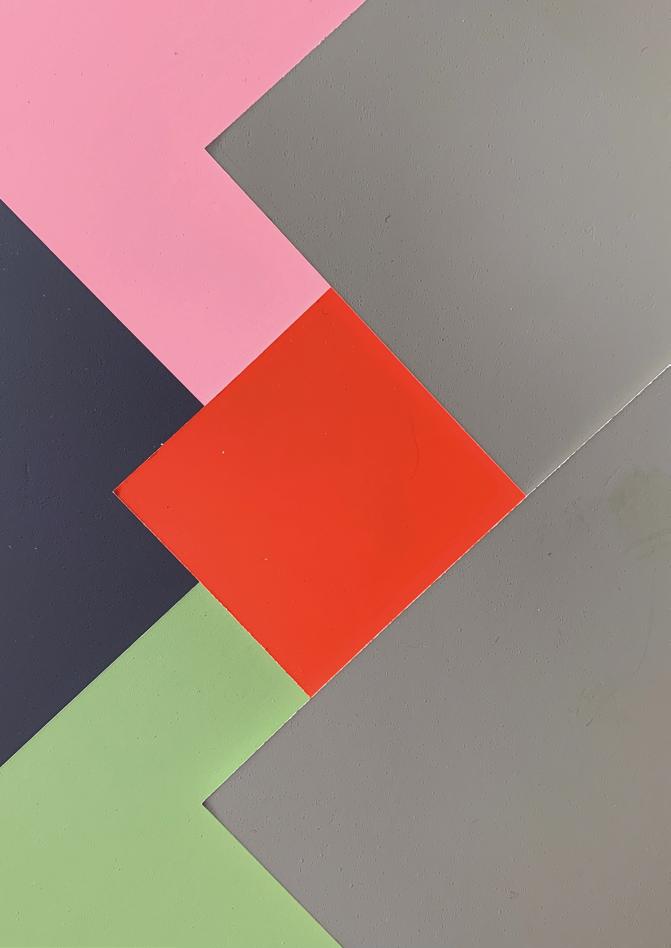
DESCRIPTION
A colorful protein packed fruit salad with a tart dressing. A different and nourishing way to enjoy fruit.
Keep fruit in the fridge until you use it .Cold fruit works best for this recipe.
INGREDIENTS
2 cups cooked white , red and black quinoa.
1 mango, peeled and diced.
1 cup strawberries, quartered
1 cup diced kiwi.
1/2 cup blueberries.
2 tablespoons pine nuts.
Chopped mint leaves.
Salad dressing:
1/4 cup olive oil.
1/4 cup apple cider vinegar.
Zest of 1 lemon.
3 tablespoons freshly squeezed lemon juice.
1 tablespoon honey.
METHOD:
To make the salad dressing: whisk together olive oil, apple cider vinegar, lemon zest and juice, and honey in a small bowl set aside.
In a large bowl, combine quinoa, mango, strawberries, blueberries, kiwi and pine nuts.
Add the dressing.
Garnish with mint leaves.
Serve immediately.

DESCRIPCIÓN
Una colorida ensalada de frutas llena de proteínas con un aderezo ácido. Una forma diferente y nutritiva de disfrutar de la fruta.
Guarda la fruta en la nevera hasta que la uses, la fruta fría es la mejor para esta receta.

INGREDIENTES
2 tazas de quinoa blanca, roja y negra cocida.
1 mango, pelado y cortado en dados.
1 taza de fresas cortadas en cuartos
1 taza de kiwi cortado en dados.
1/2 taza de arándanos.
2 cucharadas de piñones. Hojas de menta picadas.
Aderezo:
1/4 de taza de aceite de oliva.

1/4 de taza de vinagre de sidra de manzana. Ralladura de 1 limón.
3 cucharadas de zumo de limón recién exprimido. 1 cucharada de miel.
PREPARACIÓN:
Para hacer el aderezo de la ensalada: bate el aceite de oliva, el vinagre de sidra de manzana, la ralladura y el zumo de limón y la miel en un bol pequeño y resérvalo.
En un bol grande, combinar la quinoa, el mango, las fresas, los arándanos, el kiwi y los piñones. Añadir el aliño.
Adornar con hojas de menta. Servir inmediatamente

110 111
OTWO 35 / JUNE 2022 OTWO 35 / JUNE 2022
Guía rápida de: Cuba
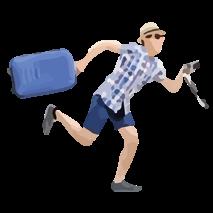
Cuba
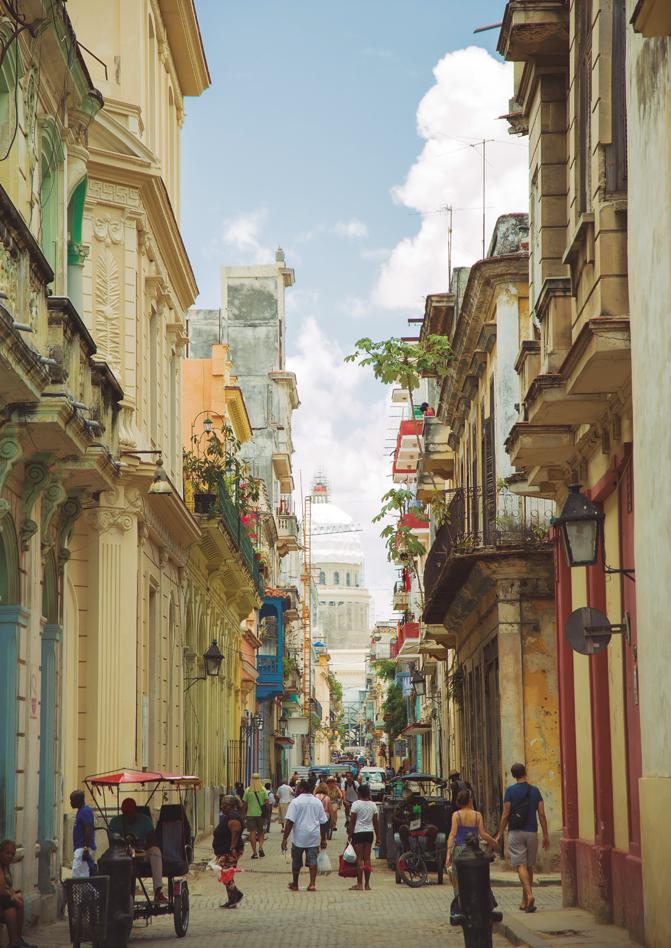
Language: Spanish.
Currency: Cuban Peso (CUP).
Capital: Havana.
Famous for: Rum. Rumba and Salsa. Colonial Architecture and beaches.
Some top places: Discover to colourful, vibrant Havana. Enjoy incredible beaches at Varadero. Explore Cuba’s lively second city, Santiago de Cuba. Hike, rock climb or go horse riding in the beautiful Valle de Viñales. Visit Matanza and discover authentic Cuban culture and its multicultural roots. Swim, snorkel or dive in the crystal-clear waters of Playa Girón
Take the scenic and unspoilt journey through lush mountains to Baracoa. Enjoy a variety of water activities in Cienfuegos zip-lining, climbing, caving, culture, gastronomy.

Activities: Water sports, hiking, sailing, kayaking, climbing, diving, culture, gastronomy.
Weather:
High Season (Nov & Mar, Jul to Aug) Busiest times. Shoulder (Apr & Oct) Warm weather, not as busy.
Low Season (May to Jun & Sep) Warm weather, cheaper, few tourists.
Eco fact: Cuba is home to more than 6,000 plant species, half of which cannot be found anywhere else in the world.
Eco resorts:
Budget: Hotel Moka Las Terrazas Eco Village from £50 per night (Las Terrazas Biosphere Reserve).
Mid: Melia Internacional Varadero from £170 per night (Varadero).
Luxury: Iberostar Parque Central from £200 per night (Havana).
Idioma: Español
Moneda: Peso Cubano (CUP).
Capital: Habana.
Famoso por: Ron. Rumba y Salsa. Arquitectura colonial y playas.
Algunos de los mejores lugares: Descubre colorido y vibrante Habana. Disfruta de las increíbles playas de Varadero. Explora la animada secunda cuidad de Cuba, Santiago de Cuba. Practica senderismo, escalada en roca o equitación en el bello Valle de Viñales. Visita Matanza y descubre autentica cultura cubana y sus origines multiculturales. Nadar, practica esnórquel o buceo en las aguas cristalinas de Playa Girón. Haz él viaja panorámico y virgen a través de exuberantes montañas hasta Baracoa Disfruta de una gran variedad de actividades acuáticas en Cienfuegos.
Actividades: Deportes acuáticos, senderismo, navegación, kayak, escalada en roca, buceo, cultura, gastronomía.
Clima:
Temporada alta (Nov y Mar, Jul a Ago) Mas turismo. Temporada intermedia (Abr y Oct) Clima cálido, no tanto turismo .
Temporada baja (May a Jun y Sep) Clima cálido, más económico, pocos turistas.
Hecho ecológico: Cuba alberga mas de 6.000 especies de plantas, la mitad de las cuales no se encuentran en ningún otro lugar del mundo.
Resorts ecológicos:
Económico: Hotel Moka Las Terrazas Eco Village desde £50 por noche (Las Terrazas Biosphere Reserve). Medio: Meliá Internacional Varadero desde £170 por noche (Varadero).
Lujo: Iberostar Parque Central desde £200 por noche (Havana).

112
OTWO 35 / JUNE 2022 OTWO 35 / JUNE 2022


directamente entre el operador y el cliente.
Precios válidos solo para el mes de junio, consulte para otras fechas.
Catálogo de Experiencias PRIMAVERA 22 SPRING-SUMMER CATALOG 22 Organized by: OTWO Magazine Tel. +00350 22500799 info@otwomag.com
available for groups. Check with us for your requirements. OTWO is a facilitator on these packages. All activities are contracted directly between the respective centre operator and the client. Prices are for the month of June only, please contact us for other dates.
Transport
Transporte disponible para grupos. Consultenos si estás interesado. OTWO es un mediador de estos paquetes. Todas las actividades se contratan
115 OTWO 35 / JUNE 2022
In2Adventures Stand Up Paddle Lessons
In2Adventures Clases de remo de pie (SUP)
We are a Gibraltar based adventure and activity company established in 2013. We promote the importance of a healthy lifestyle through fun-based activities tailored to our clients needs.
Our aim is to respectfully promote the amazing natural features of our environment. We work with a number of local charities and believe in the community. We encourage people to explore Gibraltar and enjoy the outdoors through our activities. Our Core values are based on combining adventure, the outdoors, education and fun.
Gibraltar has a fantastic caring community and at the core of In2adventures culture is an aim to help strengthen our Community. We work closely with charities to raise money for worthy causes and provide a platform for educating and inspiring young people.
“SUP” Lesson
Join us for a beginners SUP session to learn the basics from kneeling and to finally stand up paddle boarding. Once you have completed this session, you are able to join on other more advanced SUP adventures such as the Sunset and the SUP safari around the stunning southerly coastline of Gibraltar. This session is for people who are keen to develop paddling skills, learn the correct techniques and keep safe on the water.
SUP Certificate included for completing the lesson. 2 HOURS
INCLUDES: Board, Paddle & instructor.
MAY WE RECOMMEND:Buoyancy Aid £5 per guest per hour. Wet suit £5 per guest per hour.
£35 PER PERSON

Somos una empresa de aventura y actividades con sede en Gibraltar establecida en 2013. Promovemos la importancia de un estilo de vida saludable a través de actividades basadas en la diversión y adaptadas a las necesidades de nuestros clientes. Nuestro objetivo es promover respetuosamente las increíbles características naturales de nuestro entorno. Trabajamos con varias organizaciones benéficas locales y creemos en la comunidad. Animamos a la gente a explorar Gibraltar y a disfrutar del aire libre a través de nuestras actividades. Nuestros valores fundamentales se basan en la combinación de la aventura, el aire libre, la educación y la diversión. Gibraltar cuenta con una fantástica comunidad solidaria y en el centro de la cultura de In2adventures está el objetivo de ayudar a fortalecer nuestra Comunidad. Trabajamos estrechamente con organizaciones benéficas para recaudar fondos para causas dignas y proporcionamos una plataforma para educar e inspirar a los jóvenes.
Clases de “SUP”
Acompáñanos en nuestras clases de SUP para principiantes, para aprender los fundamentos desde el arrodillamiento hasta el stand up paddle boarding. Una vez que hayas completado esta sesión, podrás unirte a otras aventuras de SUP más avanzadas, como la puesta de sol y el safari de SUP alrededor de la impresionante costa del sur de Gibraltar. Esta sesión es para personas que quieren desarrollar sus habilidades de remo, aprender las técnicas correctas y mantenerse seguras en el agua. Certificado SUP incluido por completar la clase.
2 HORAS
INCLUYE: Tabla, remo e instructor.
PODEMOS RECOMENDAR: Chaleco salvavidas 5 libras por persona y hora. Traje de neopreno £5 por huésped por hora.

Jimmy Gracia
Jimmy is an outdoors man and is qualified as an instructor in many adventure activities. A keen mountaineer and also a qualified paddle sport coach, his teaching technique is first class. Following a full successful career in the military he developed his outdoor instructor skills and trained in the outdoor industry in Cornwall. He has been on numerous expeditions around the world including high altitude mountaineering in the Himalayas and paddle boarding across the Straights of Gibraltar.
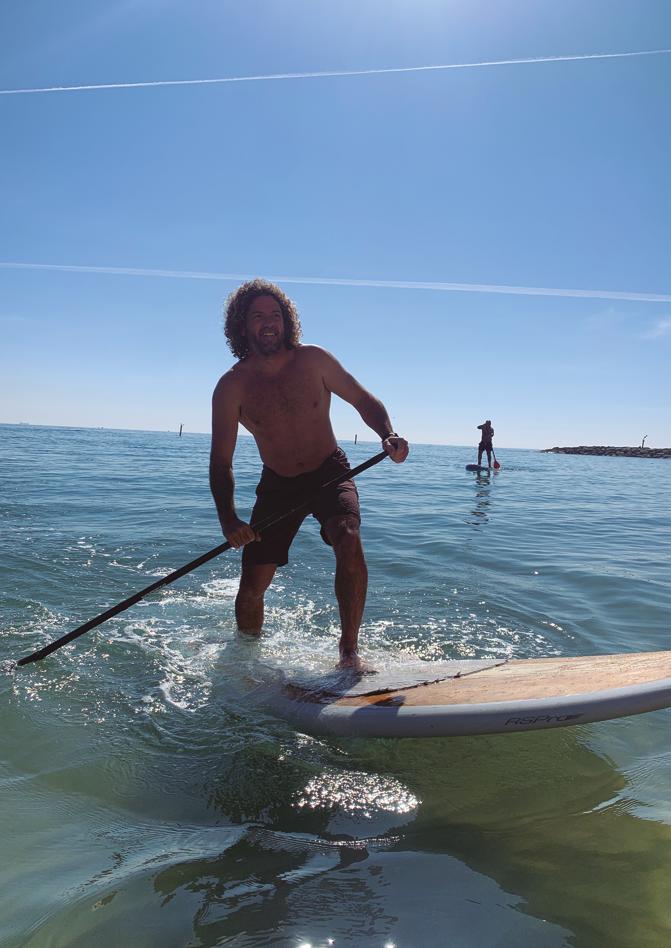
Jimmy Gracia
Jimmy es un hombre del aire libre y está cualificado como instructor en muchas actividades de aventura. Es un montañero entusiasta y también un entrenador cualificado de deportes de remo, su técnica de enseñanza es de primera clase. Tras una exitosa carrera en el ejército, desarrolló sus habilidades como instructor de actividades al aire libre y se formó en la industria de las actividades al aire libre en Cornualles. Ha participado en numerosas expediciones por todo el mundo, incluyendo montañismo de gran altitud en el Himalaya y paddle boarding a través del Estrecho de Gibraltar.
OTWO 35 / JUNE 2022 117 116 OTWO 35 / JUNE 2022
35 LIBRAS POR PERSONA
EBikes Group Tours
Gibraltar

EBIKES GROUP TOURS
Gibraltar
Enjoy breath taking views across 3 countries and 2 continents, explore Gibraltar’s fascinating history and be introduced to our most famous inhabitants, the Barbary macaques – the only free roaming monkeys in Europe!
Price: £69 per person.
Highlights
Europa Point and Lighthouse. Upper Rock Nature Reserve.
Pillars of Hercules Monument.
Windsor Suspension Bridge. O’Hara’s Battery (top of Rock 424m). Skywalk.
Ape’s Den.
Great Siege Tunnels. Moorish Castle. …And many more.
What’s included?
Premium e-bike by Riese&Müller. Cycle helmet. Safety instructions.
Entrance fee into the Nature Reserve. An official tour guide. Bottled water.
DURATION:
3 hours. Suitable for everyone over 155 cm, over 12 years old and capable of riding a bicycle.
GROUP TOURS
Gibraltar
Disfrute de las impresionantes vistas de 3 países y 2 continentes, explore la fascinante historia de Gibraltar y conozca a nuestros habitantes más famosos, los macacos de Berbería, ¡los únicos monos que se desplazan libremente en Europa!
Precio: £69 por persona.
Puntos destacados
Punta de Europa y el Faro
Reserva Natural Upper Rock (Parte superior del peñon)
Monumento de las Columnas de Hércules
Puente colgante de Windsor
Bateria de O’Hara (parte superior del peñon - 424m).
El Skywalk
Guarida de los monos
Gran túneles de asedio
Castillo Arabé. …y muchos más
¿Qué está incluido?
Alta calidad E-bike de Riese&Müller. Casco de bicicleta
Instrucciónes de seguridad
Entrada a la reserva natural Guía oficial Agua embotellada.
DURACIÓN:
3 horas. Adecuadas para todos los que midan más de 155 cm, tengan más de 12 años de edad y puedan montar en bicicleta.
Organized by: OTWO Magazine
Tel. +00350 22500799
info@otwomag.com
Transport available for groups.Check with us for your requirements.
OTWO is a facilitator on these packages. All activities are contracted directly between the respective centre operator and the client.
Organized by: OTWO Magazine
Tel. +00350 22500799
info@otwomag.com
Transporte disponible para grupos.
Consultenos si estás interesado.
OTWO es un mediador de estos paquetes. Todas las actividades se contratan directamente entre el operador y el cliente.
118
119
OTWO 35 / JUNE 2022 OTWO 35 / JUNE 2022
Emotions are a set of physical or bodily reactions to an external stimulus (seeing, hearing, tasting...) or an internal stimulus (thinking, remembering, imagining...) that are unconscious, intense and uncontrollable and that take us out of our “normal” state in which we live. They motivate us, stimulate us and push us to react.
If we add a thought to an emotion, it becomes a feeling, as long as we are able to become aware of it.
From an early age, we have not been taught to love and care for our roots. I speak of roots because that is where we come from, we are all part of Nature.
We have survived this time trying to fit into our society, without being able to be ourselves or what is much worse, without dedicating moments to feel. Nothing is permanent, everything changes, we are in continuous movement, led by stress, work, schedules?
Do you want to know what Nature has to do with all this?
Nature does not demand you to be valid or to make the grade, for her you are one more, being a wise pupil, you can arrive without calling or stay as long as you need, it is your house, your home ... your inner forest.
The way is towards NATURE! Everything we need comes from her, water, oxygen, food, plants, medicine.
The Forest Bath is a reconnection with nature through the senses, walk a few kilometers, with a duration of 2 to 3 hours, letting your intuition flow following my advice.
The regular contact with the Forest Baths, scientifically proven, improves mental and physical health and increases the immune system, walking among the plants and trees causes your blood pressure to lower, reduces depression and stress, improves creativity and all this is due to the essential oils of plants and trees that are transmitted through the air, and that prevent them from germs, this benefit also falls on ourselves.
It is not necessary to have physical preparation, just have time for the appointment with oneself, we must break the hyperconnection with daily tasks and stress, get out of that wheel will make everything better, following the rhythm that nature marks us; a slow and calm pace, allowing us to appreciate the details, sounds, textures, smells and sensations.
Forest Baths
Baños de Bosque

Raquel Collante

Las emociones son un conjunto de reacciones físicas o corporales ante un estímulo externo (ver, oír, saborear…) o interno (pensar, recordar, imaginar…) inconscientes, intensas e incontrolables que nos sacan de nuestro estado “normal” en el cual vivimos. Nos motivan, nos sirven de estímulo y nos empujar a reaccionar.
Si a una emoción le añadimos un pensamiento, se convierte en un sentimiento, siempre que seamos capaces de tomar conciencia de ello.
Desde pequeños no nos han enseñado a amar y cuidar nuestras raíces. Hablo de raíces porque es de dónde venimos, todos somos y formamos parte de la Naturaleza. Hemos sobrevivido este tiempo buscando encajar en nuestra sociedad, sin poder ser uno mismo o lo que es mucho peor, sin dedicarnos momentos para sentir. Nada es permanente, todo cambia, estamos en continuo movimiento, liderado por el estrés, el trabajo, los horarios… ¿Quieres saber que tiene que ver la Naturaleza en todo esto?
La Naturaleza no te exige ser válida o dar la talla, para ella eres una más, siendo una alumna sabia, puedes llegar sin llamar o quedarte el tiempo que te haga falta, es tu casa, tu hogar….tu bosque interior
¡El camino es hacia la NATURALEZA! Todo lo que necesitamos proviene de ella, agua, oxigeno, alimentos, plantas, medicinas
Potencia el sentido de lo natural, el Baño de Bosque es una reconexión con la naturaleza mediante los sentidos, pasear pocos kilómetros, con una duración de 2 a 3 horas, dejando a tu intuición fluir siguiendo mis consejos.
El contacto regular con los Baños de Bosques, científicamente probado, mejora la salud mental, física y aumenta el sistema inmunológico, pasear entre las plantas y los arboles provoca que tu tensión arterial baje, reduce la depresión y el estrés, mejora la creatividad y todo ello se debe a los aceites esenciales de plantas y árboles que se trasmiten a través del aire, y que previenen a estos de los gérmenes, este beneficio también recae en nosotros mismos.
No es necesario tener preparación física, solo disponer del tiempo para la cita con uno mismo, hay que romper la hiperconexion con las tareas diarias y el estrés, salir de esa rueda va a hacer que todo mejore, siguiendo el compás que la Naturaleza nos marca; un ritmo lento y sosegado, nos permita apreciar los detalles, los sonidos, las texturas, olores y sensaciones.
120
121
OTWO 35 / JUNE 2022 OTWO 35 / JUNE 2022
Forest Bath in Pinar del Rey
Baño de Bosque en el Pinar del Rey.


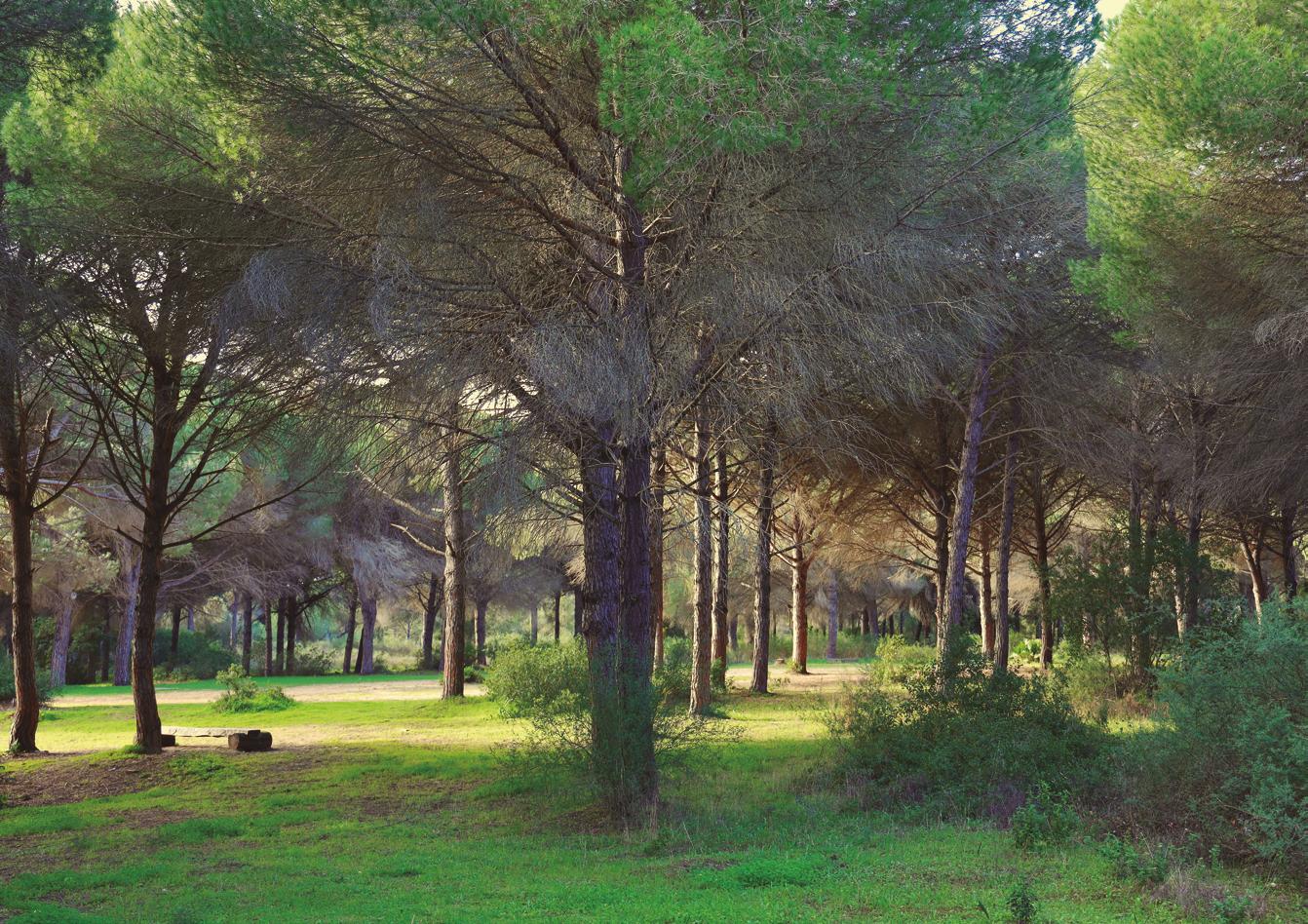
In the Natural Park Los Alcornocales, the Pinar del Rey is located between the municipalities of San Roque and Castellar de la Frontera, in Cadiz.
Its origin dates back to 1800, this place was chosen to plant pine trees (Pinus Pinea) brought from Vejer de la Frontera, and thus obtain wood for the construction of ships.
It currently consists of a recreational area with a picnic area and barbecues, the Alhaja stream, the Nature Classroom and a botanical garden. In addition, there are two trails: El Cerro del Águila and Tajo del Pajarraco.
A peculiar place, with a mild climate, and a migratory bird route. Its environmental conditions make it a paradise for flora. We can even see some plants that only occur in northern Spain and the Canary Islands. We will walk through a mixed forest, with cork oaks, gall oaks, poplars, alders and ash trees, with a wide variety of botanical species, some of them endangered. In addition, of course we will discover its rich and varied fauna.
In addition, the Pinar del Rey, was part of a sandy seabed settlement, so we can easily find shells and marine pieces.
Discover the cumulative effect that nature has, the nuances in which you had never noticed, the calm that offers a place with so much magic.
To begin the activity we will leave the car at the end of the parking lot of the recreational area of Pinar del Rey (San Roque), it is important to bring water, sunscreen, (optional mat for floor and camera).
Duration: 2 to 3 hours.
Minimum and maximum number of participants: 5 to 15 people
Dates: Any season of the year.
Maximum distance: 2 kilometers.
Important: Notify any food allergies.
Prices: 20£ /person. (RC and accident insurance included).
En el Parque Natural Los Alcornocales, se ubica el Pinar del Rey entre los términos municipales de San Roque y Castellar de la Frontera, en Cádiz.
Su origen se remonta a 1800, este lugar fue elegido para plantar ejemplares de pinos piñoneros (Pinus Pinea) traídos desde Vejer de la Frontera, y obtener así madera para la construcción de navíos.
Actualmente consta de un área recreativa con una zona de picnic y barbacoas, el arroyo de Alhaja, el Aula de Naturaleza y un jardín botánico. Además, existen dos senderos: El Cerro del Águila y el Tajo del Pajarraco.
Un lugar peculiar, de clima suave, y paso de ruta de aves migratorias. Sus condiciones ambientales lo convierten en un paraíso para la flora. Incluso podemos ver algunas plantas que únicamente se dan en el norte de España y en las Islas Canarias. Recorreremos un bosque mixto, con alcornoques, quejigos, álamos, alisos y fresnos, con una extensa variedad de especies botánicas, algunas de ellas amenazadas. Y por supuesto descubriremos su rica y variada fauna.
Además, el Pinar del Rey, formó parte de un asentamiento arenoso de fondos marinos, con lo cual podremos encontrar fácilmente conchas y piezas marinas. Descubre el efecto acumulativo que tiene la naturaleza, los matices en los que nunca te habías fijado, la calma que ofrece un lugar con tanta magia.
Para comenzar la actividad dejaremos el coche al final del aparcamiento de la zona recreativa del Pinar del Rey (San Roque), es importante llevar agua, protección solar, (opcional esterilla para suelo y cámara de fotos).
Duración: 2 a 3 horas.
Mínimo y máximo de participantes:. 5 a 15 personas.
Fechas: Cualquier estación del año. Distancia máxima: 2 kilómetros.
Importante: Informar de alergias alimenticias .
Precios: 20£ /persona.
(Seguro RC y accidentes incluidos),
122
123
Photographs: Juan Luis González
OTWO 35 / JUNE 2022 OTWO 35 / JUNE 2022
Monarch Butterfly Trail
Sendero de la Mariposa Monarca
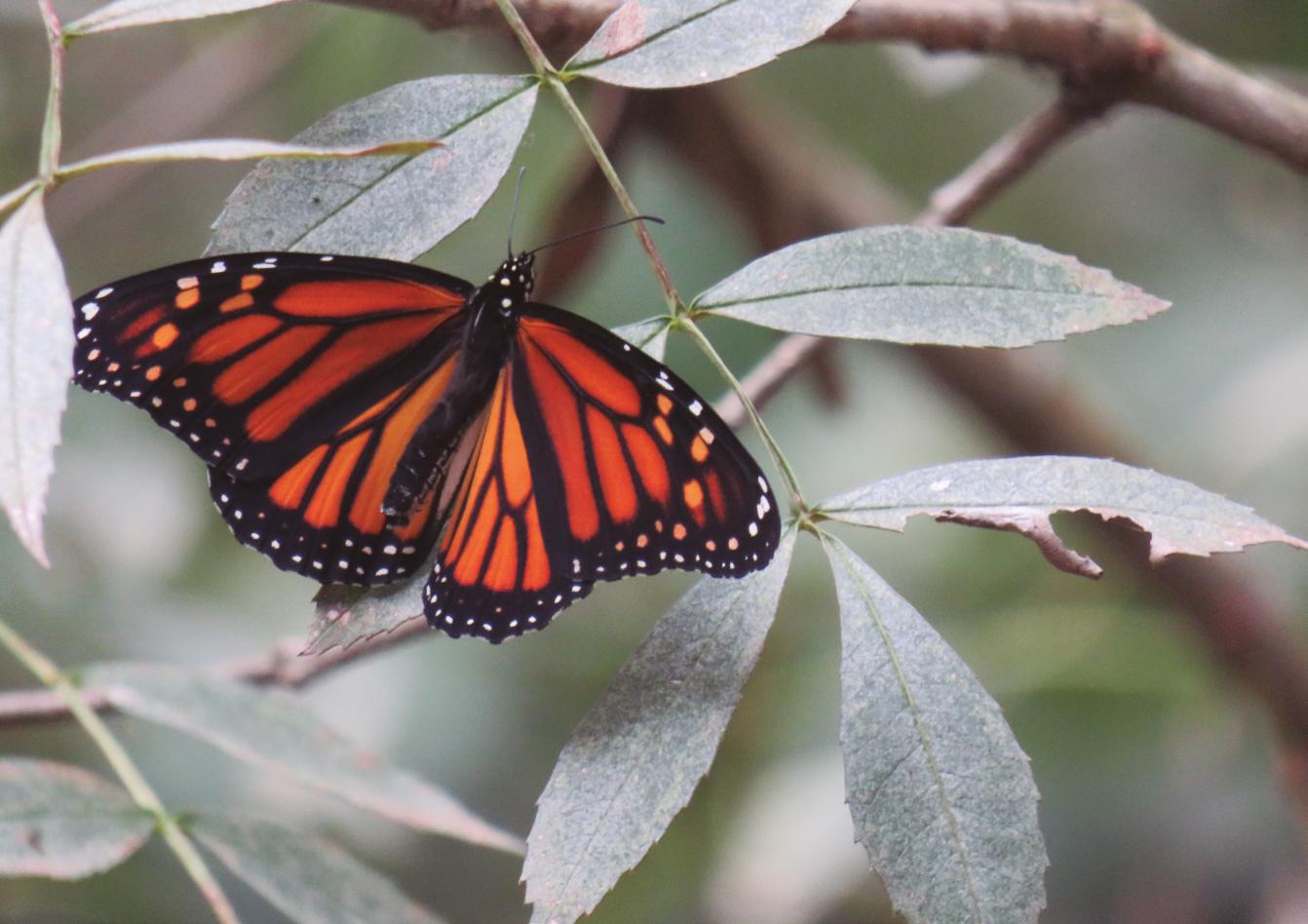
A magical route, the presence of the Monarch butterfly (Danaus plexippus) in any of its cycles, the contact of a large part of the trail with the Guadarranque River, the undergrowth and riparian forest, as well as the milkweed plant on which the butterfly feeds. Millenary and centennial trees will give us shelter under their branches in a charming old meadow.
The vision of the Castle of Castellar, a fortress that was part of the defense system of the Kingdom of Granada, one of many charms of the region. To your right, the Sierra del Endrinal in its entirety, highlighting the Simancón and the Clock.
In addition, it is possible to see herons, cormorants, deer, wild boar... All this combined makes this a perfect route to enjoy with the family.
Location: Los Alcornocales Natural Park, municipal of Castellar de la Frontera.
Difficulty: Low.
Recommended date: Spring, Autumn and Winte r.
Duration: 6 hours approximately.
Distance: 14km approx.
Place of departure: Parking Venta la Cantina. Comfortable clothing and footwear required.
Route: Circular.

Una ruta mágica, la presencia de la mariposa Monarca (Danaus plexippus) en cualquiera de sus ciclos, el contacto gran parte del sendero con el rio Guadarranque, el sotobosque y bosque de ribera, así como la planta del algodoncillo de la cual se alimenta dicha mariposa.
Árboles milenarios y centenarios nos darán cobijo bajo sus ramas en una antigua dehesa llena de encanto.
La visión del Castillo de Castellar, una fortaleza que formó parte del sistema de defensa del Reino de Granada uno de los encantos de la comarca. A su derecha la Sierra del Endrinal al completo, destacando el Simancón y el Reloj.
Además, es posible ver garzas, cormoranes, ciervos, jabalíes …Todo hace que sea una ruta perfecta para disfrutar en familia.
Localización: Parque Natural Los Alcornocales, termino municipal de Castellar de la Frontera.
Dificultad: Baja.
Fecha recomendada: Primavera, otoño e invierno.
Duración: 6 horas aproximadas
Distancia: 14 km aproximados.
Lugar de partida: Aparcamiento Venta la Cantina. Ropa y calzado: vestimenta y calzado de campo.
Ruta: Circular
Precio: 10€

124
125 OTWO 35 / JUNE 2022 OTWO 35 / JUNE 2022
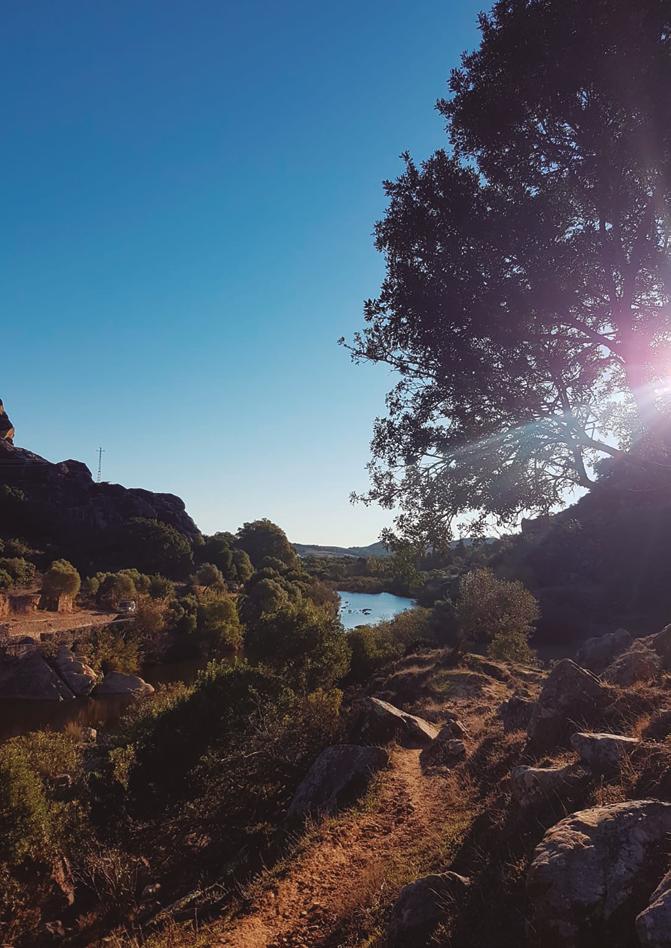
Camping Jimena de la Frontera. Asomadillas Viewpoint. Hozgarganta River.
Camping Jimena de la Frontera. Mirador de las Asomadillas. Rio Hozgarganta.
The Hozgarganta River, one of the many charms of the town of Jimena de la Frontera, the Roman road, the viewpoint of the Asomadillas, the Royal Pump Factory ... are places that will be present on this route, thus enjoying, in addition to the nature of a few moments of historical and cultural content.
We will be able to see a diversity of birds and highlight the presence of wild orchids on our way in addition to the rich diversity of flora in the area.
Location: Los Alcornocales Natural Park, municipality of Los Barrios.
Duration: 3 hours approximately.
Distance: 9 km approx.
Starting point: Parking lot of Los Alcornocales campsite.
Clothing and footwear: country clothing and footwear.
Authorization: No.
Route: Circular.
Difficulty: Low (suitable for children from 6 years old)
Date: Spring, autumn and winter.
Price: 10€.

El Rio Hozgarganta, uno de los muchos encantos de la población de Jimena de la Frontera, la calzada romana, el mirador de las Asomadillas, la Real Fábrica de Bombas …son lugares que van a estar presentes en esta ruta, disfrutando así, además de la Naturaleza de unos momentos de contenido histórico y cultural.
Podremos avistar diversidad de aves y destacar la presencia de orquídeas silvestres en nuestro camino además de la rica diversidad de flora de la zona.
Localización: Parque Natural de los Alcornocales, termino municipal de Los Barrios.
Duración: 3 horas aproximadas.
Distancia: 9 km aproximados.
Lugar de partida: Aparcamiento del camping Los Alcornocales.
Ropa y calzado: vestimenta y calzado de campo
Autorización: No.
Ruta: Circular.
Dificultad: Baja (apta para niños a partir de 6 años).
Fecha: primavera, otoño e invierno.
Precio: 10€.
126
127
OTWO 35 / JUNE 2022 OTWO 35 / JUNE 2022
ADVENTURE IN LOS ALCORNOCALES CANYONING IN “LAS BUITRERAS”

Our adventure takes place in one of the most emblematic Natural Parks of Andalusia: Los Alcornocales Natural Park. Located in the municipality of Cortes de la Frontera. This canyon is known as the Cathedral of the Andalusian canyons.
The canyoning consists of the descent of a river, normally in its high section, where due to the erosion it models the river with very diverse forms where we will have to improvise handrails, jumps or rappels.
It is valued as a level 2 canyon, due to its duration, physical and technical hardness. This canyon is considered as the cathedral of the canyons of Andalusia due to its spectacular and verticality of its walls.
For the adventure, we will have all the necessary technical material: 5 mm wetsuits, harness, helmet, and collective technical material for the descent.
The Ravine
The Guadiario River as it passes through Cortes de la Frontera has excavated an impressive canyon known as “Las Buitreras”. Its name is due to the high population of vultures that nest in its entrances. We start with a vertiginous downhill trail to the Puente de los Alemanes. The adventure is a constant climbing, rappelling, sliding, jumping... It carries water even in summer and you have to swim for several stretches. During the tour, we will pass through areas so narrow and closed that we will go practically in the dark.
It is necessary to carry food in the watertight boats to replenish strength. With a final trail of 40 minutes will take us to the vehicles near the power plant of El Colmenar.
Duration: Canyoning: 6 to 7 hours. Minimum/Maximum number of participants: 6/10 participants.
Recommended Dates: Late spring, summer and early fall.
Services: Specialized monitors and equipment. All technical material. First aid kit. RC and accident insurance. Photographic and video coverage.
Pricing: Complete adventure..........50€
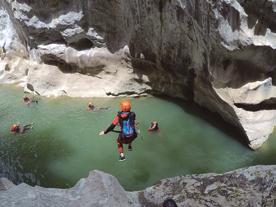

129 128
OTWO 35 / JUNE 2022 OTWO 35 / JUNE 2022
AVENTURA EN LOS ALCORNOCALES CAÑÓN DE LAS BUITRERAS
Nuestra aventura se realiza en uno de los Parques Naturales más emblemáticos de Andalucía: Parque Natural de los Alcornocales. Situado en el municipio de Cortes de la Frontera. Este barranco es conocido como La Catedral delos barrancos de Andalucía.
El barranquismo consiste en el descenso de un río, normalmente en su tramo alto, donde debido a la erosión modela el río con formas muy diversas donde tendremos que improvisar pasamanos, saltos o ráppeles.
Está valorado como un barranco de nivel 2, debido a la duracíón, dureza física y técnica del mismo. Este cañón es considerado como la catedral de los barrancos de Andalucía debido a su espectacularidad y verticalidad de sus paredes.
Para la aventura se dipondrá de todo el material técnico necesario: neoprenos 5 mm, arnés, casco, y material técnico colectivo para el descenso.
El Barranco.
El Río Guadiario a su paso por Cortes de la Frontera ha excavado un cañón impresionante conocido como el de “Las Buitreras”. Su nombre se debe a la alta población de buitres que anidan en sus entrantes.
Comenzamos con un sendero vertiginoso de bajada hasta el Puente de los Alemanes. La aventura es un constante trepar, rapelar, toboganear, saltar… Lleva agua incluso en verano y hay que nadar durante varios tramos. Durante el recorrido pasaremos por zonas tan estrechas y cerradas que iremos prácticamente a oscuras.
Es necesario llevar comida en los botes estancos para reponer fuerzas. Con un sendero final de 40 minutos nos llevará a los vehículos cerca de la central eléctrica de El Colmenar.

Duración: Barranquismo: 6 a 7 horas. Mínimo/Máximo de participantes: 6/10 participantes.
Fechas Recomendadas: Finales de final de primavera, verano y principios de otoño. Servicios: Monitores y equipos especializados. Todo el material técnico. Botiquín primeros auxilios. Seguros RC y Accidentes. Reportaje fotográfico y vídeos.
Precio: Aventura completa……….50€
131 130
OTWO 35 / JUNE 2022 OTWO 35 / JUNE 2022
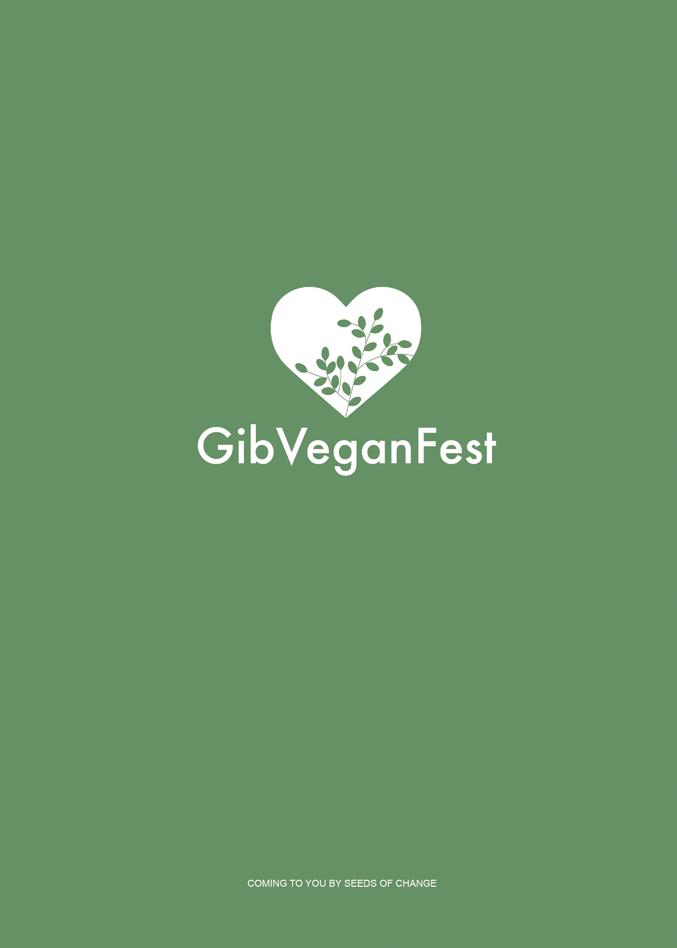


















 Dr Keith Bensusan Director
Dr Keith Bensusan Director







































































































